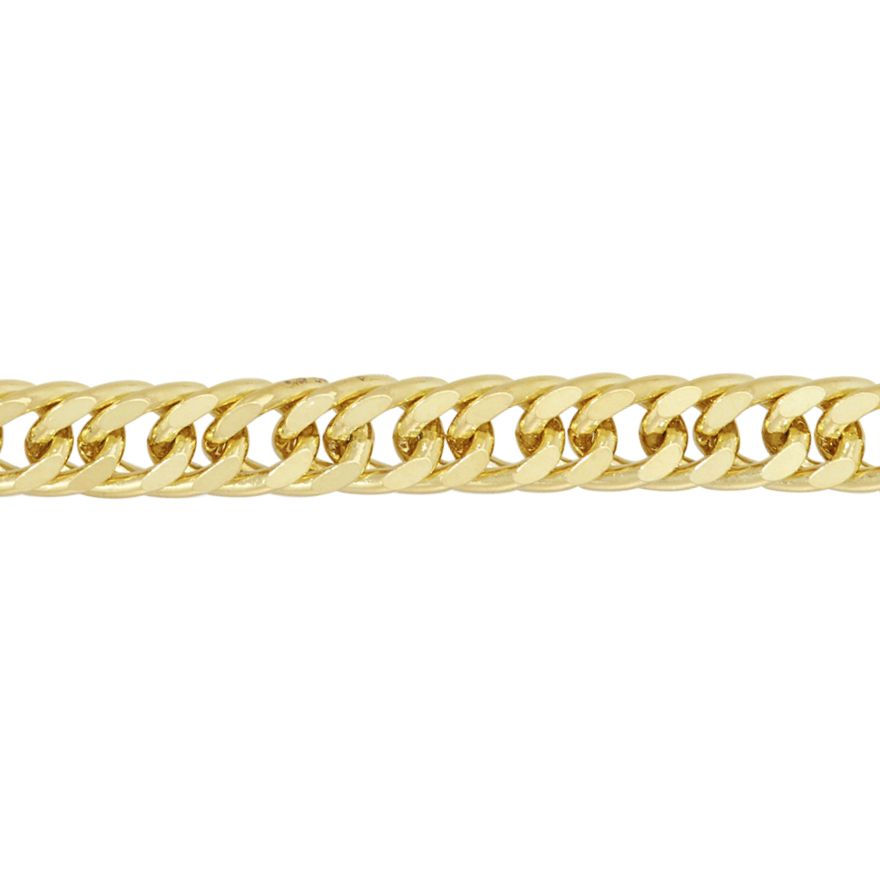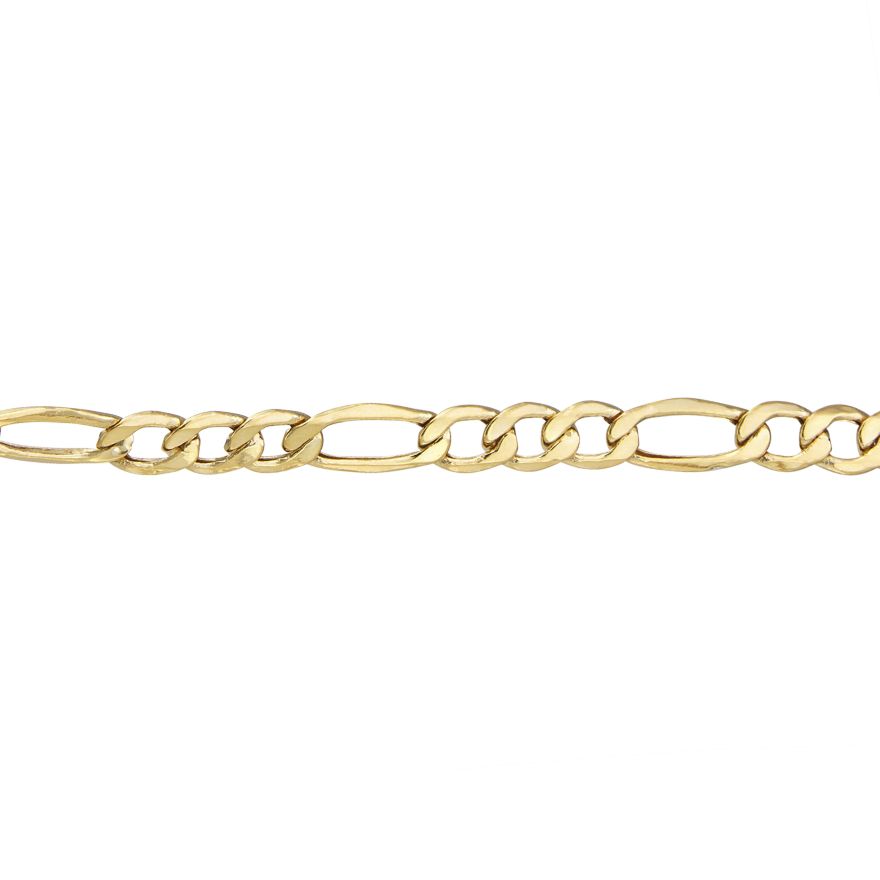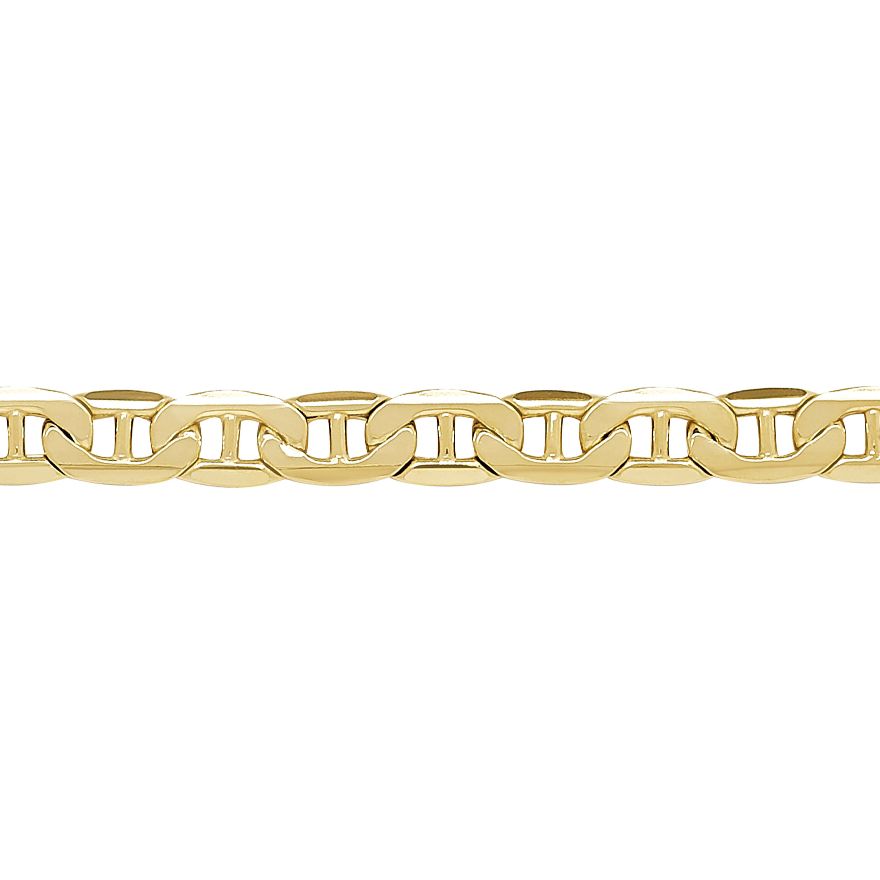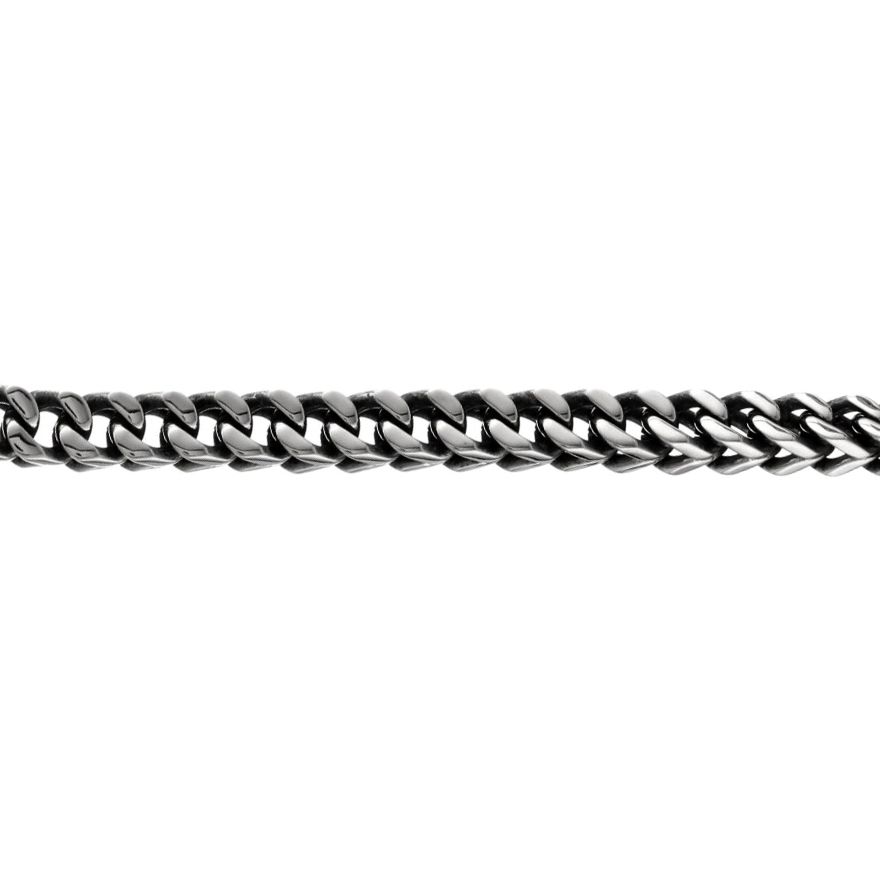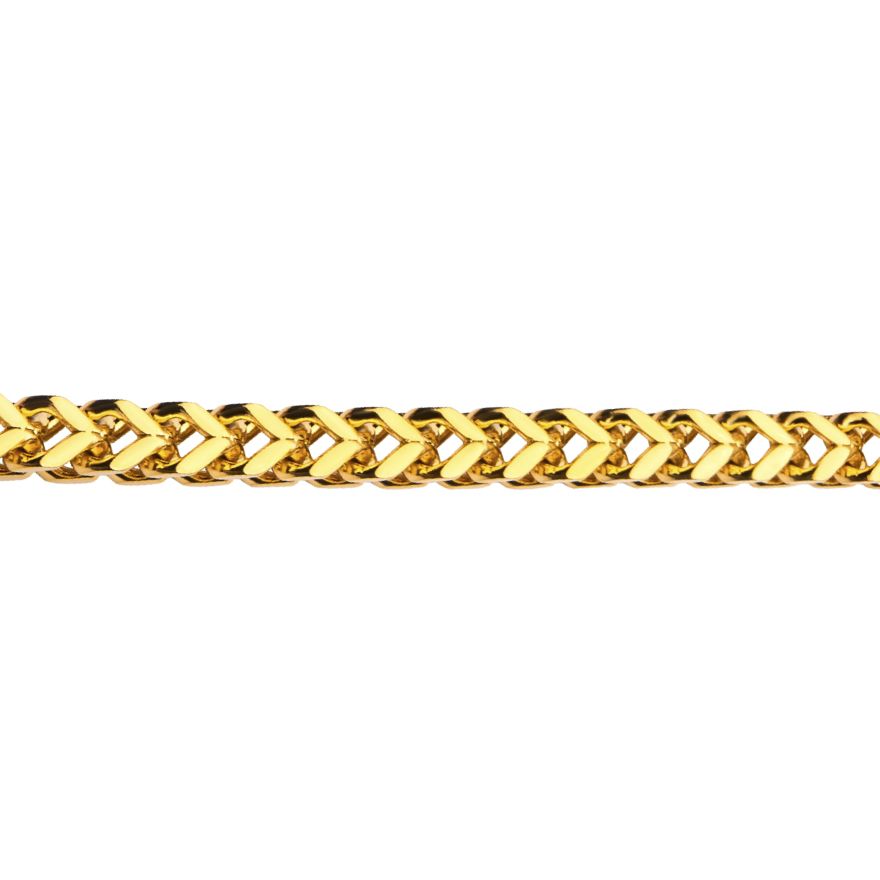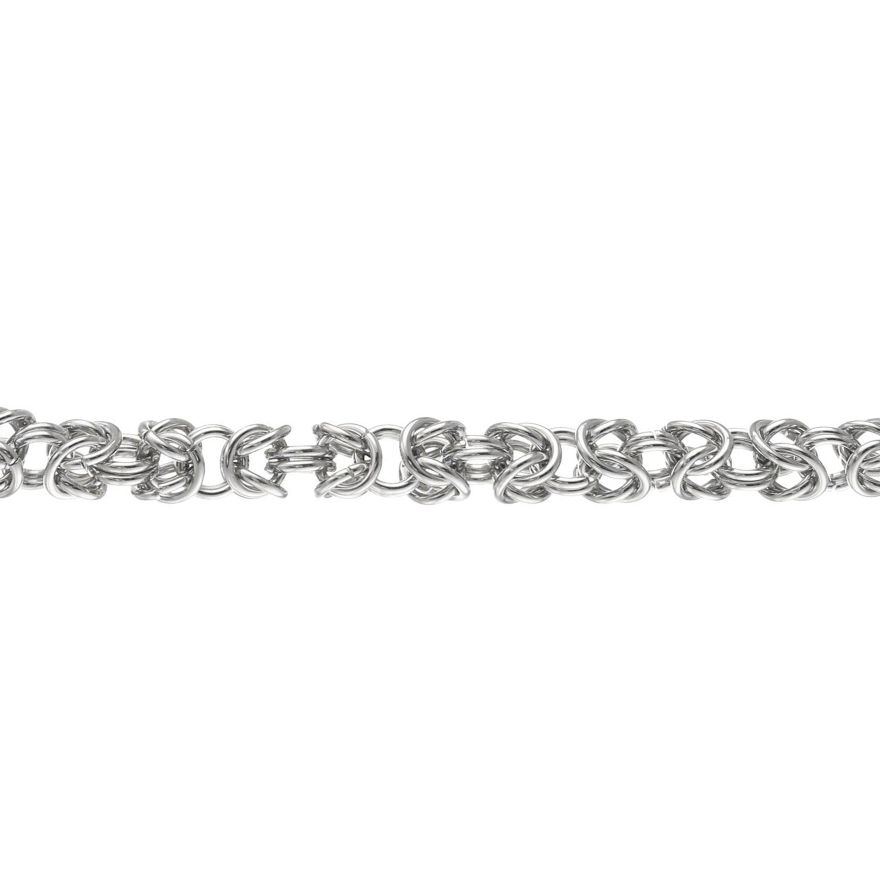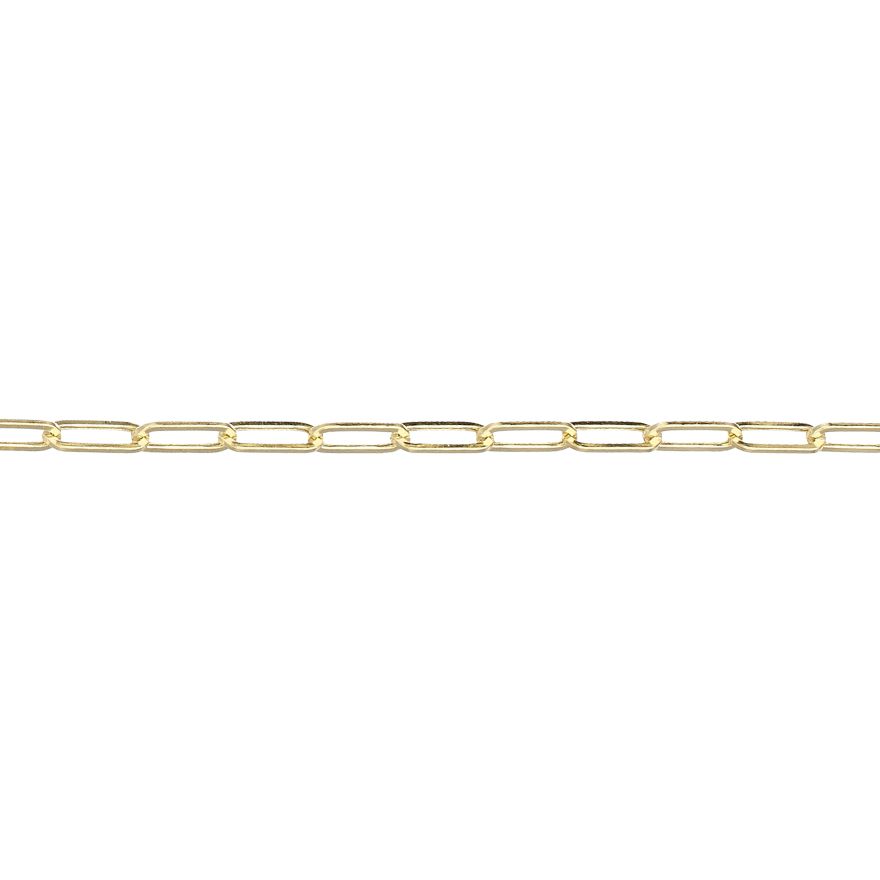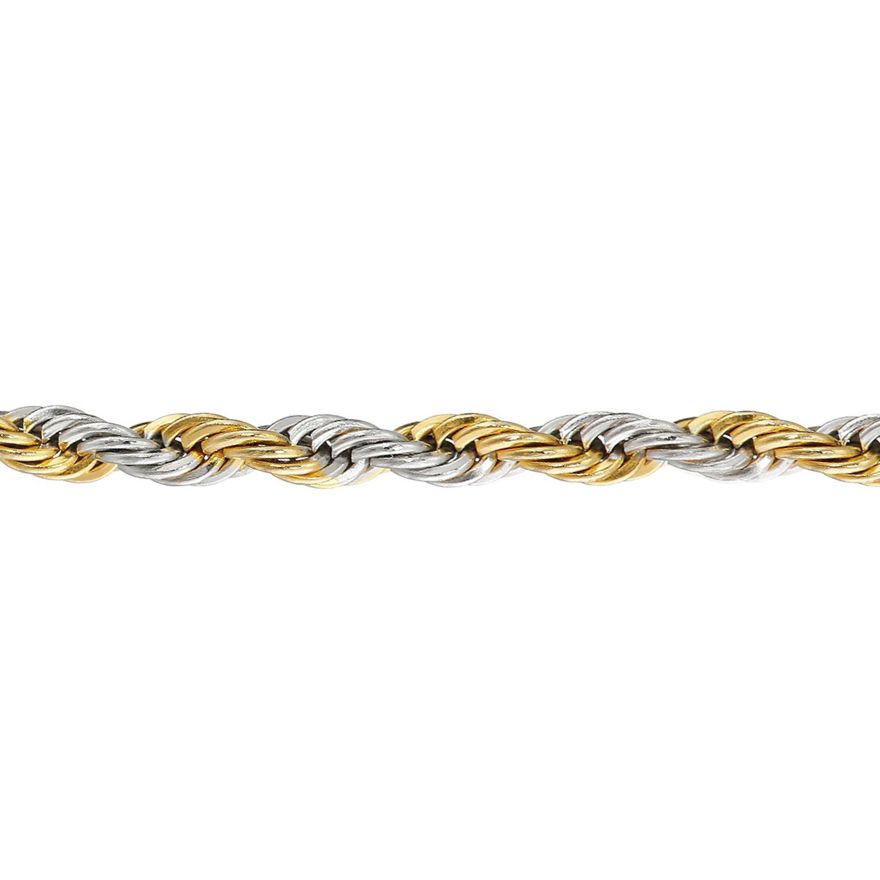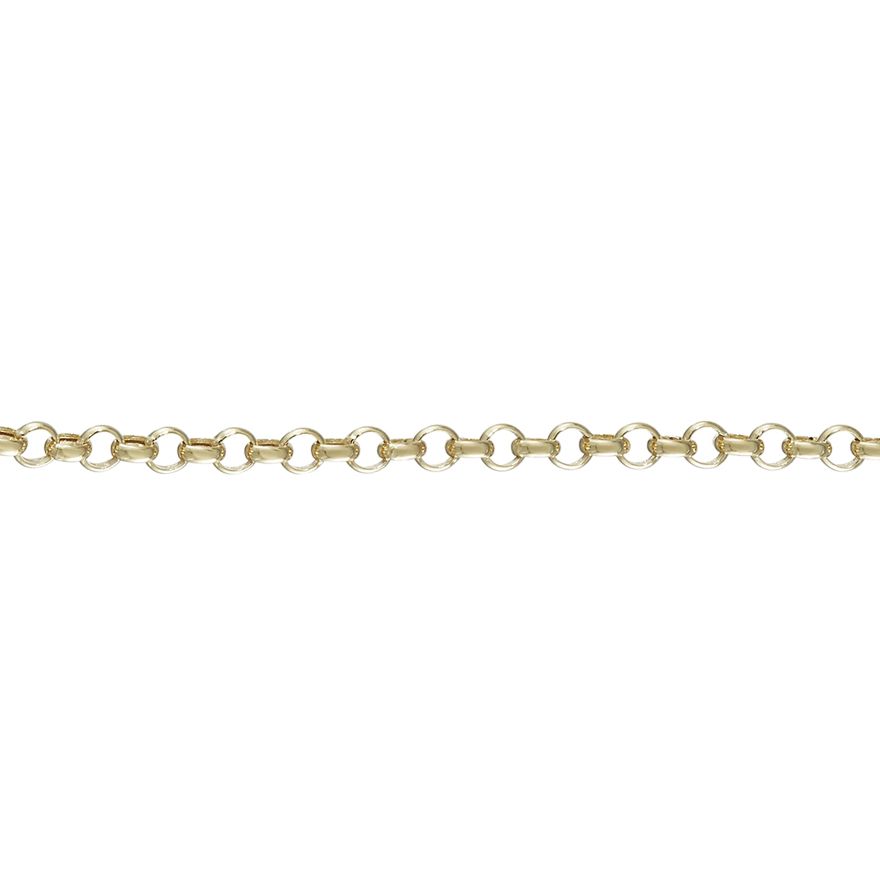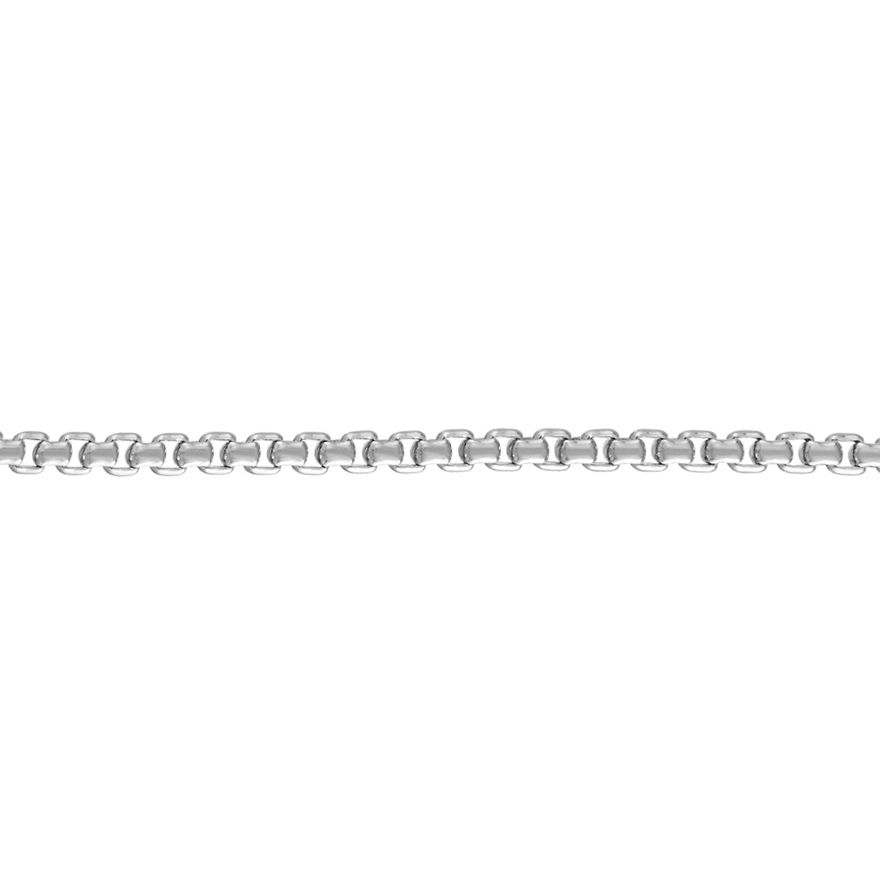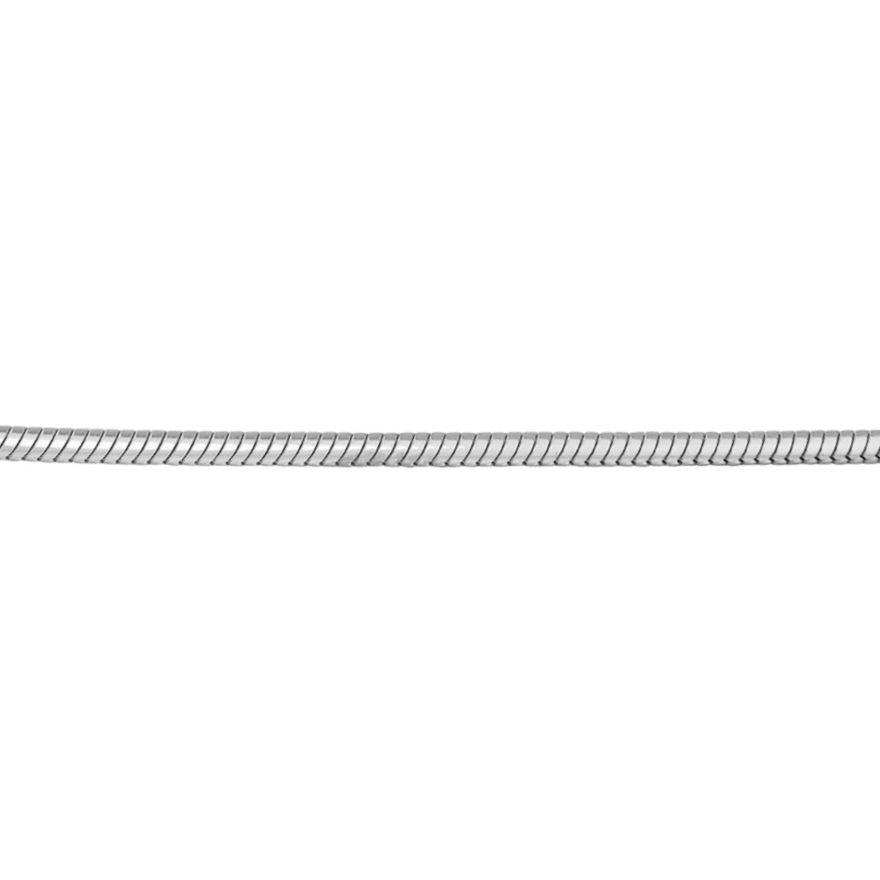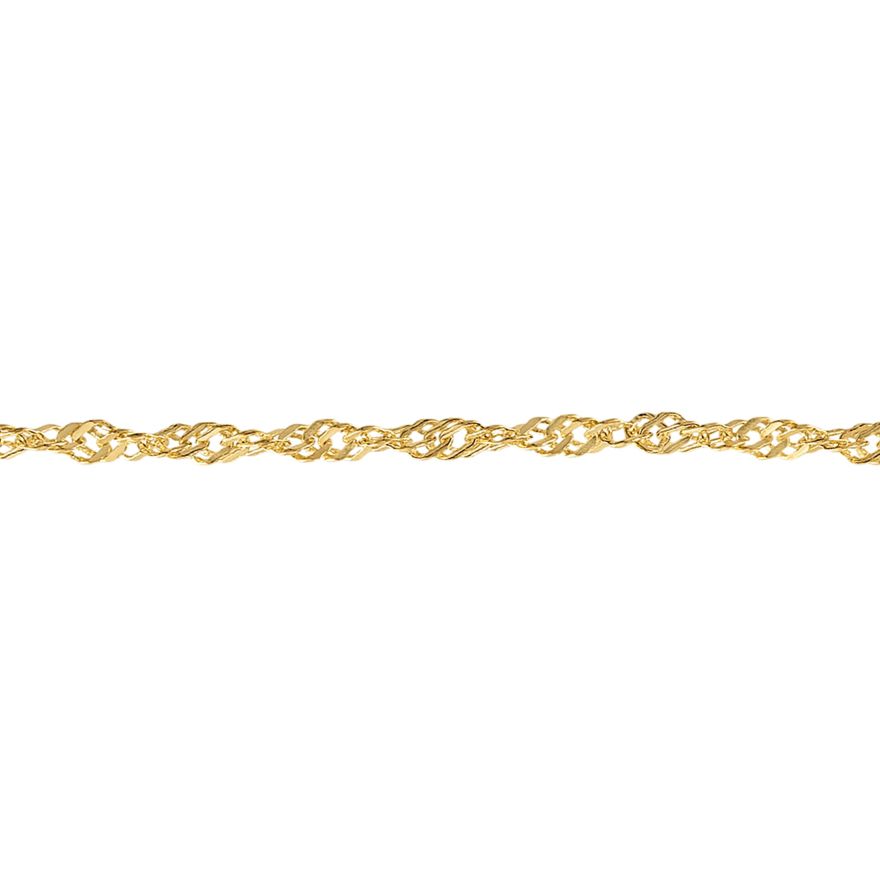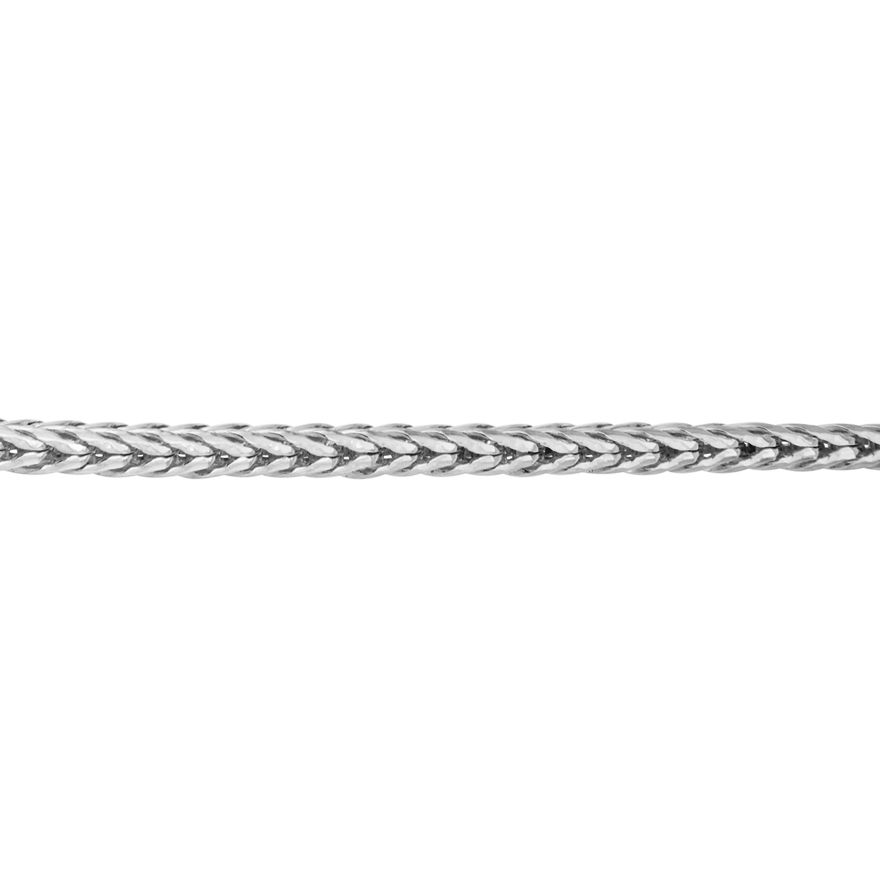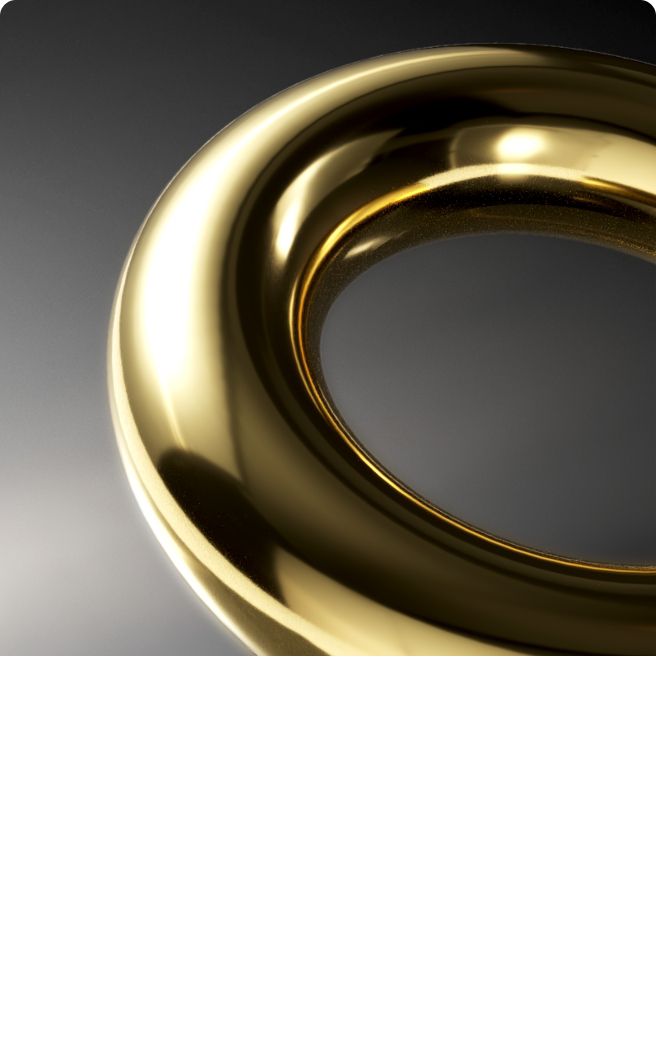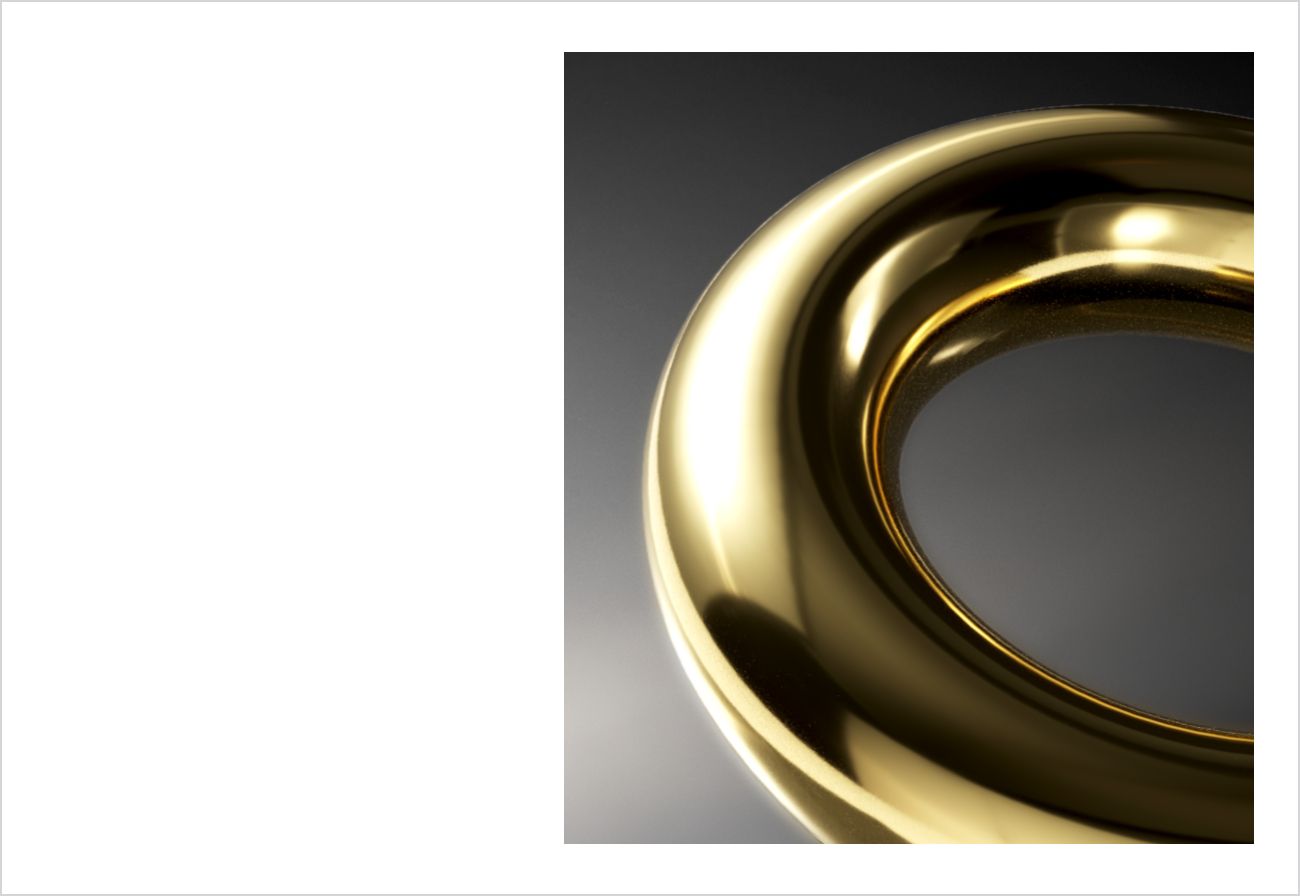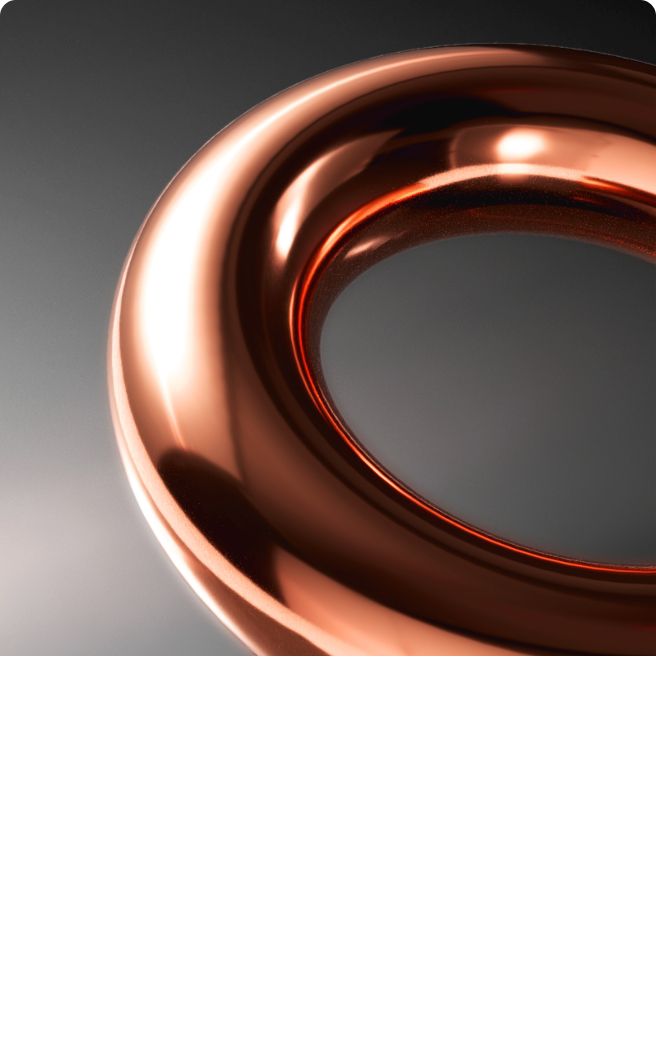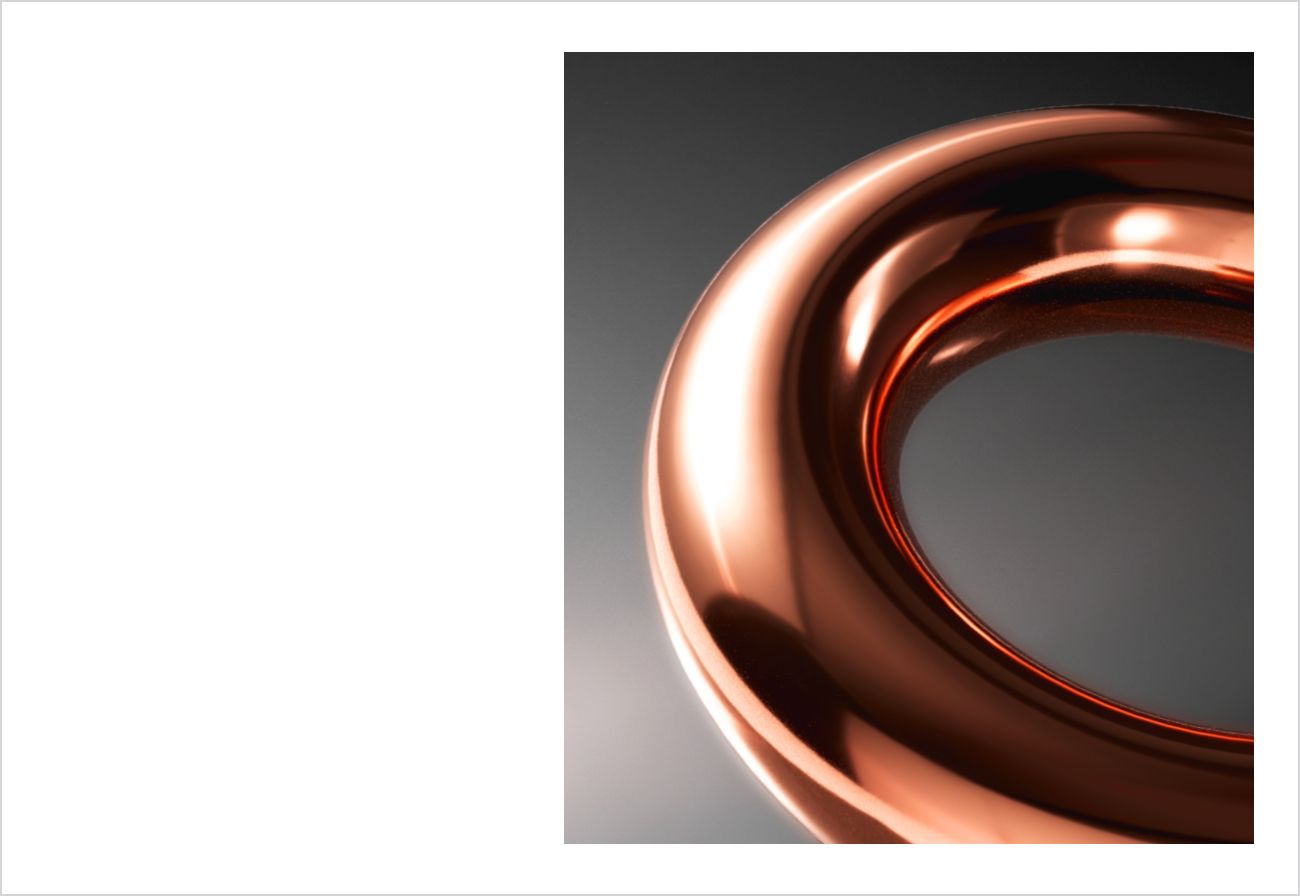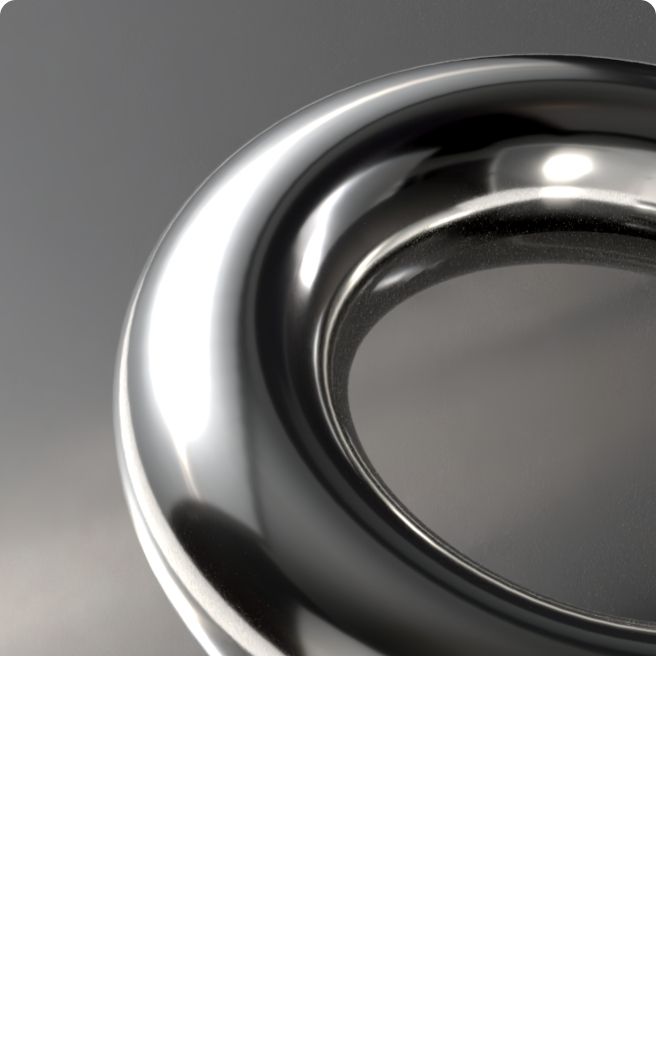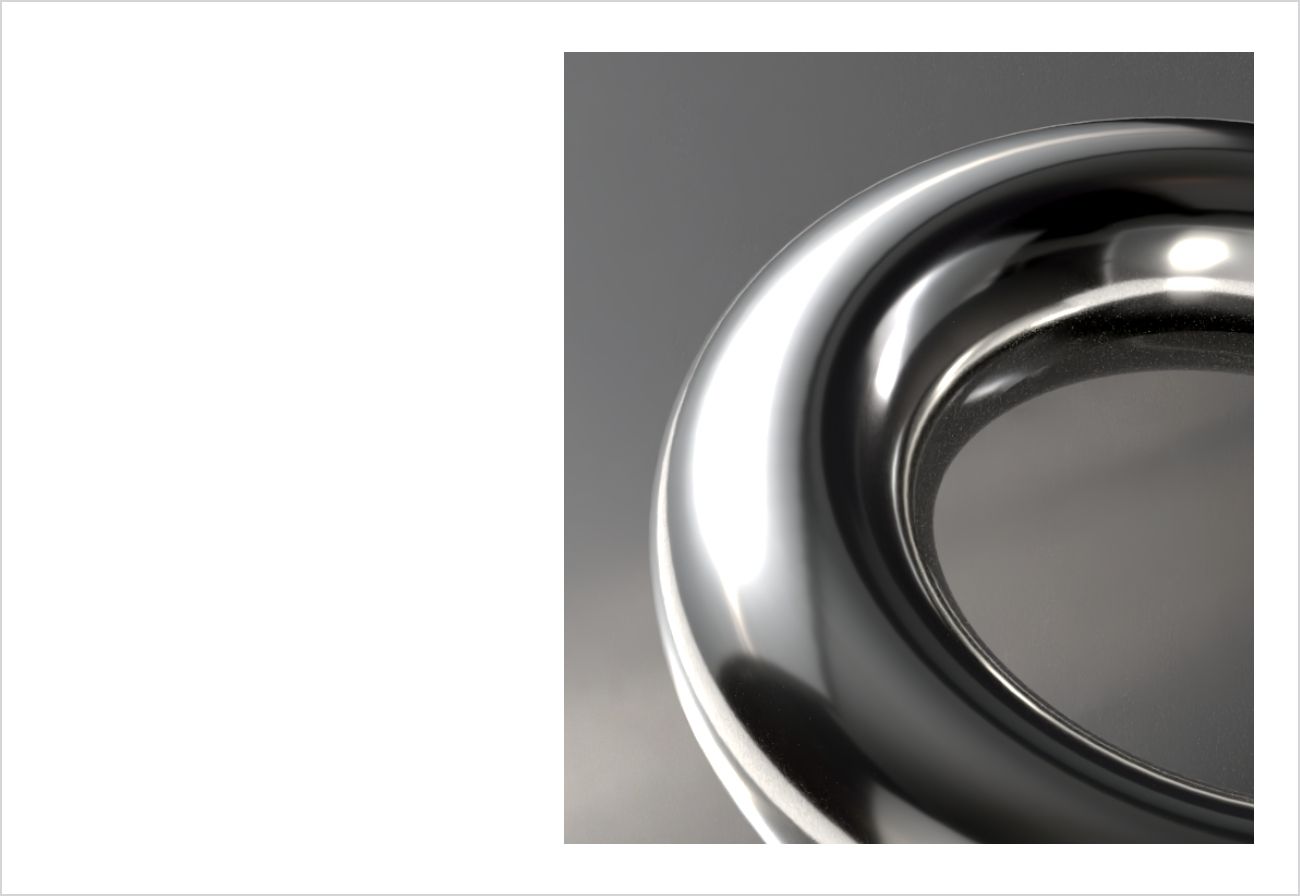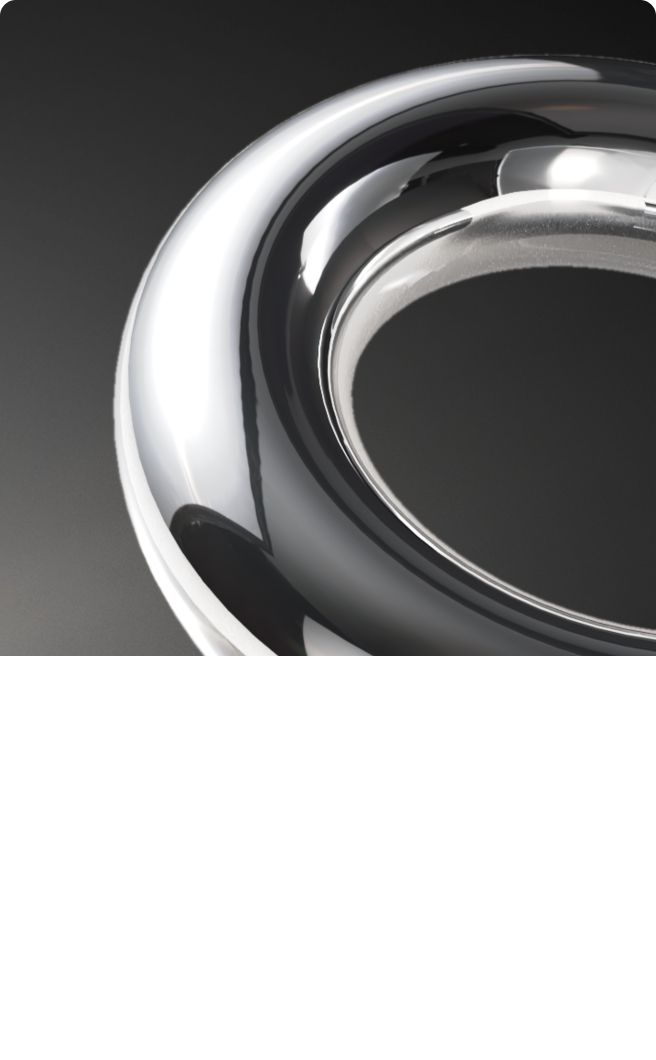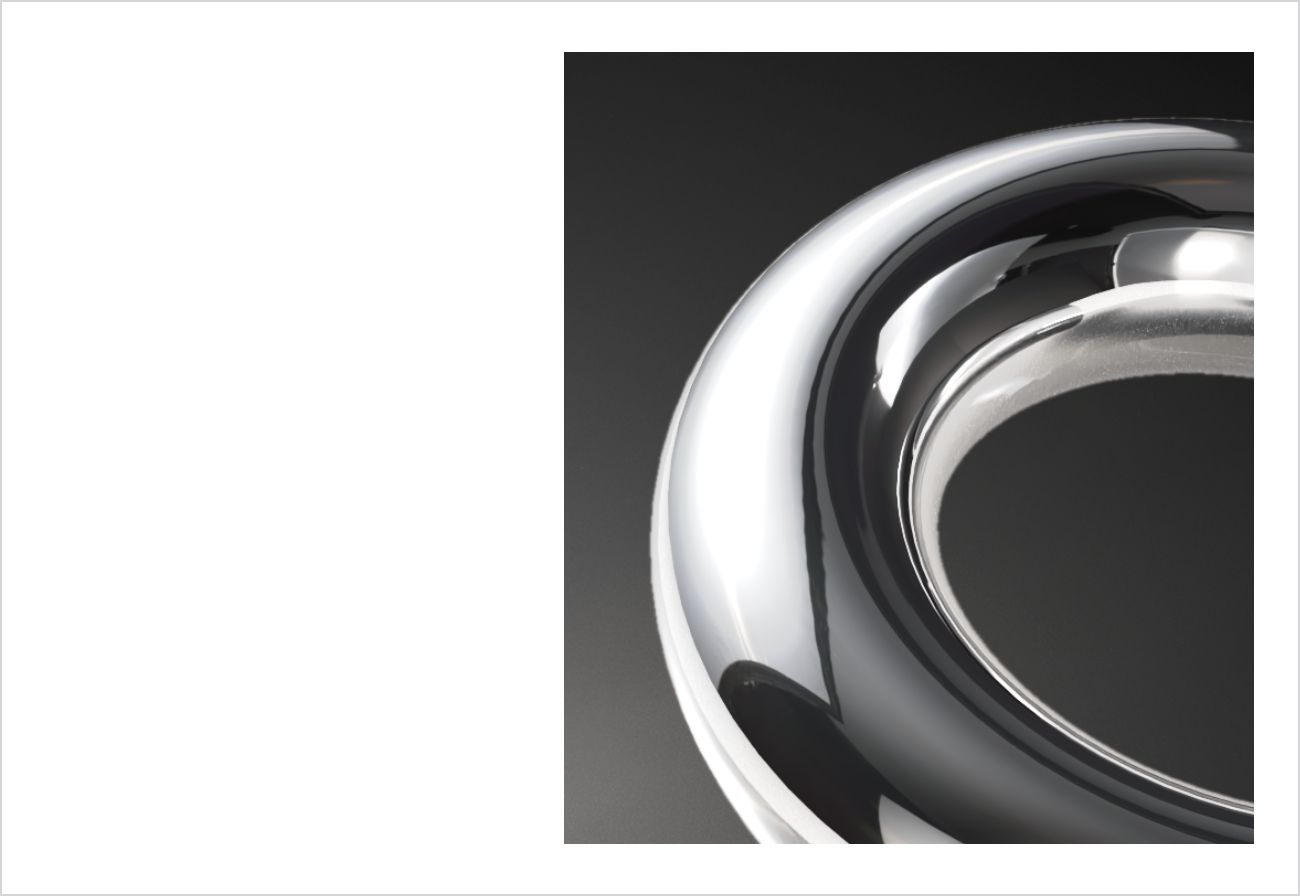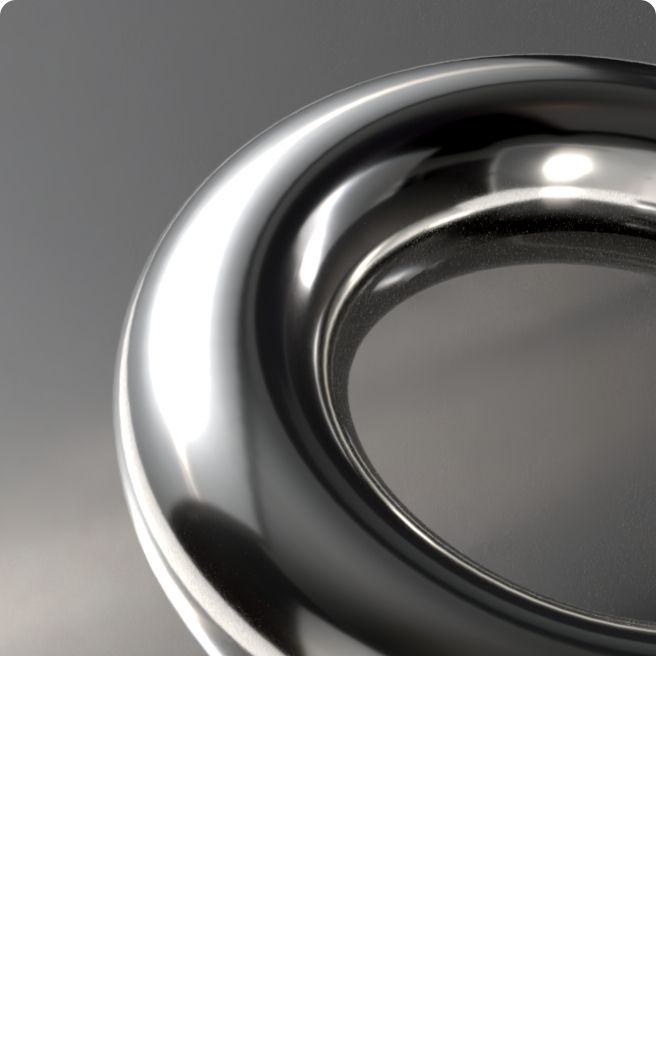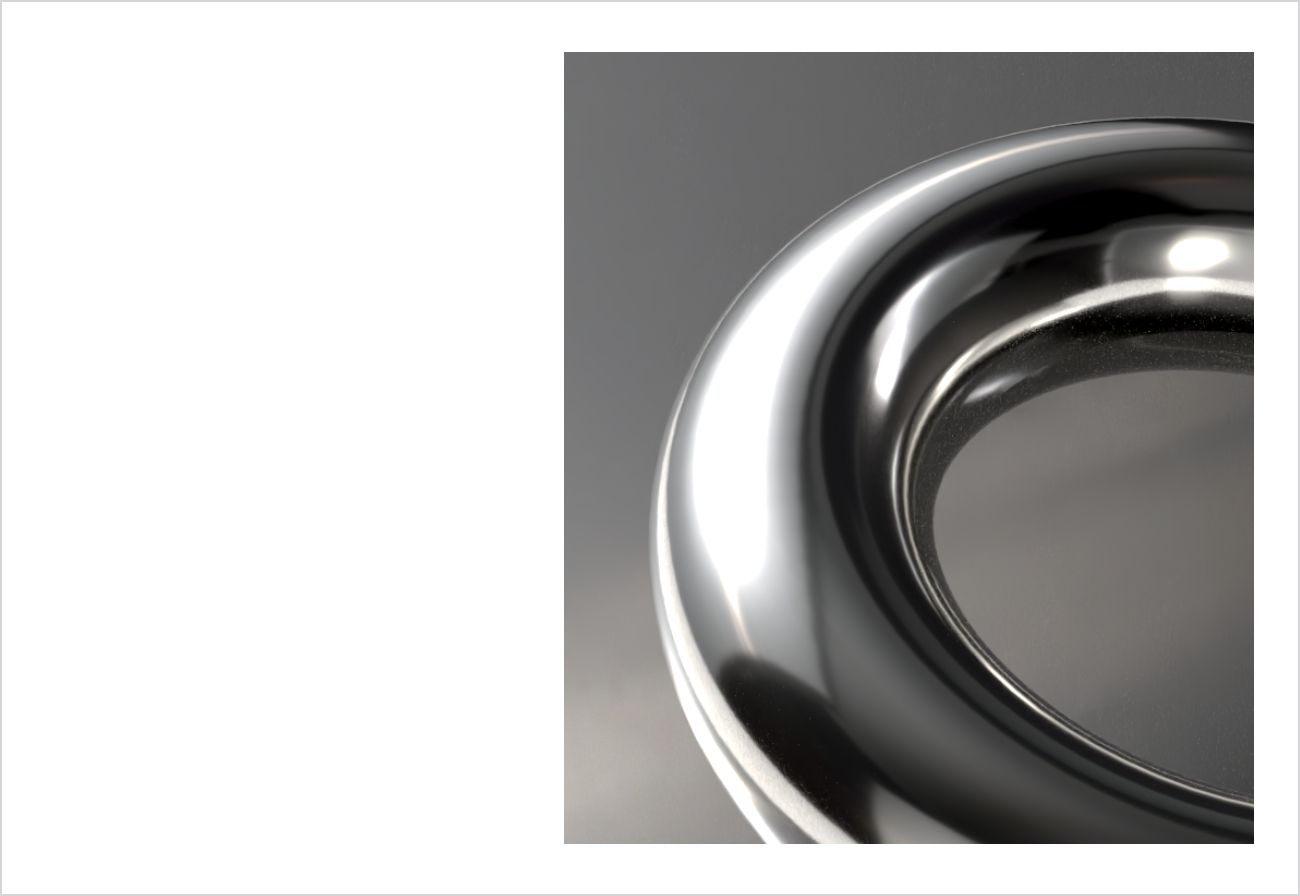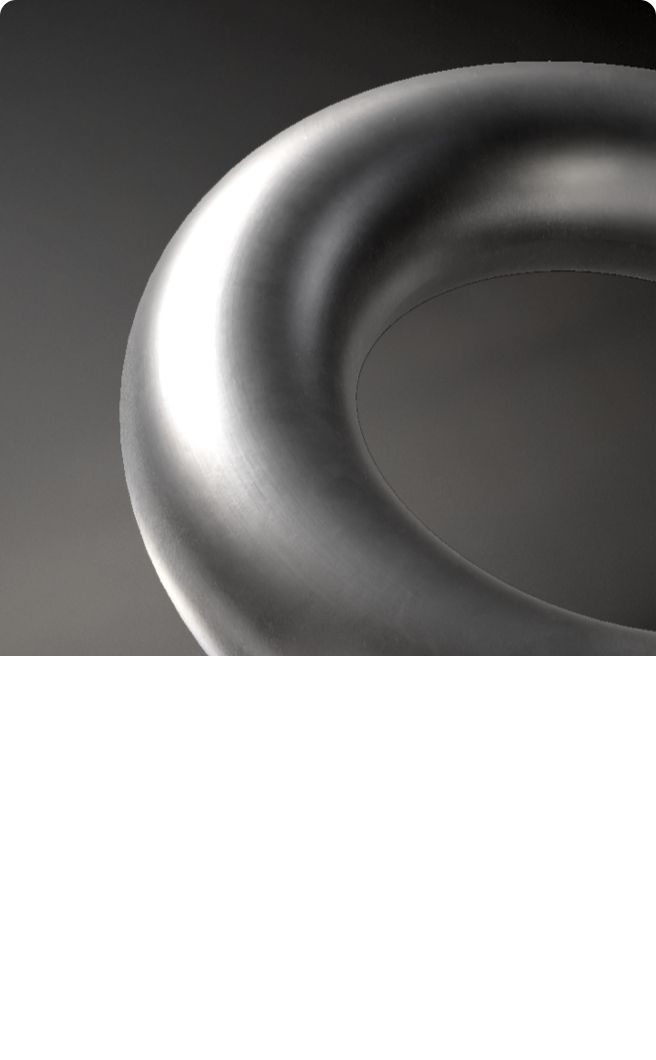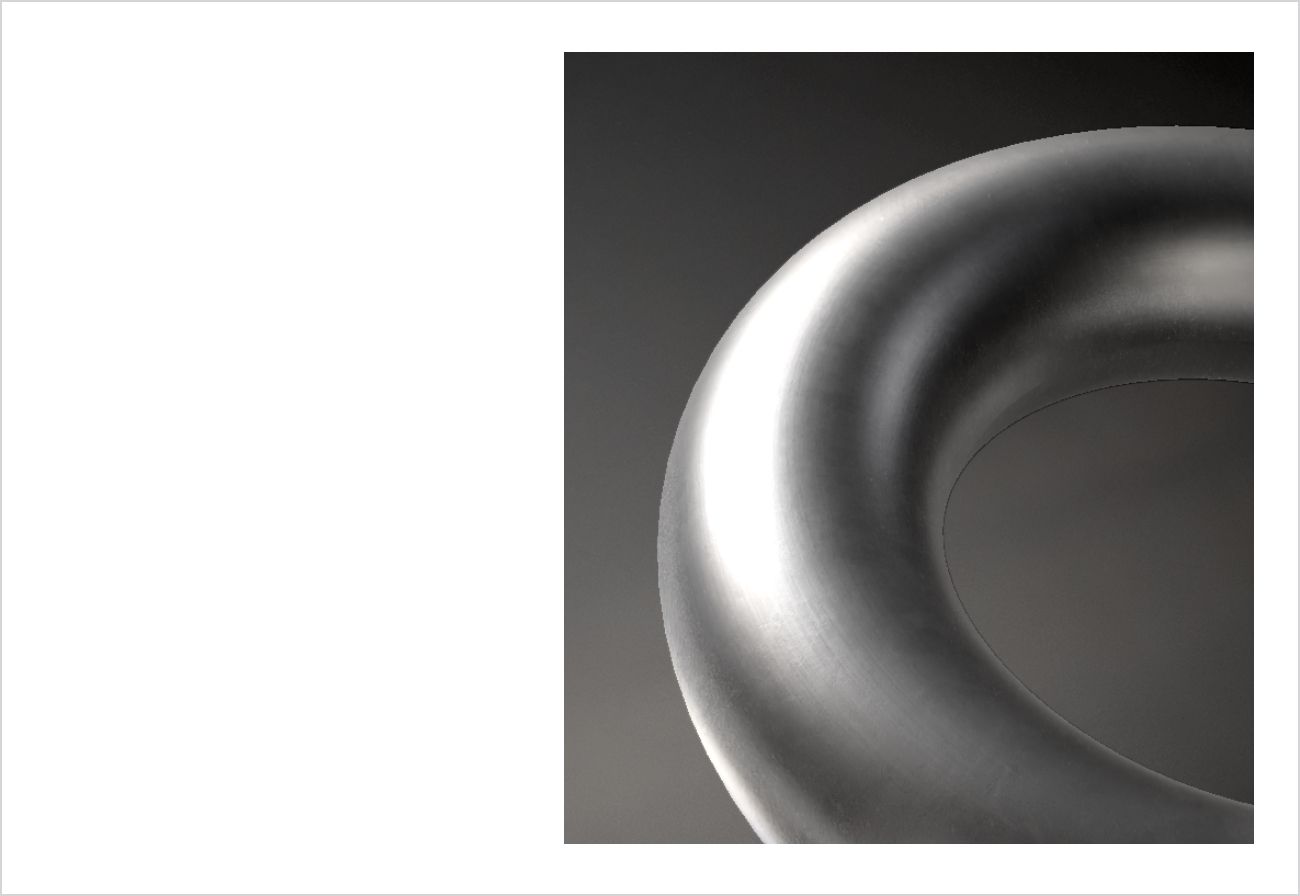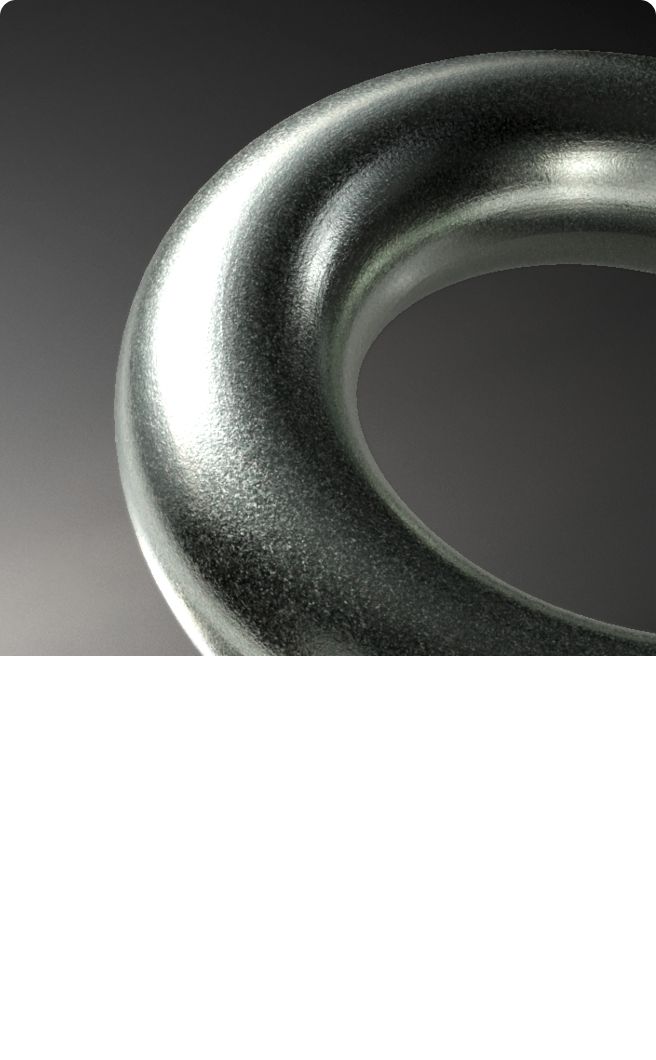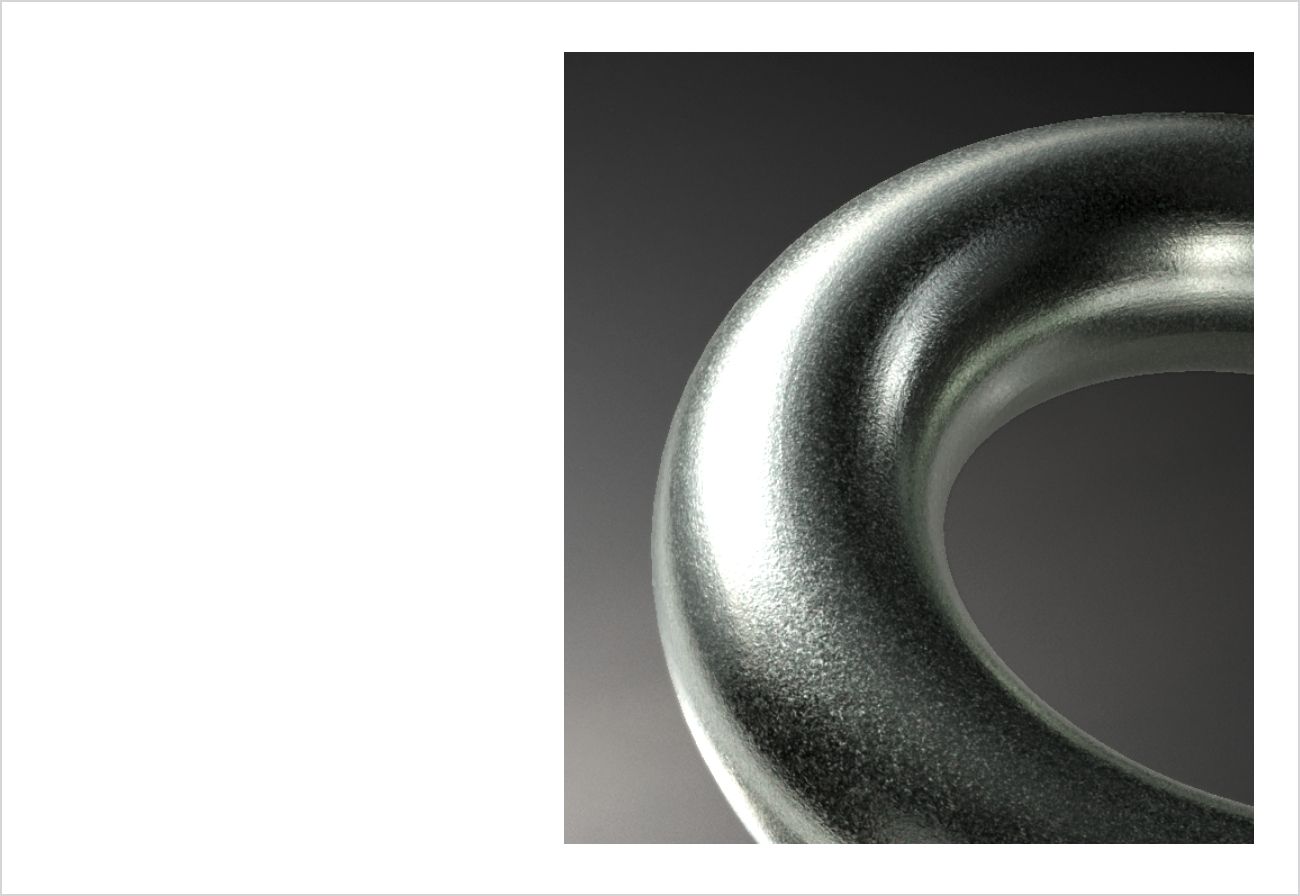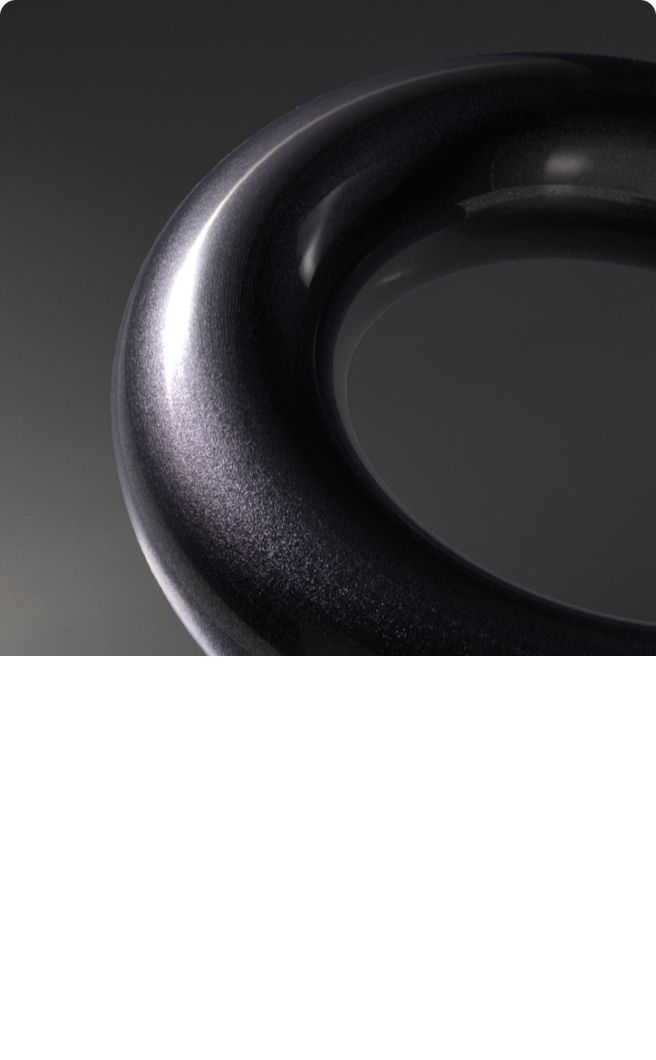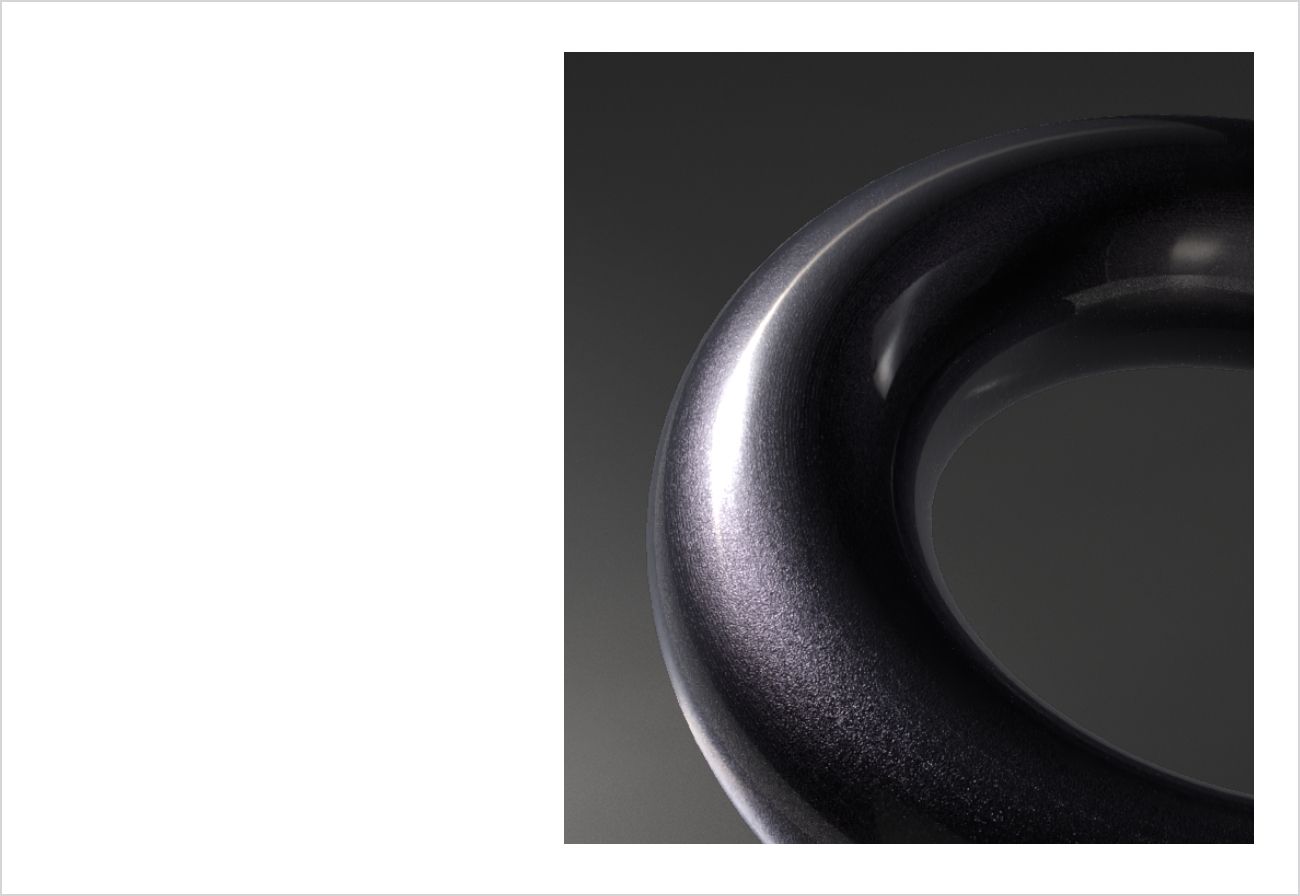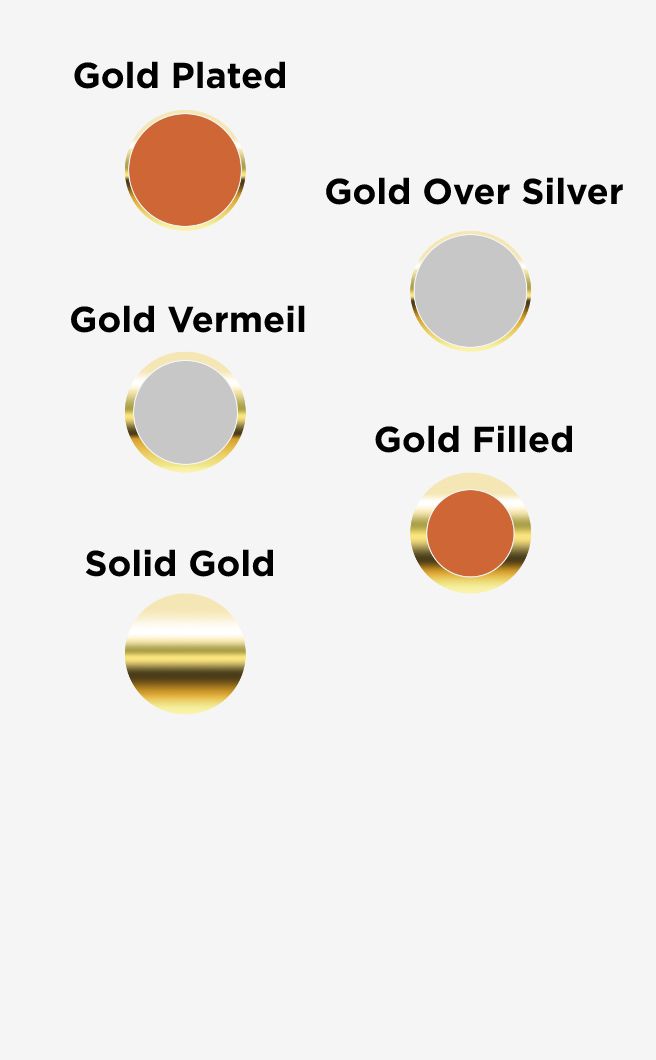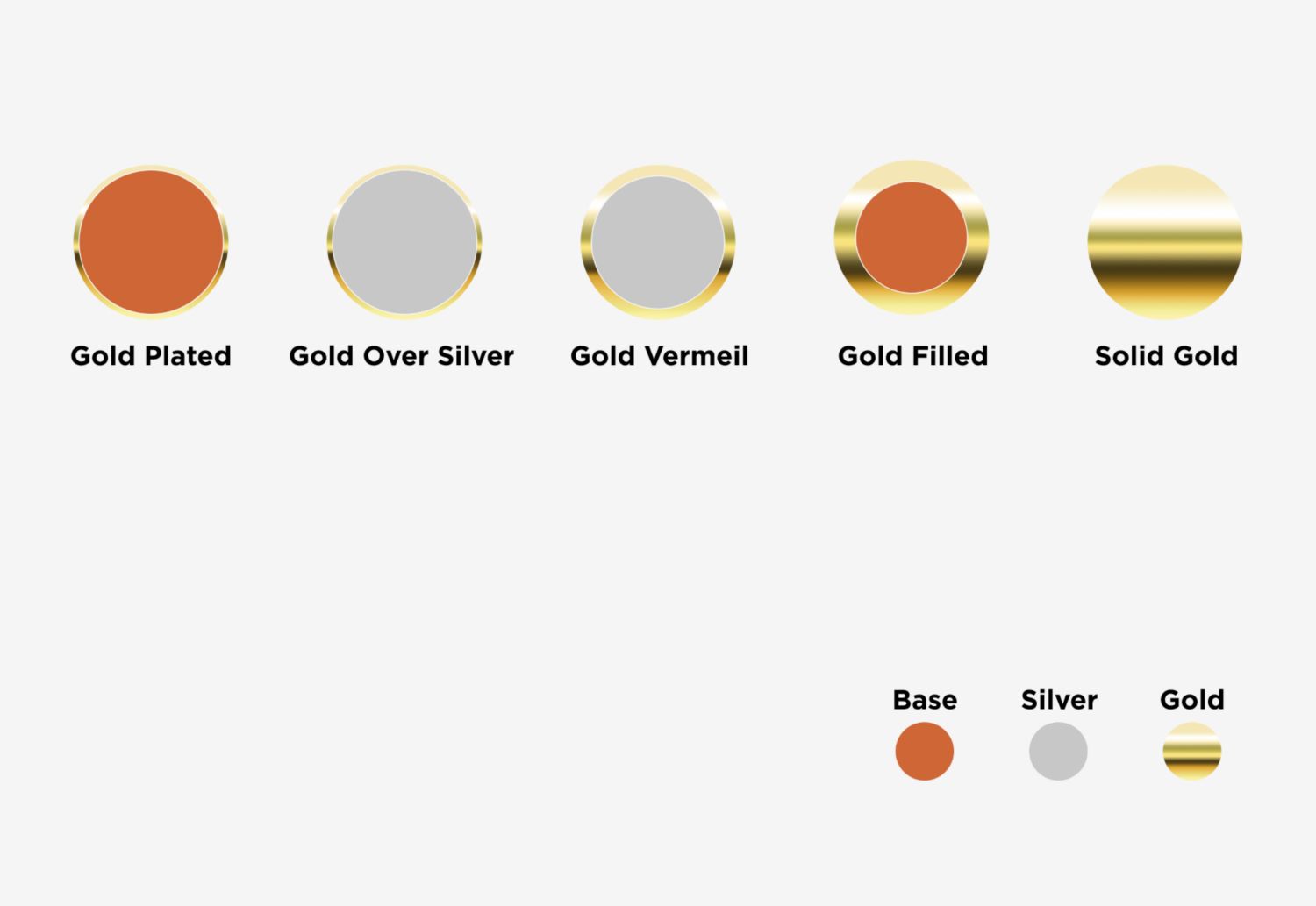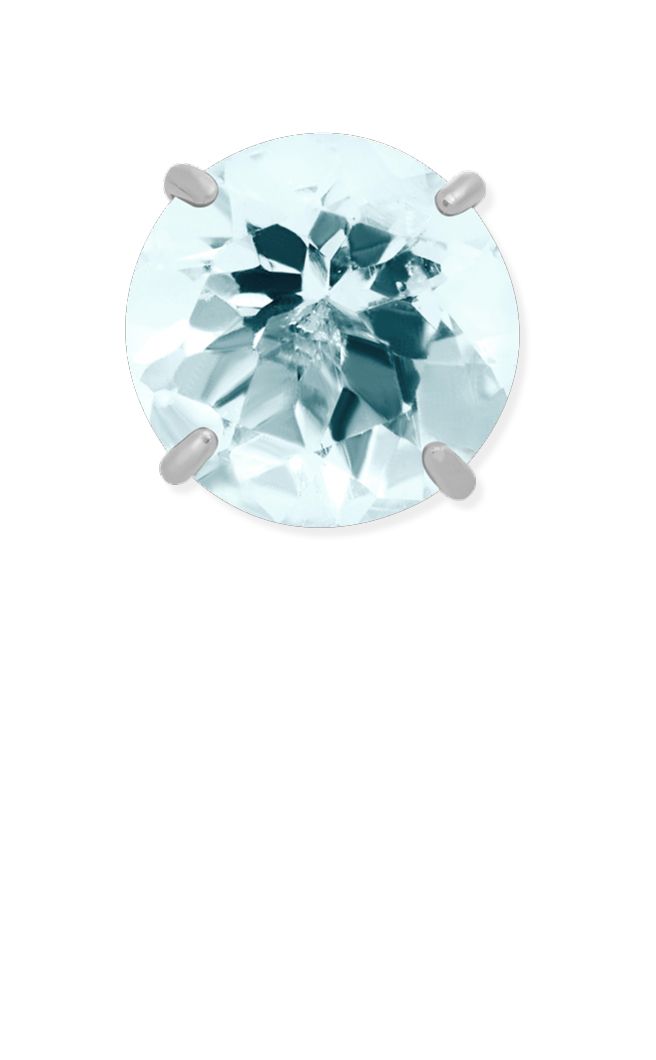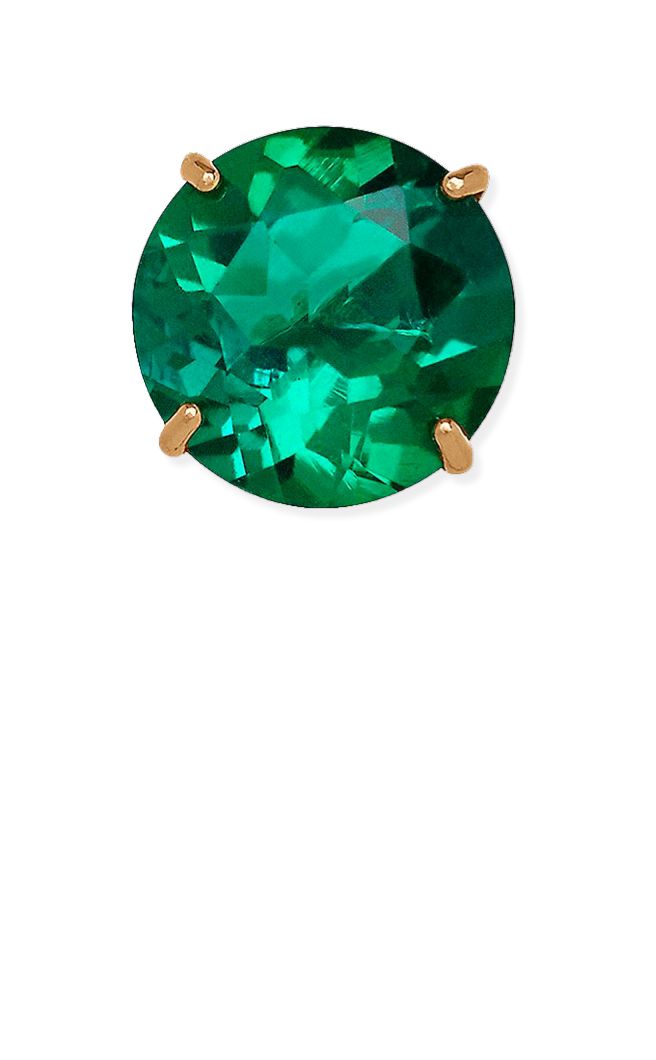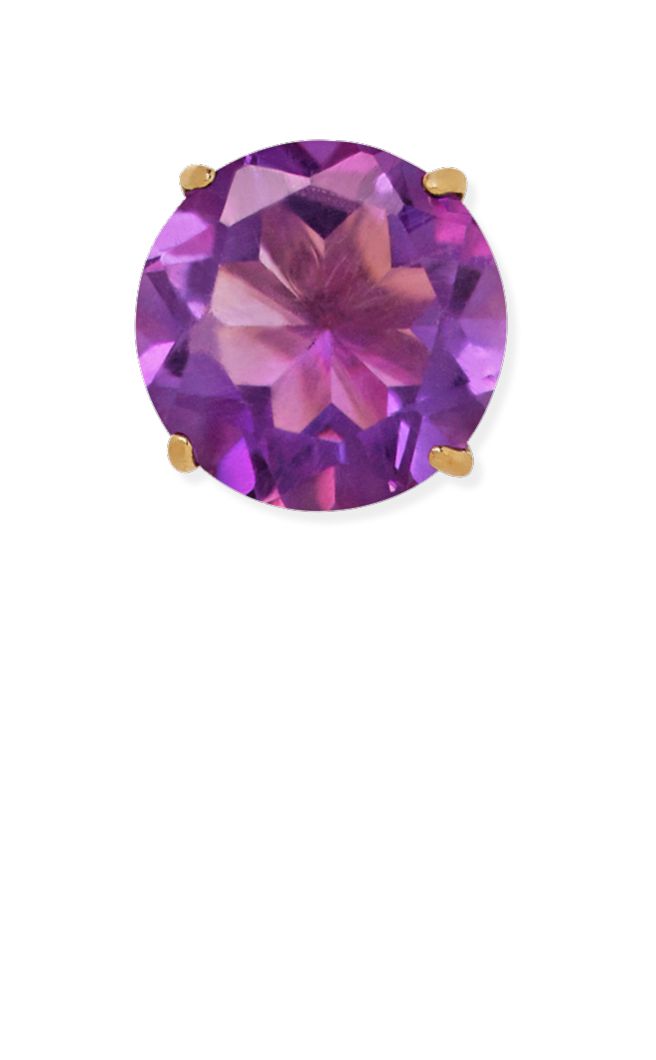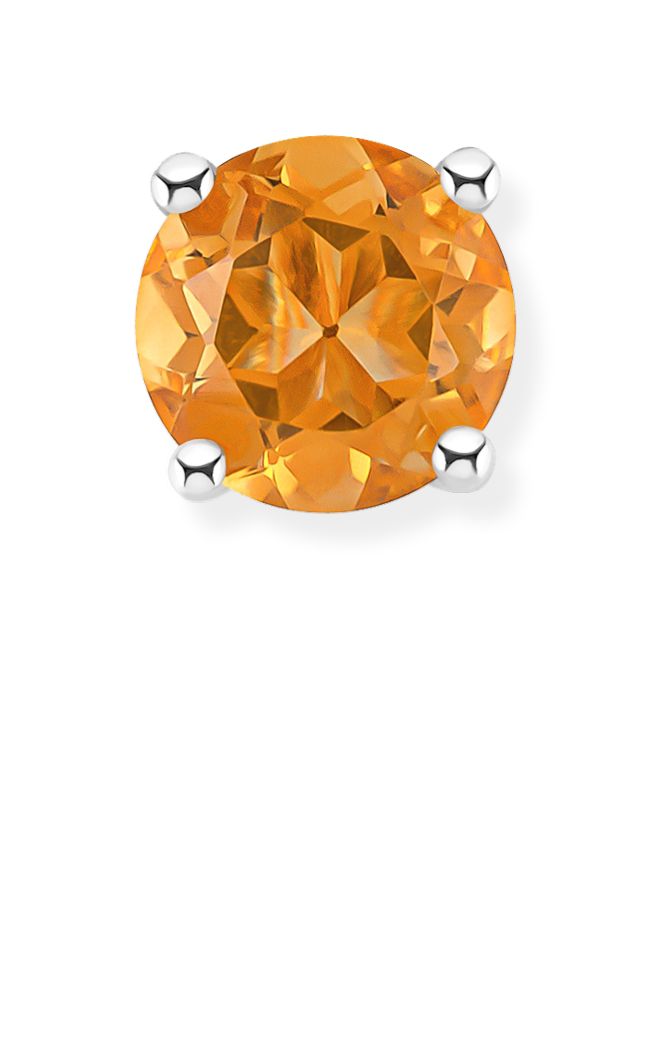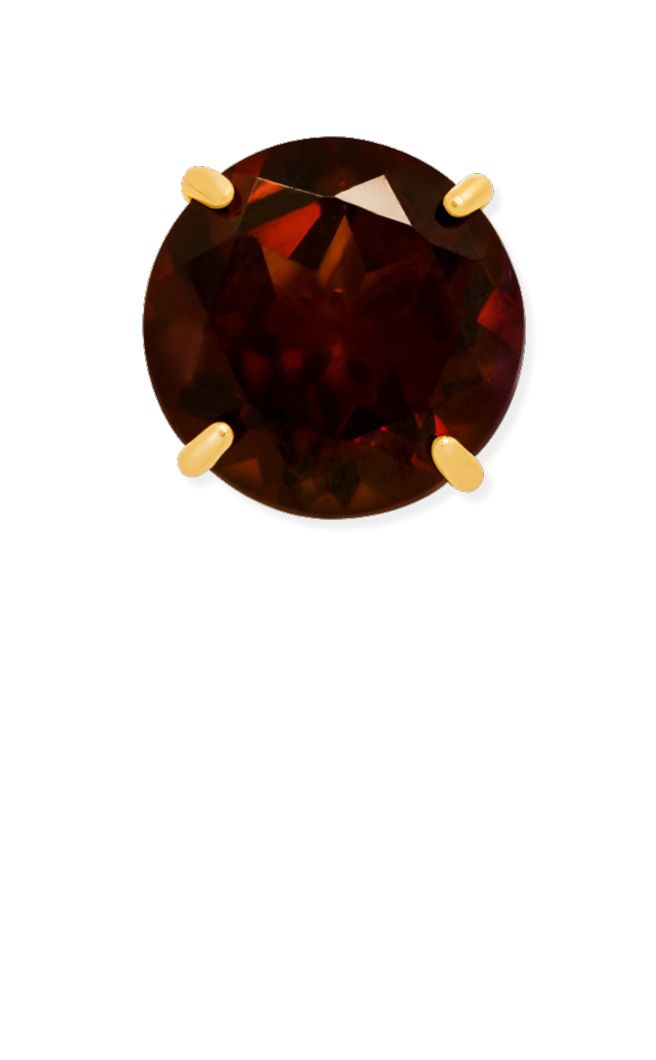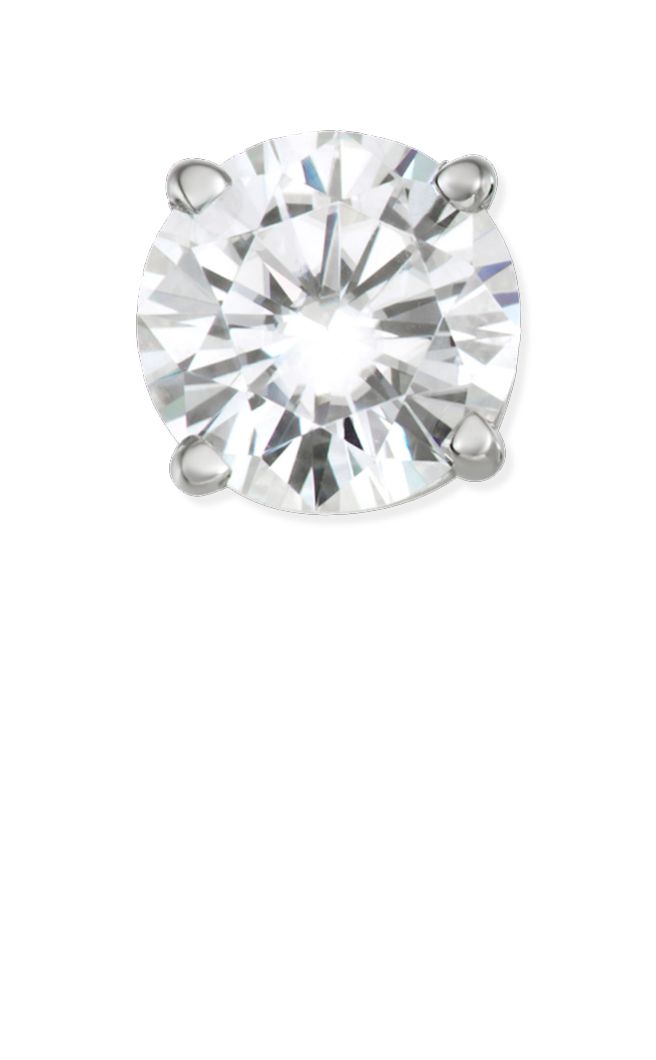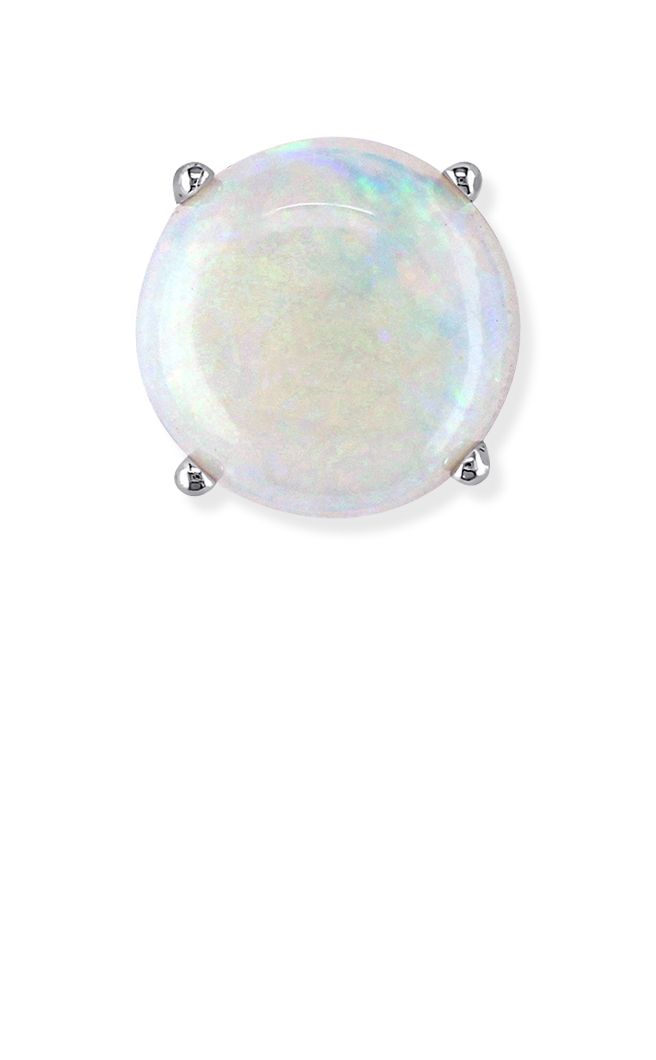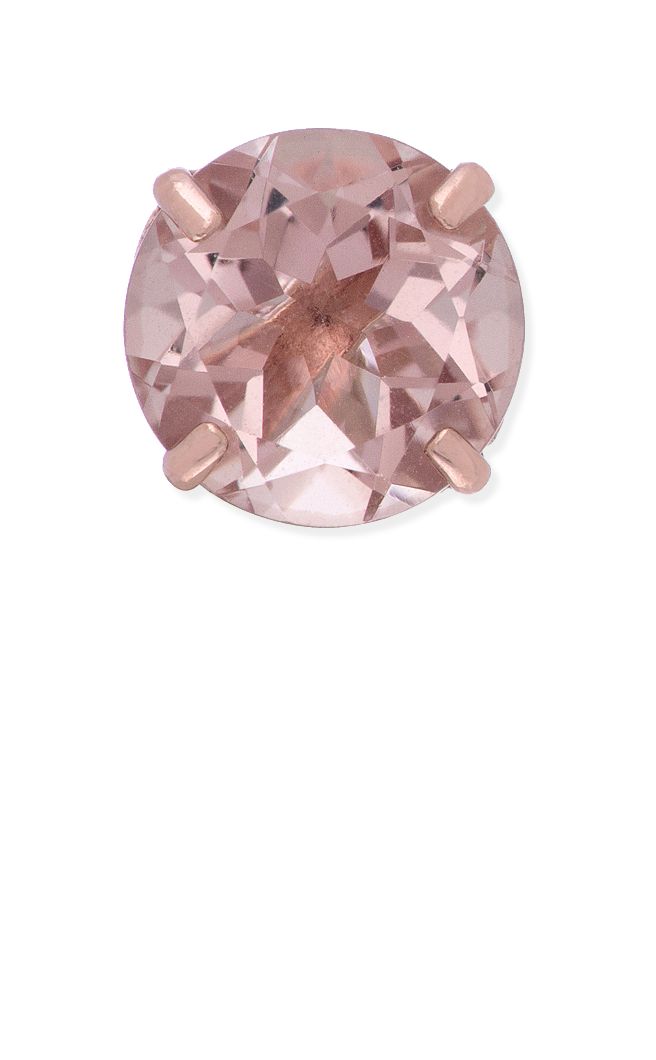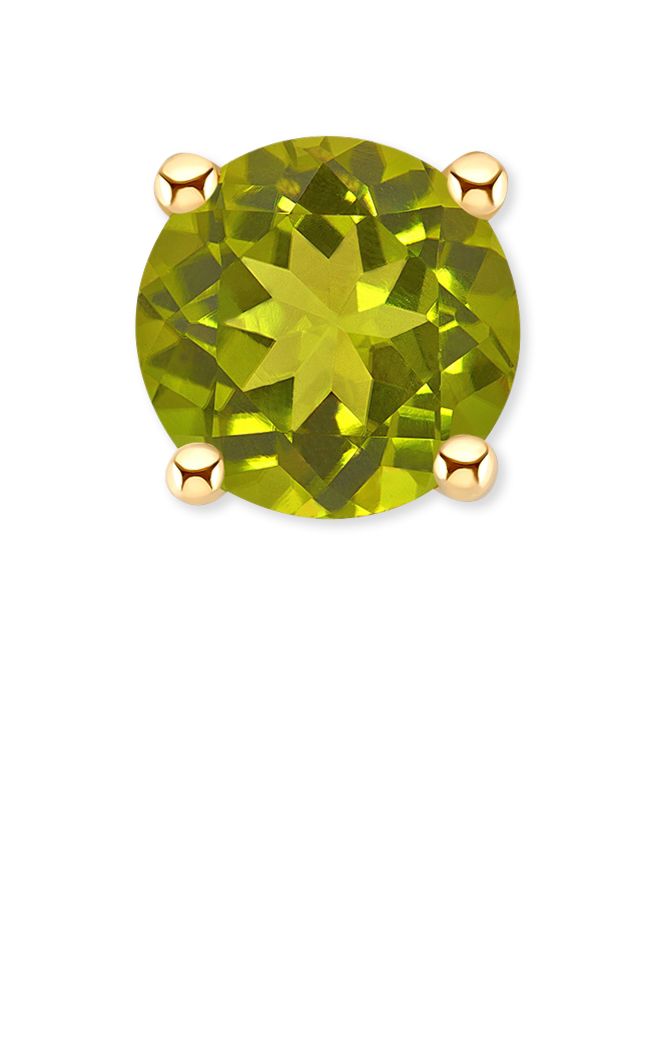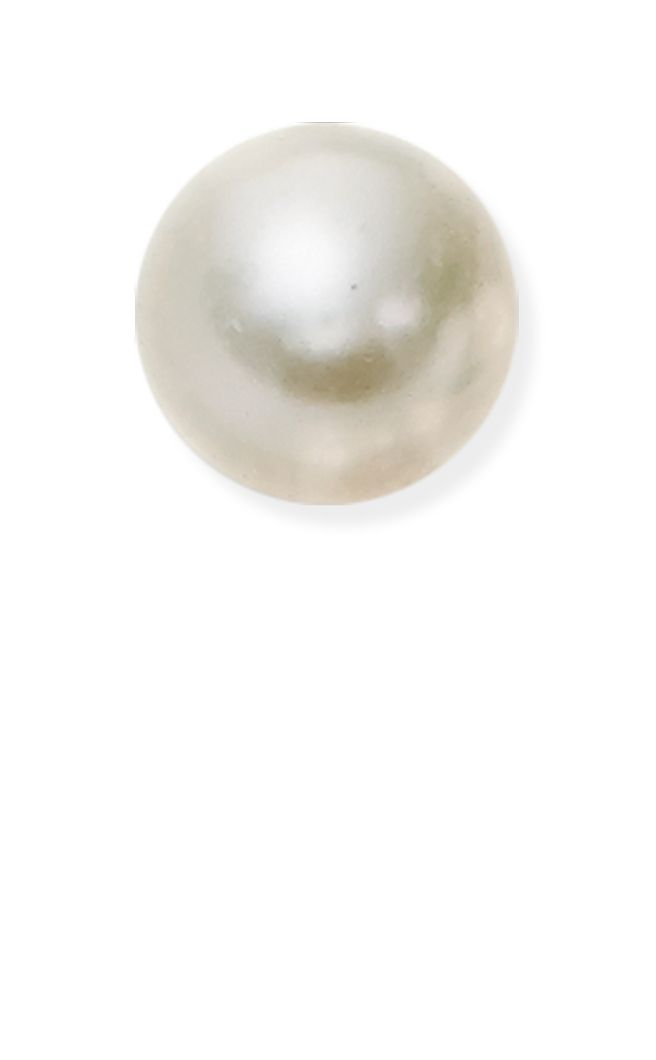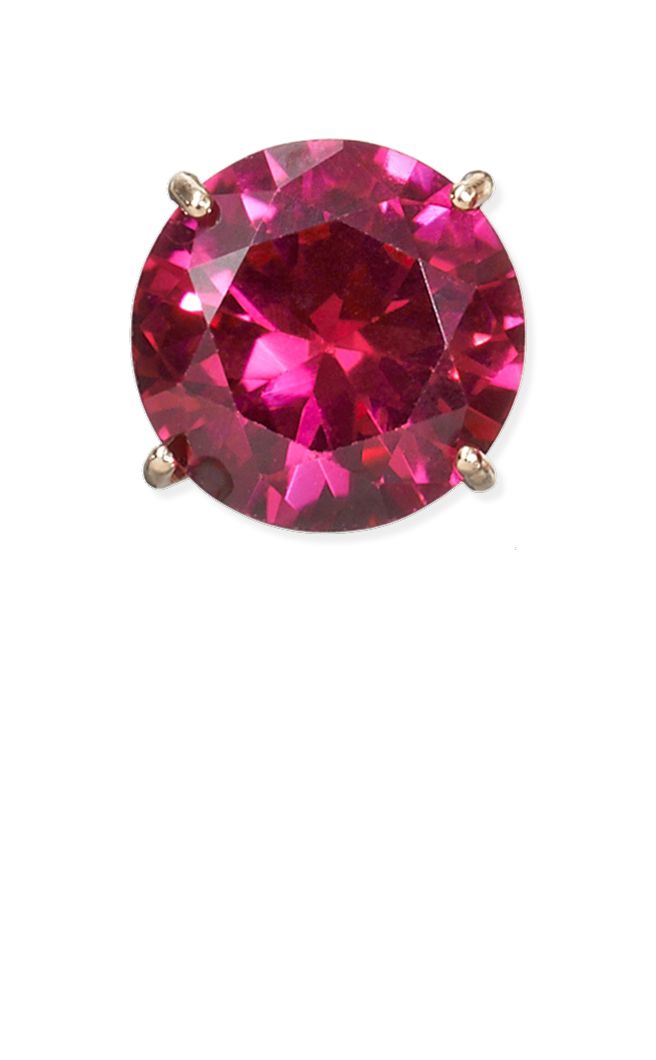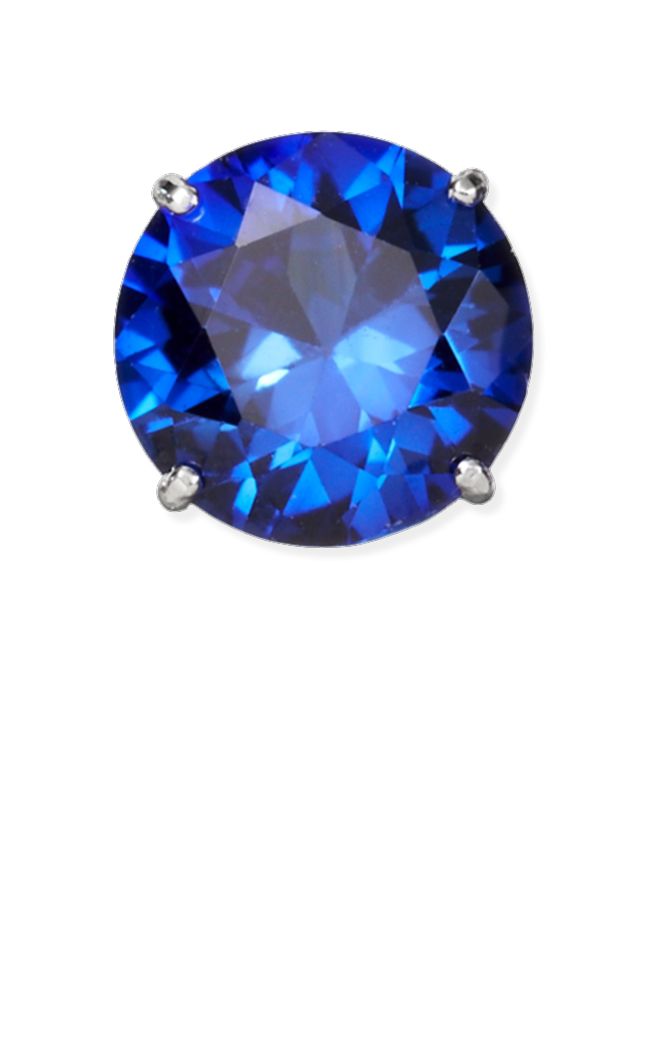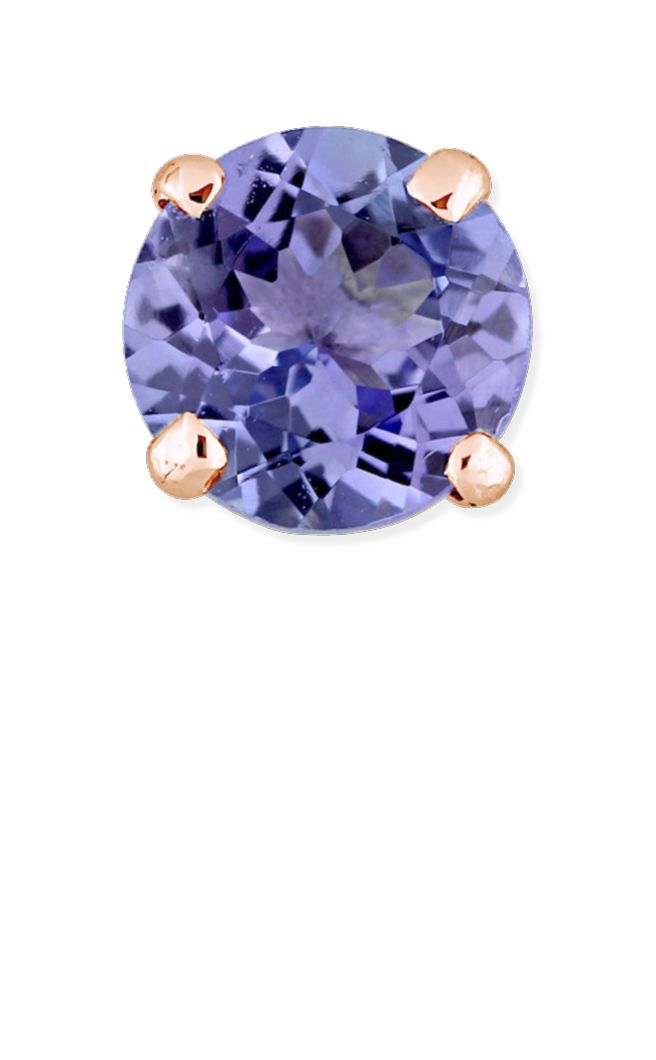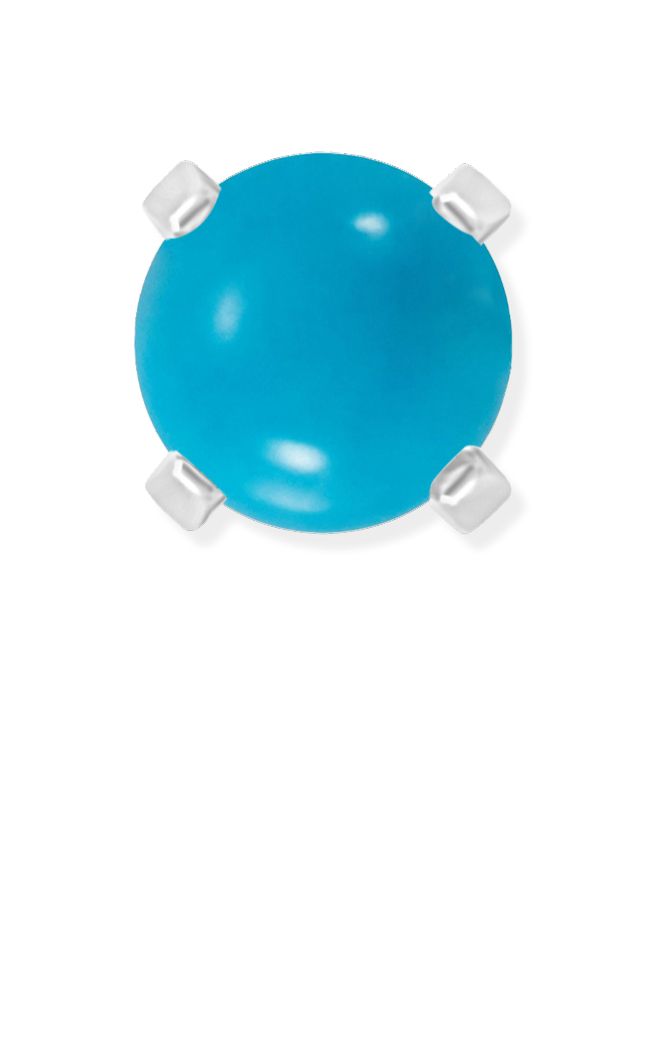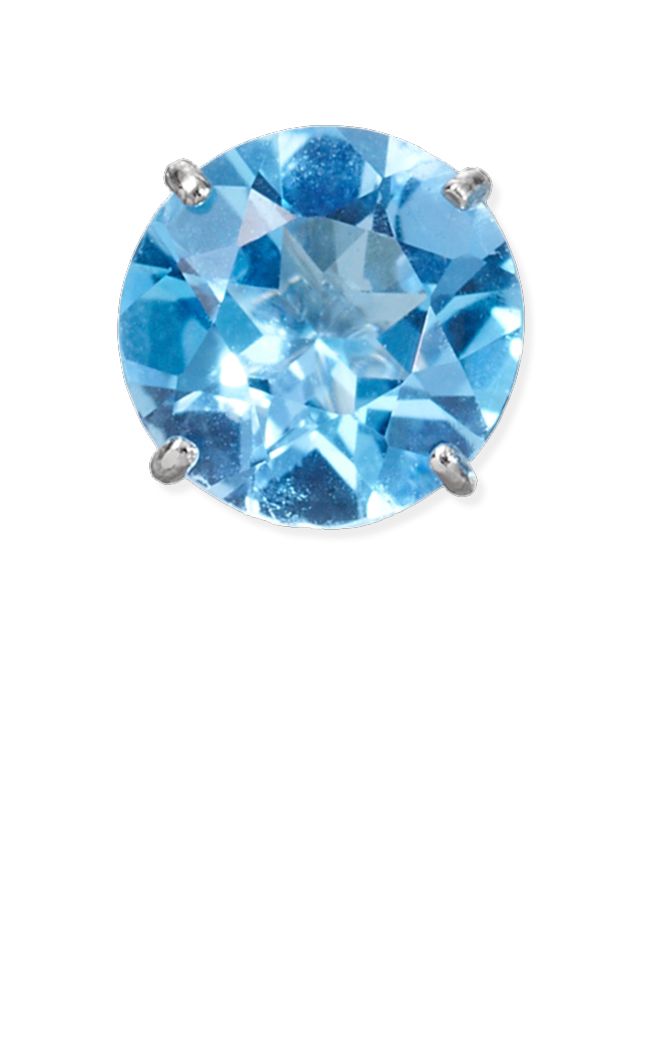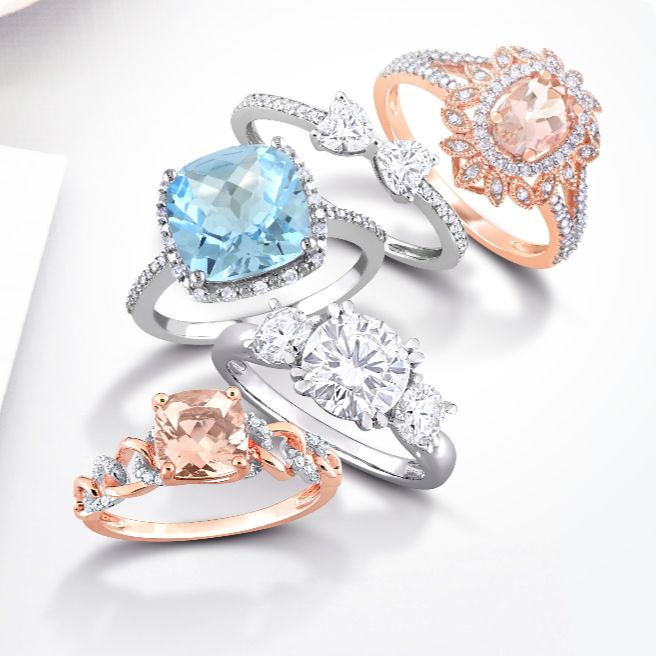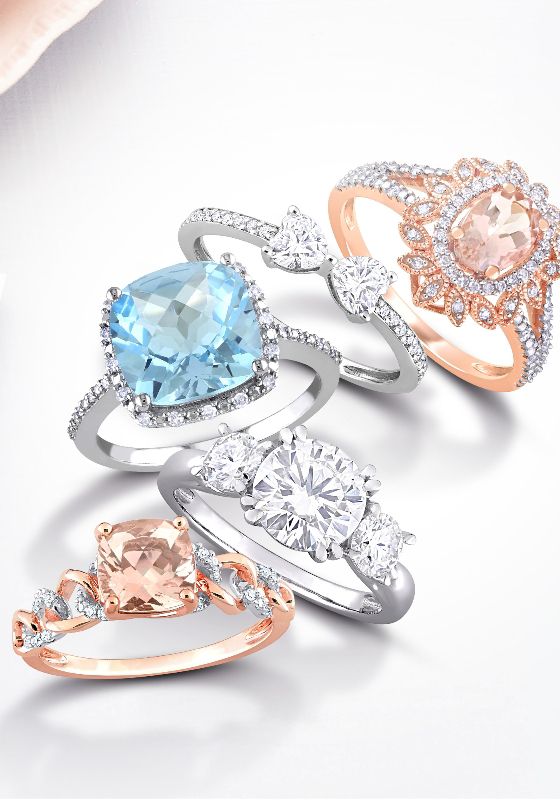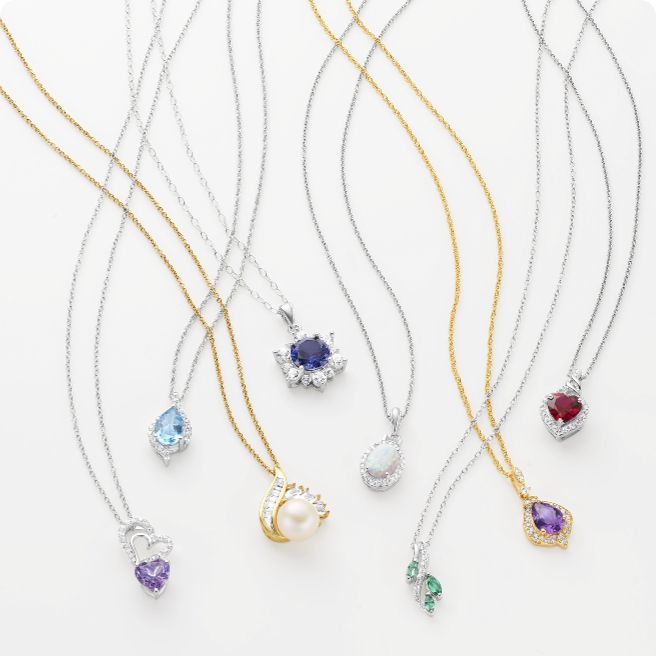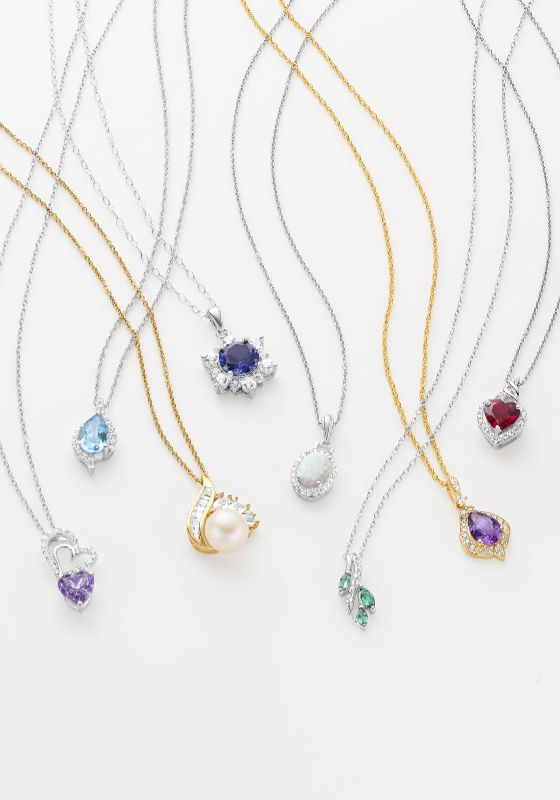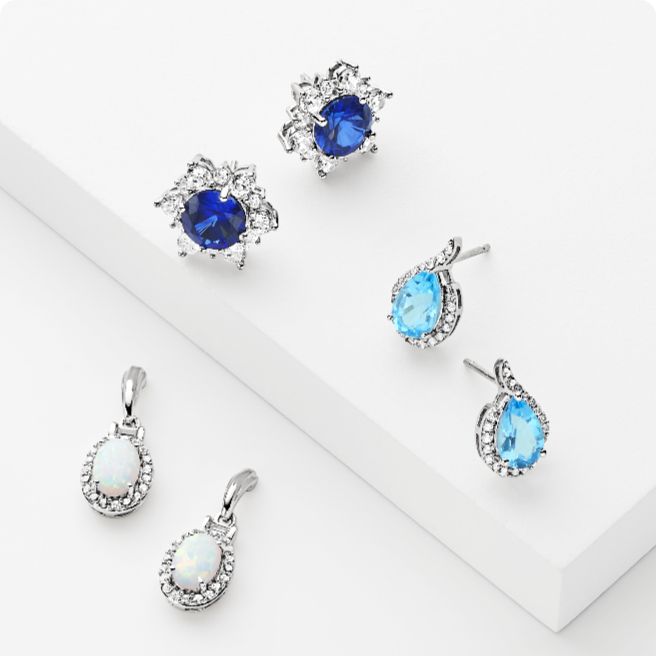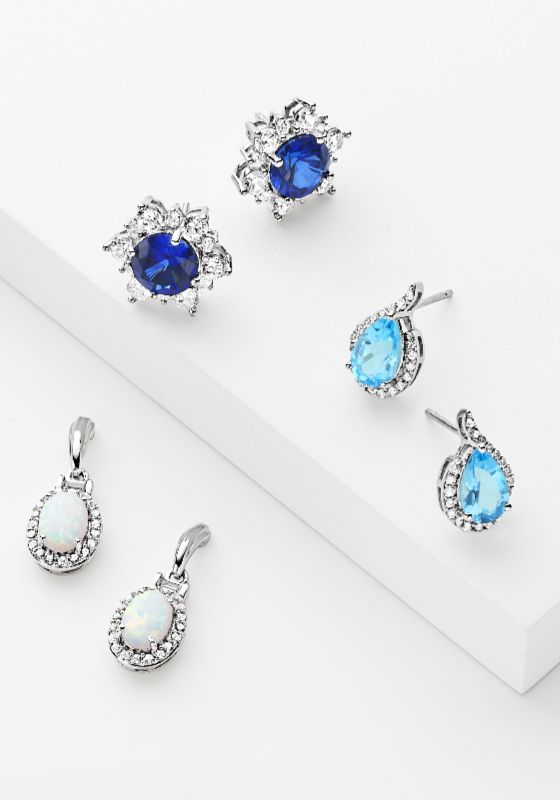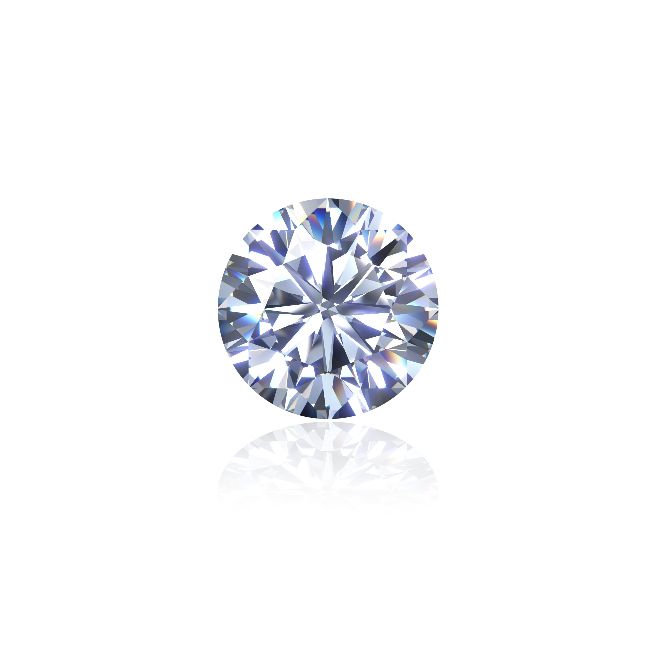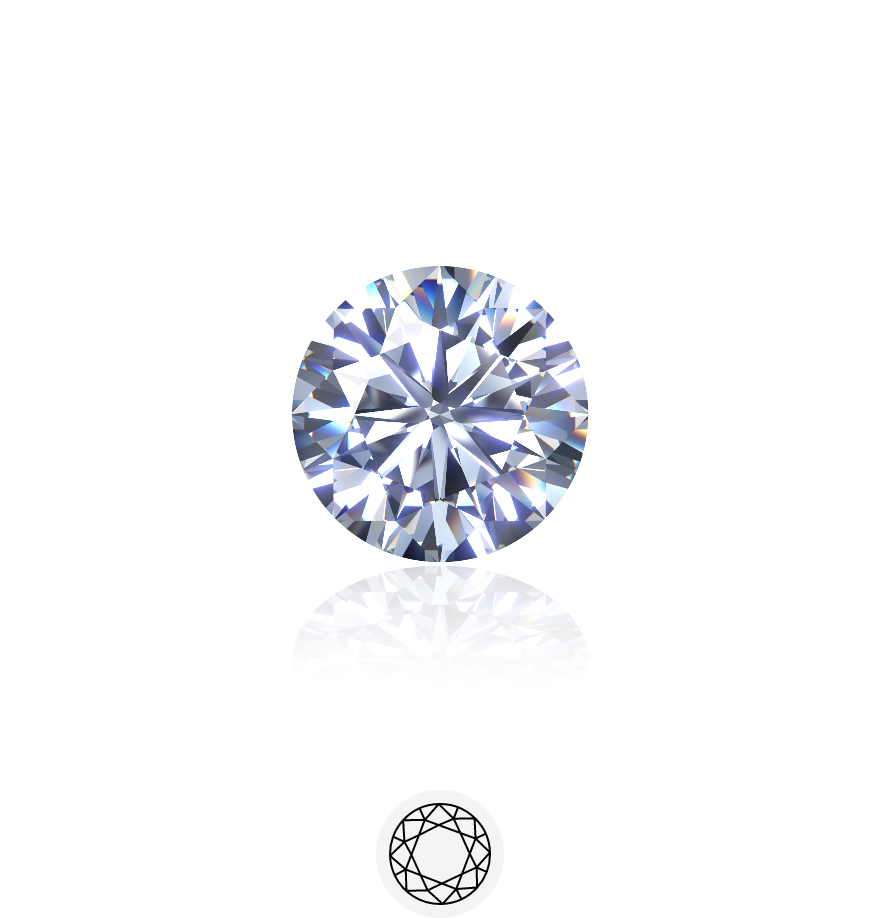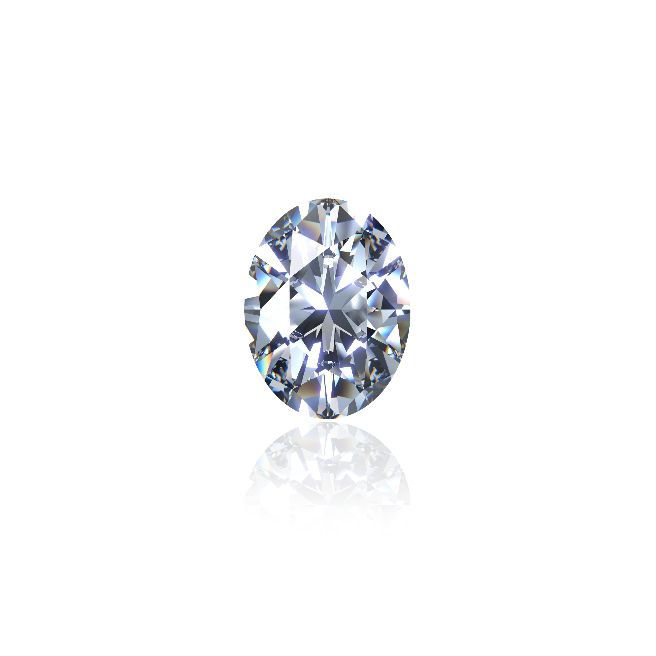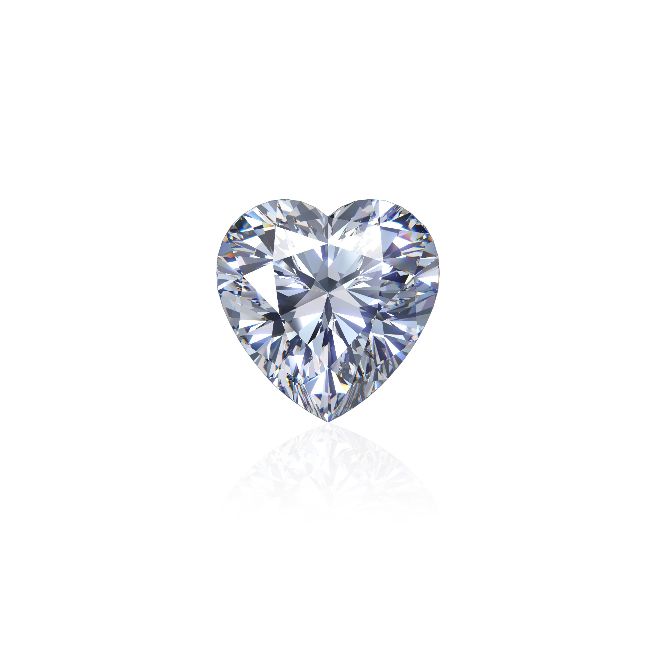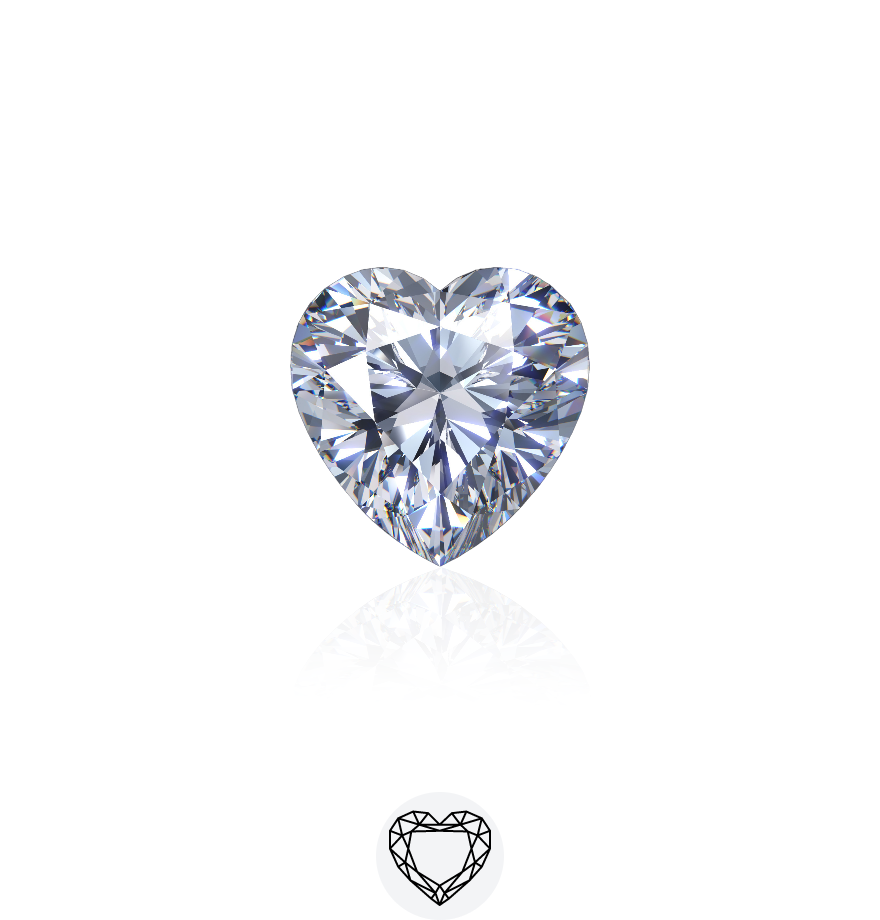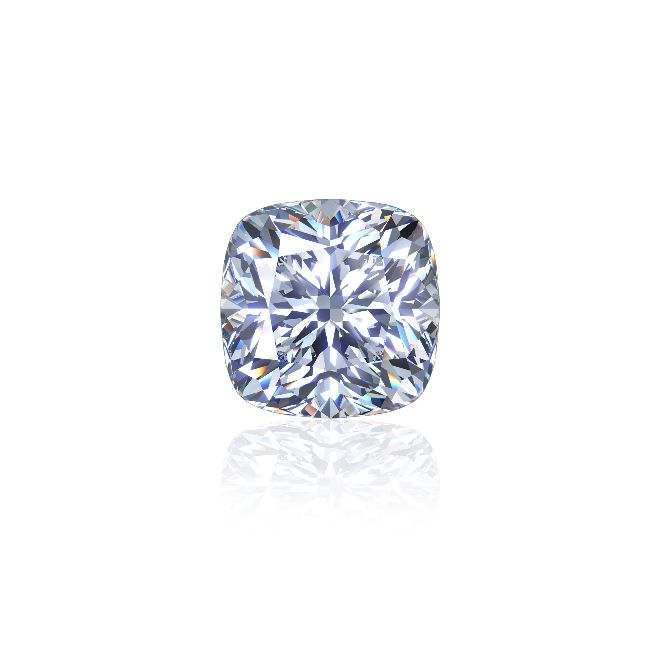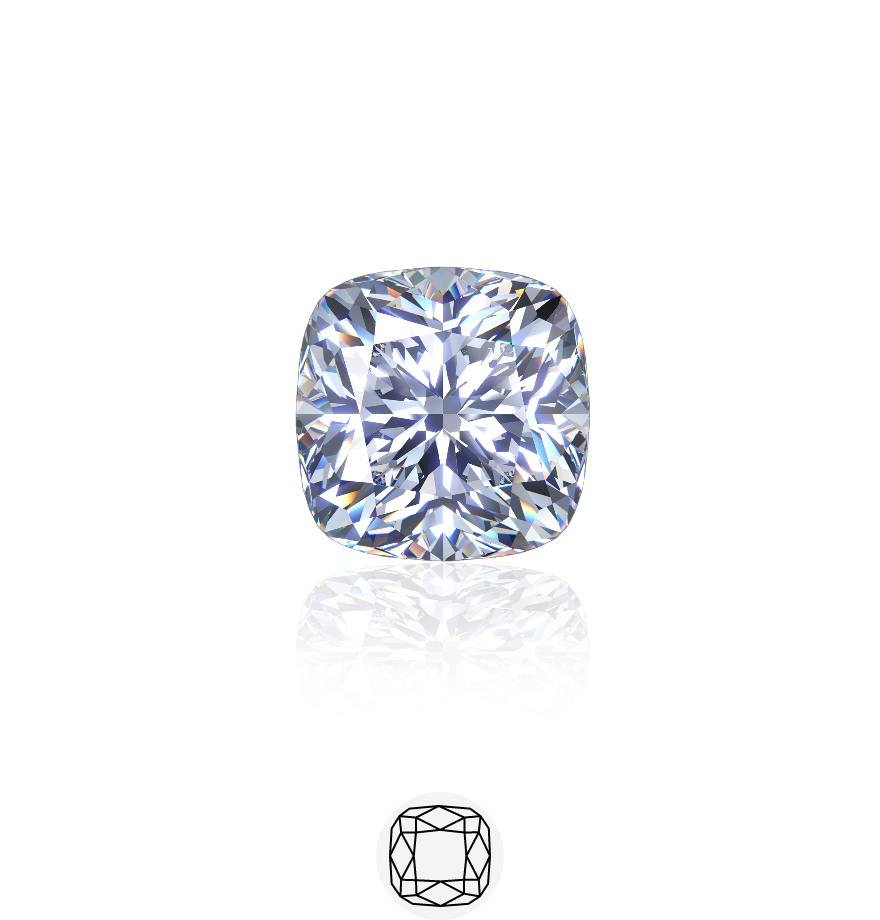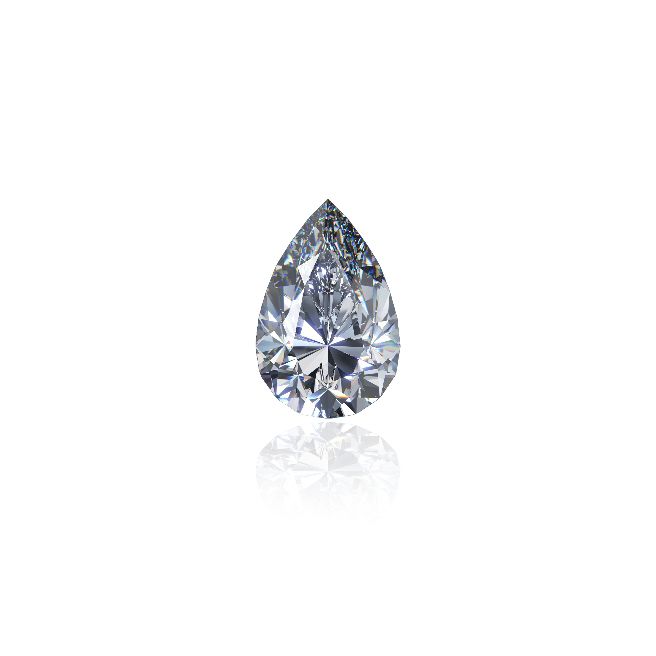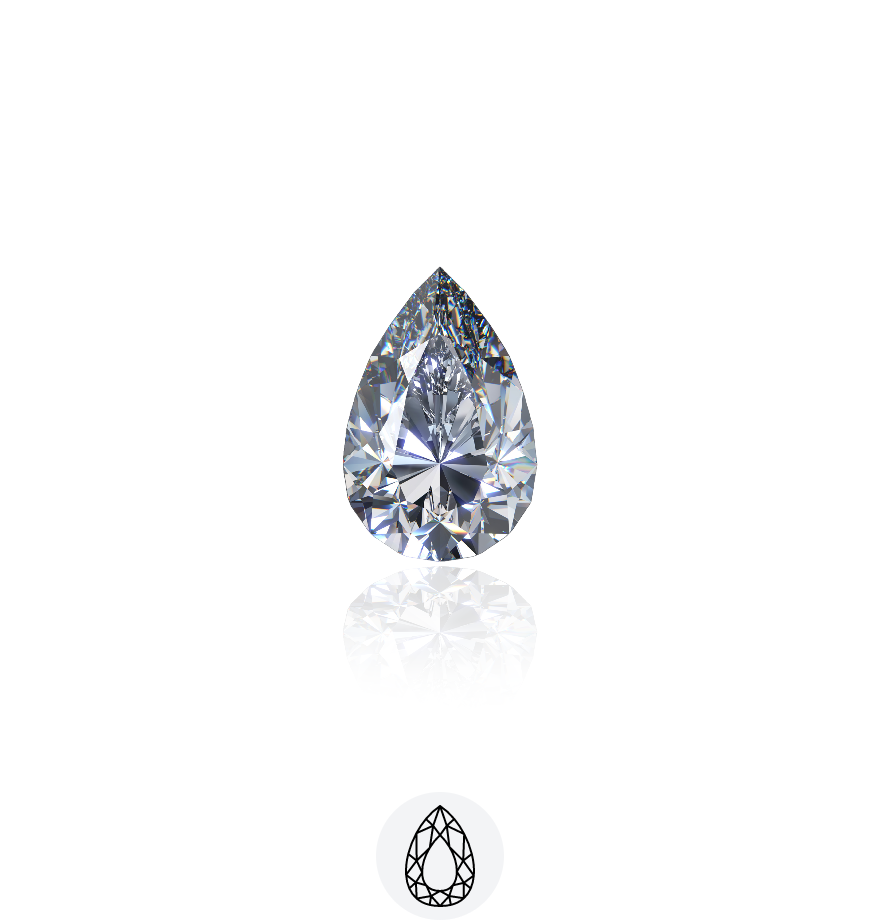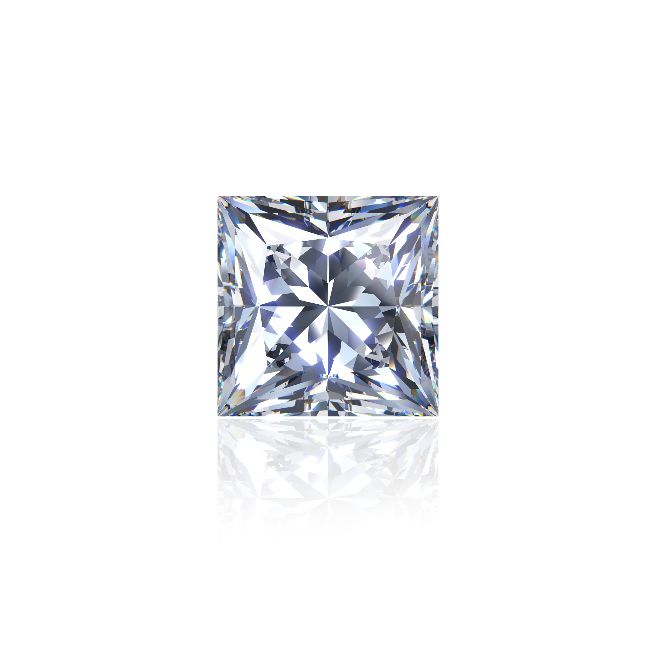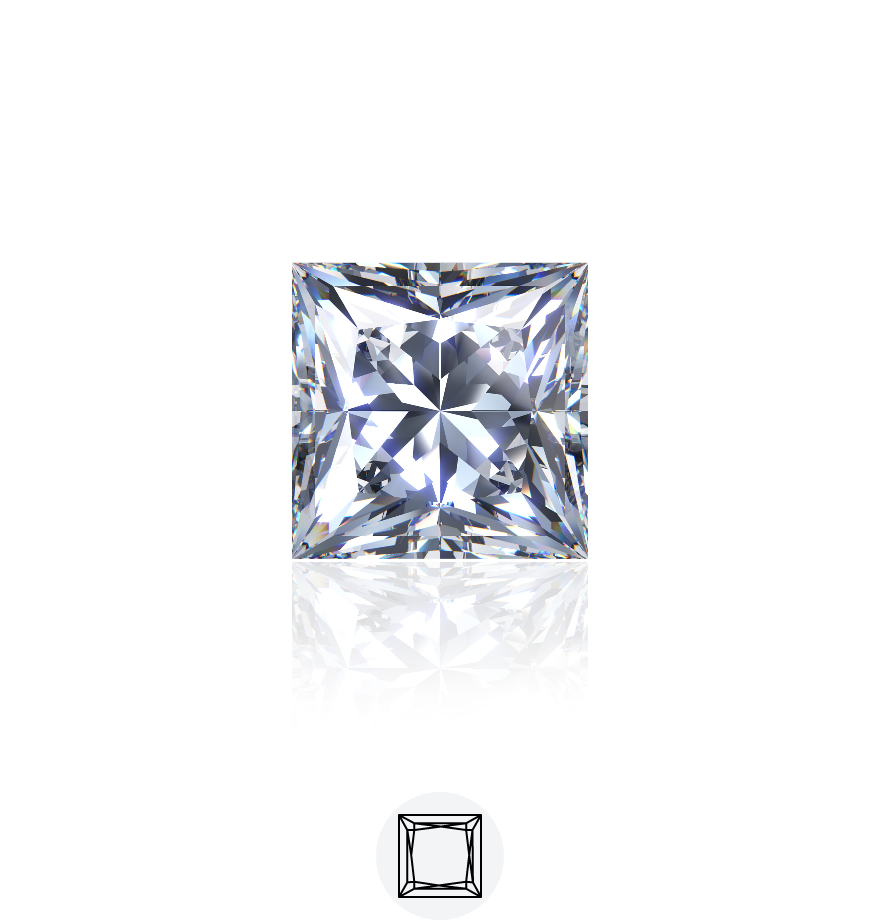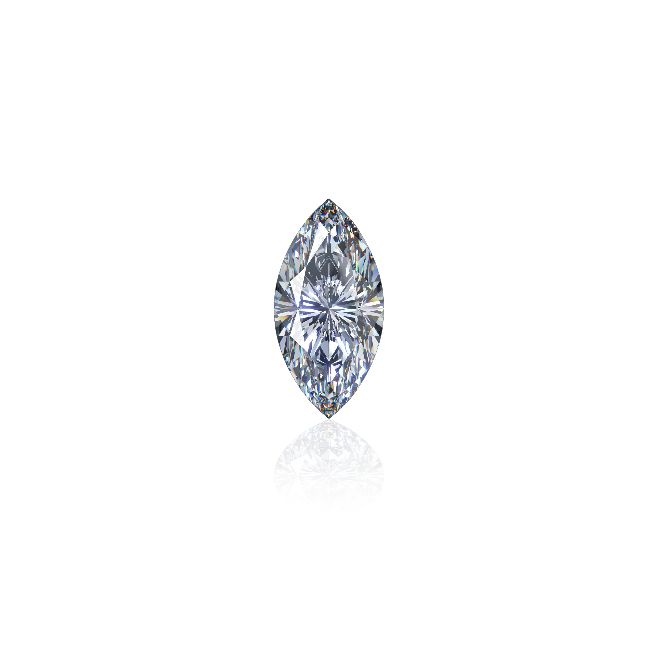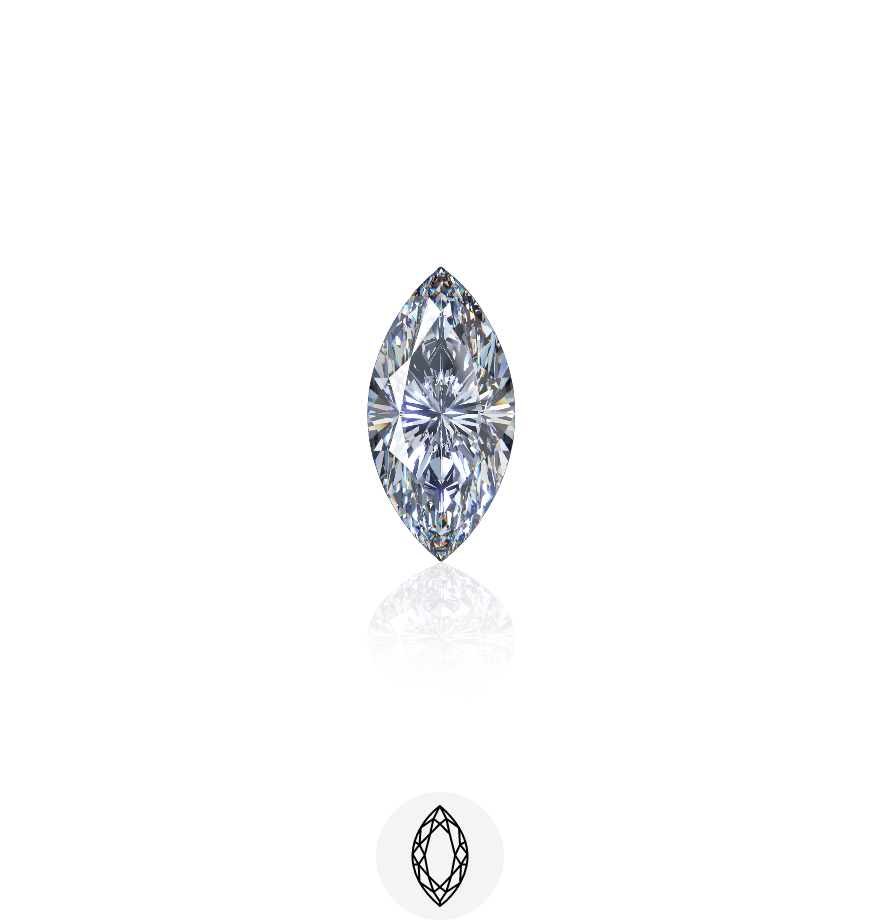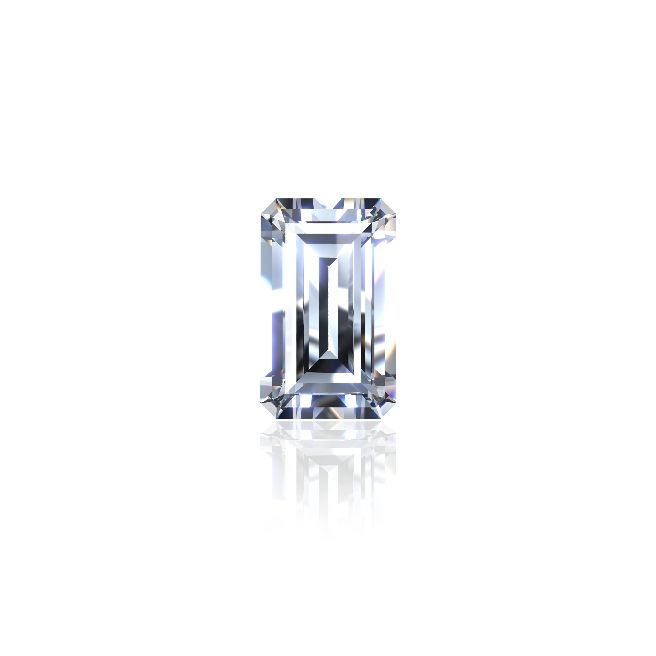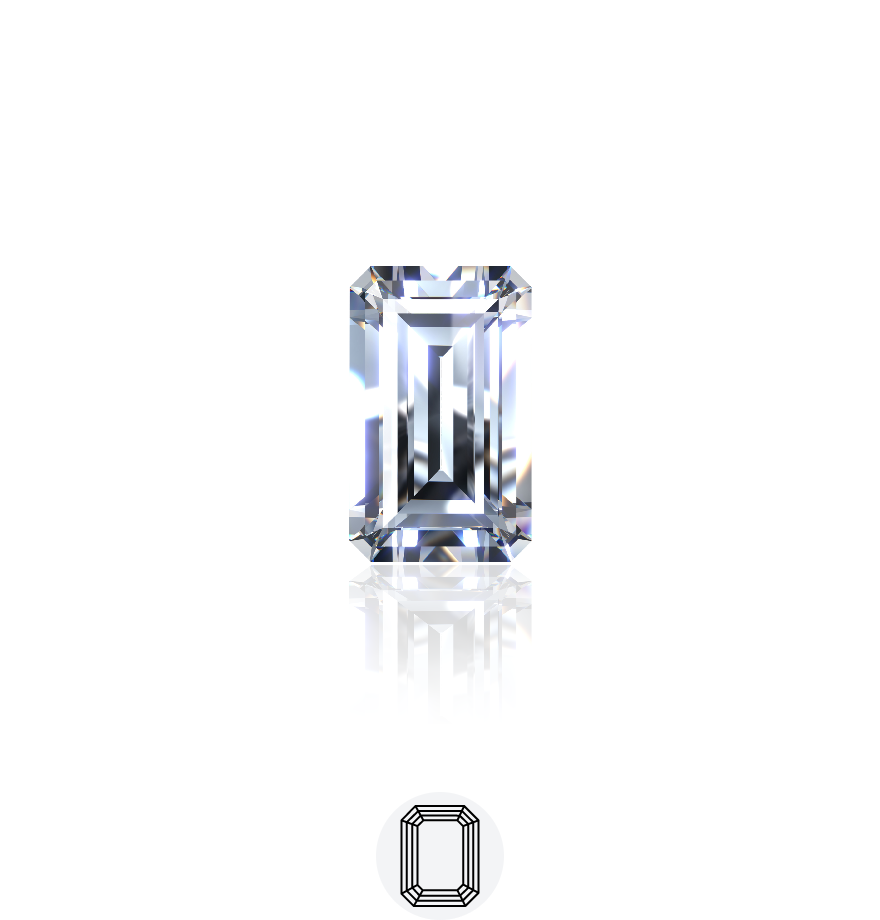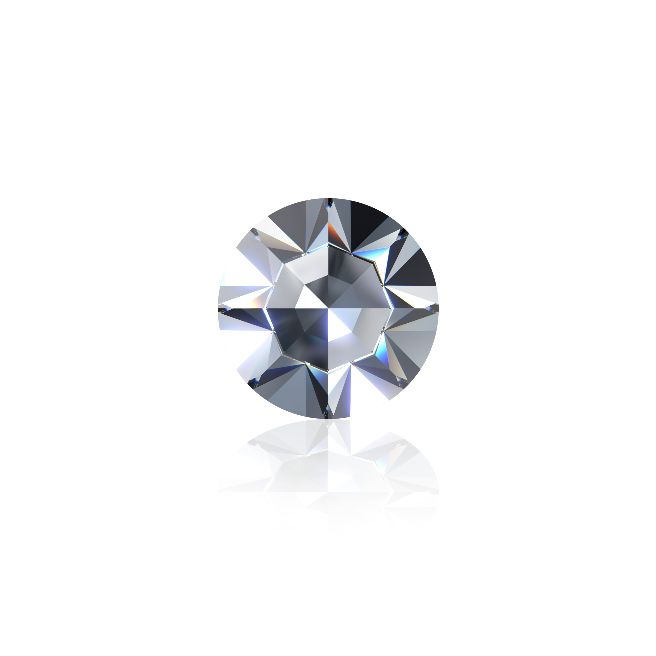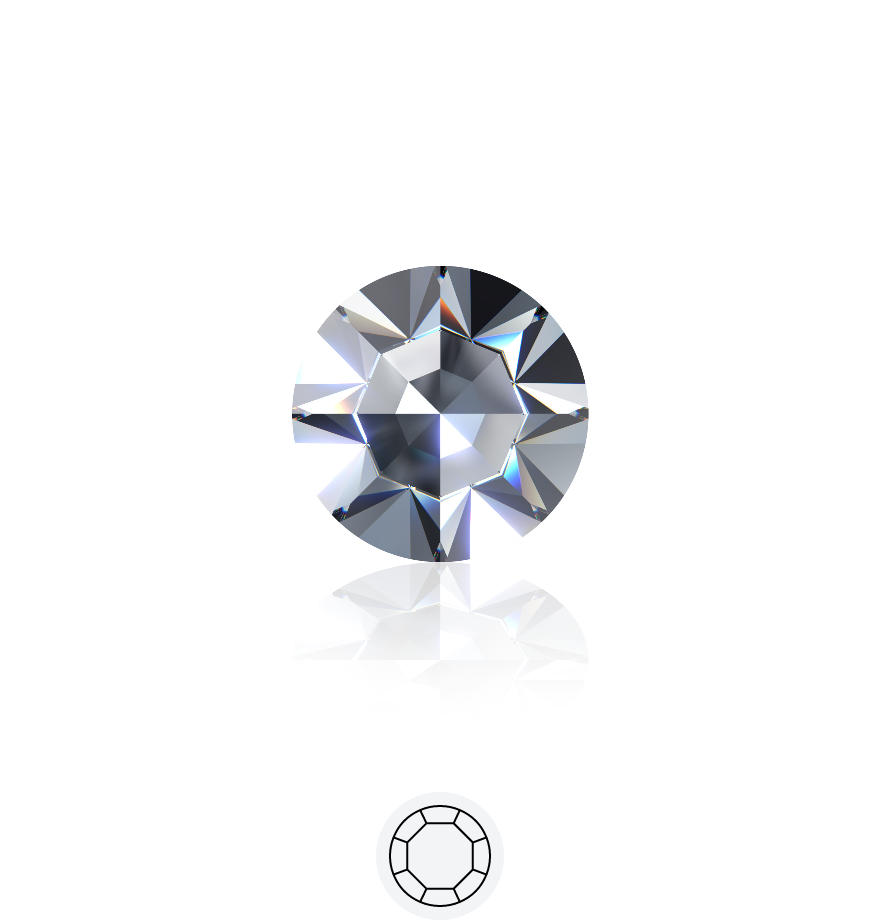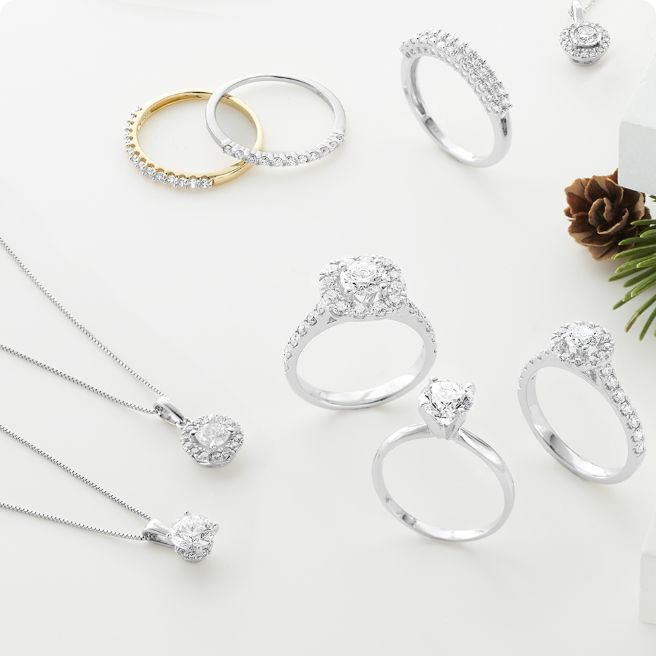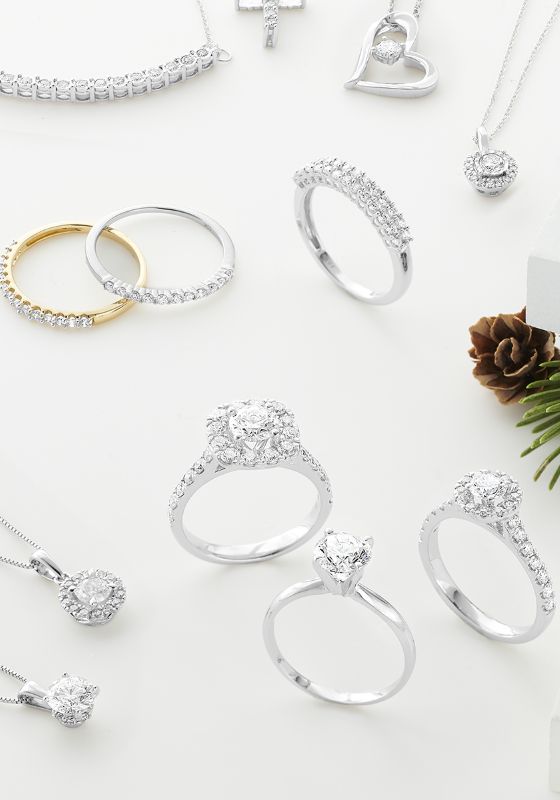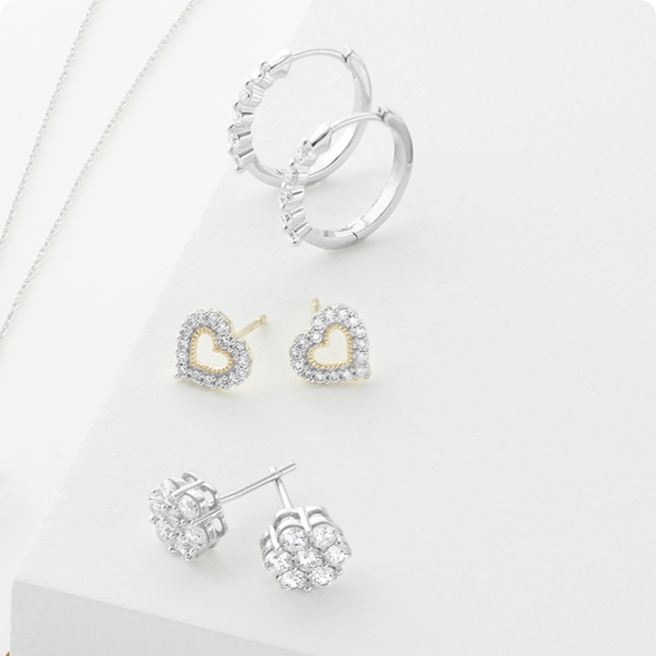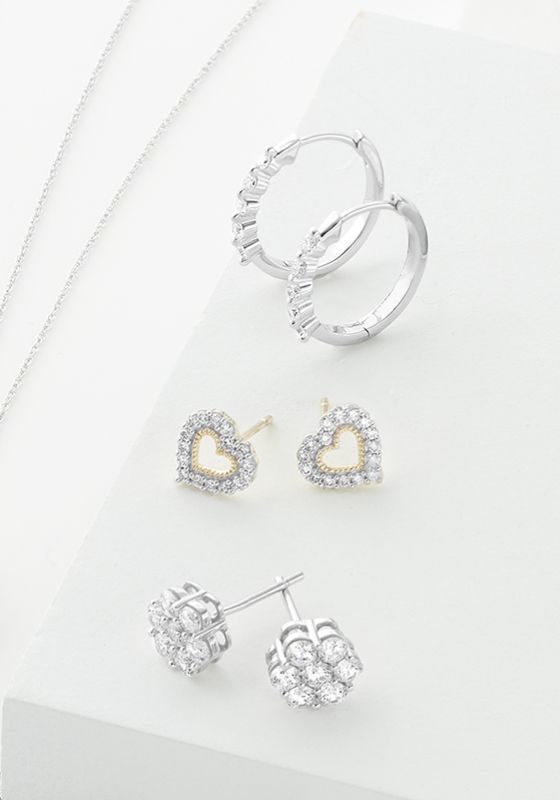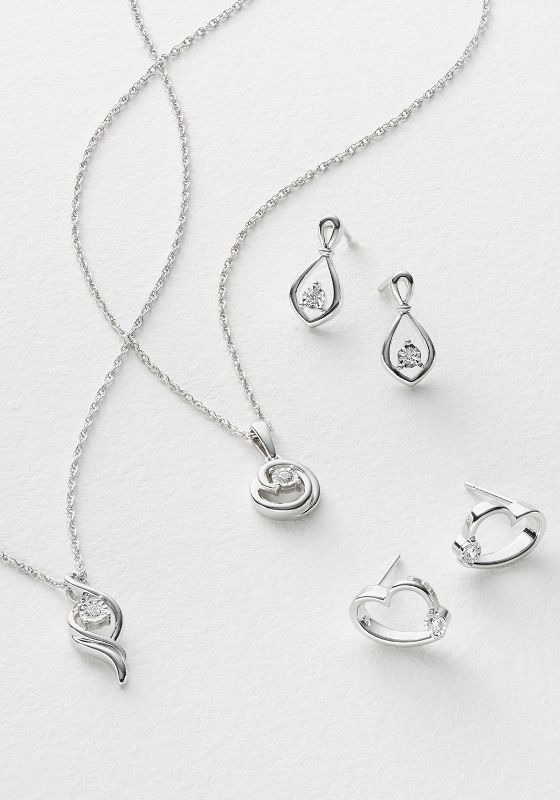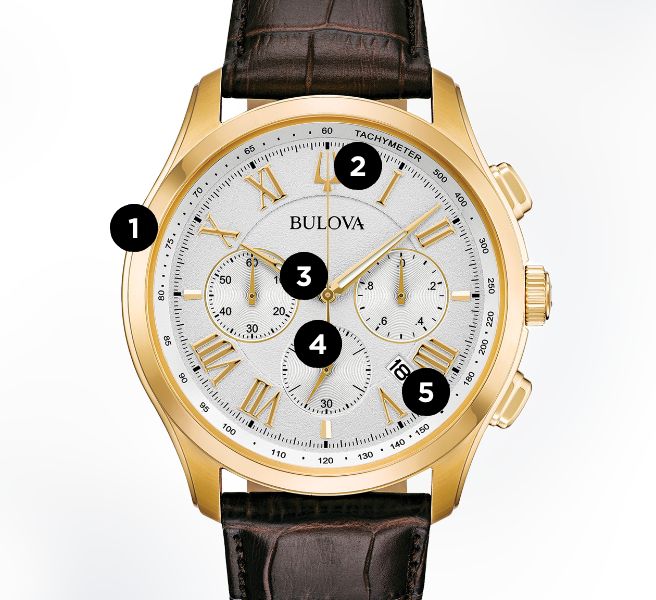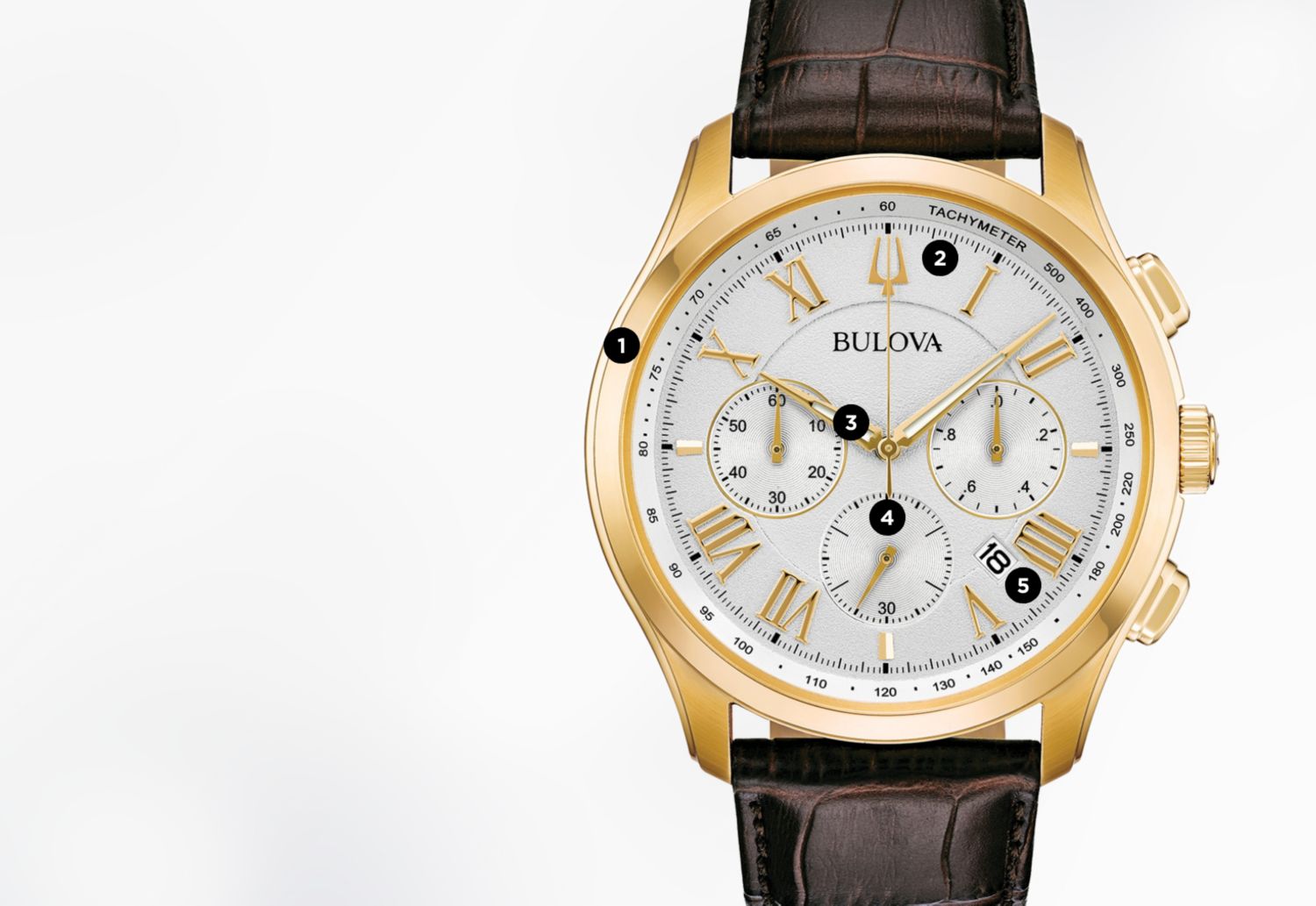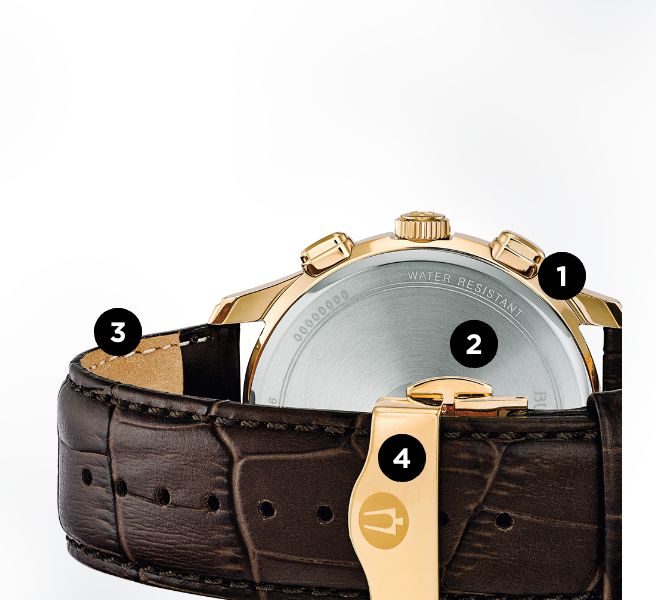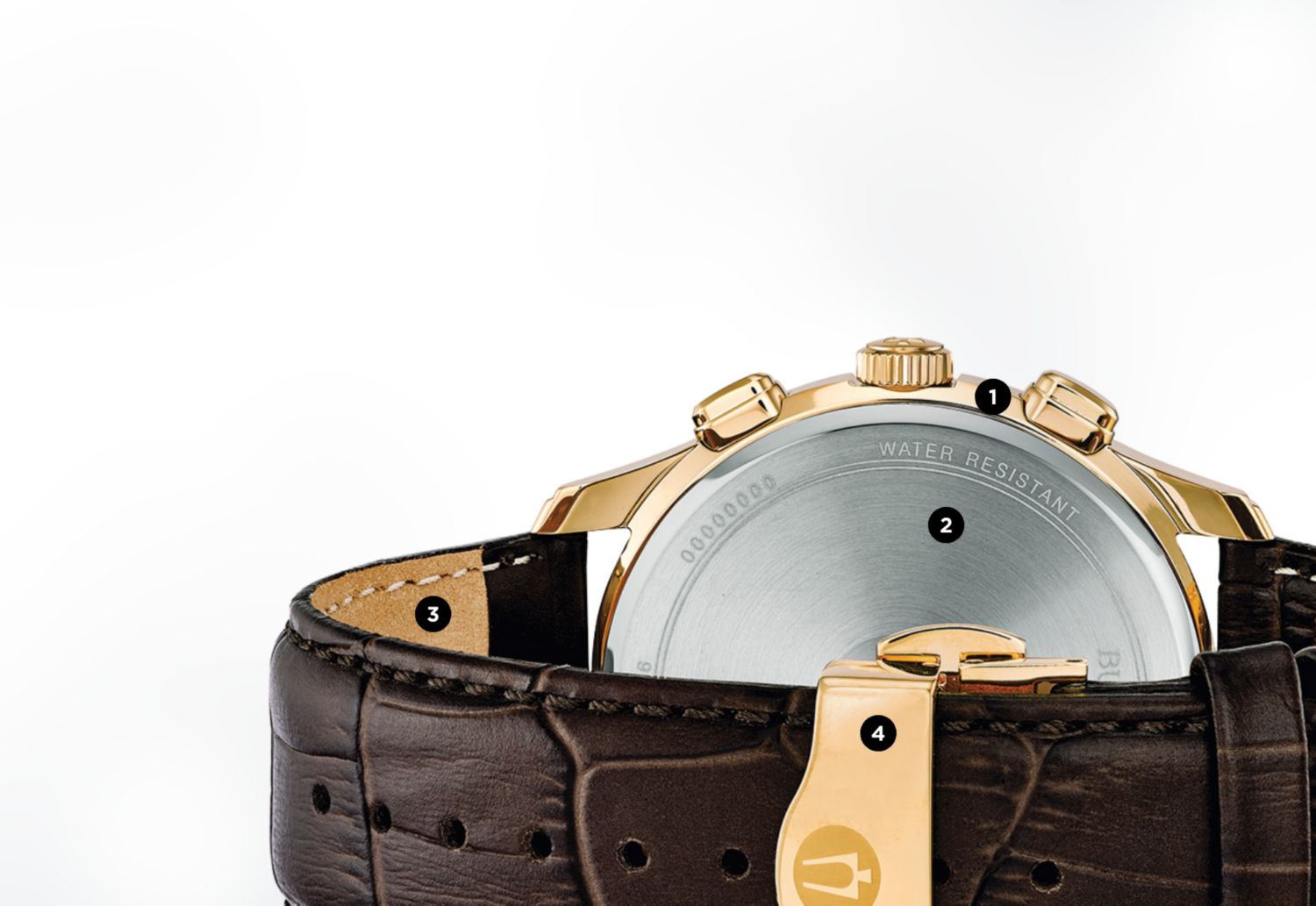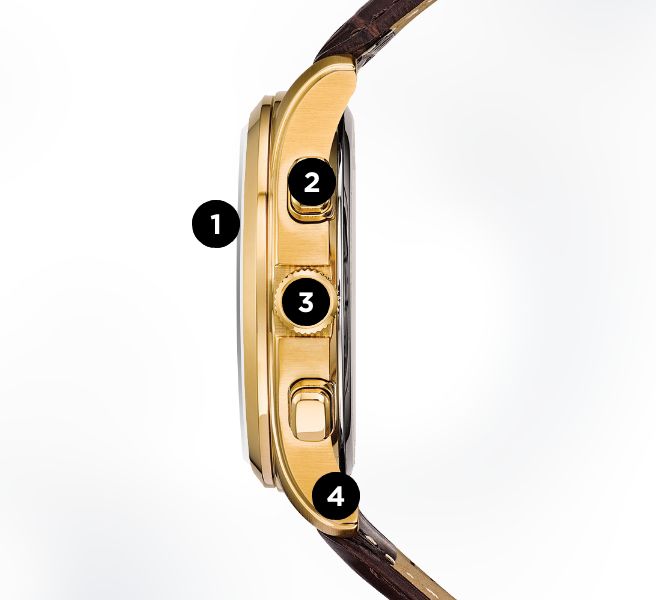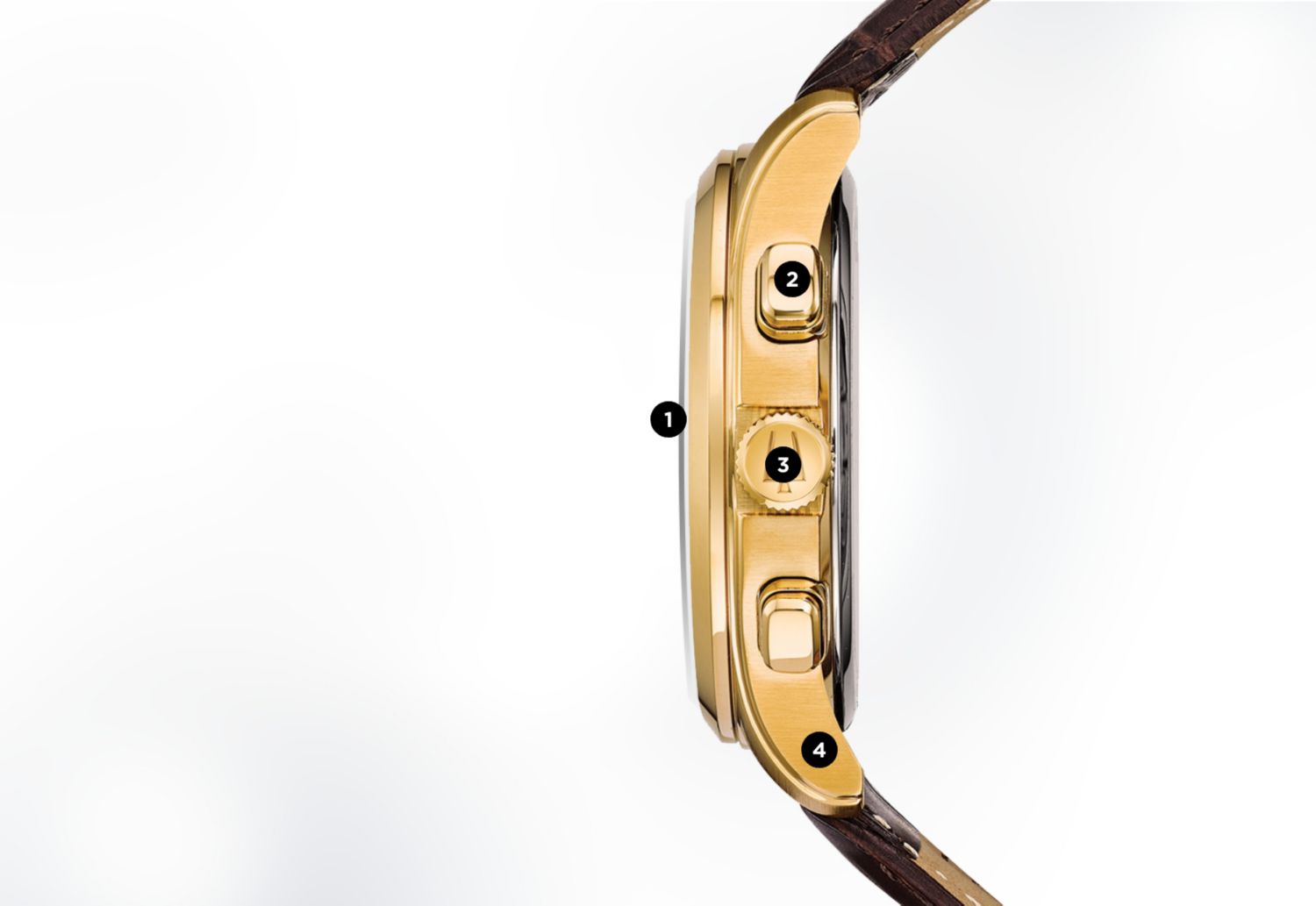Jewelry Guide
From everyday wear to something special, there is no shortage of jewelry options to express your unique style. There are many things you will need to consider while shopping. Here is a complete breakdown of everything you need to know to be informed while searching for that perfect piece.
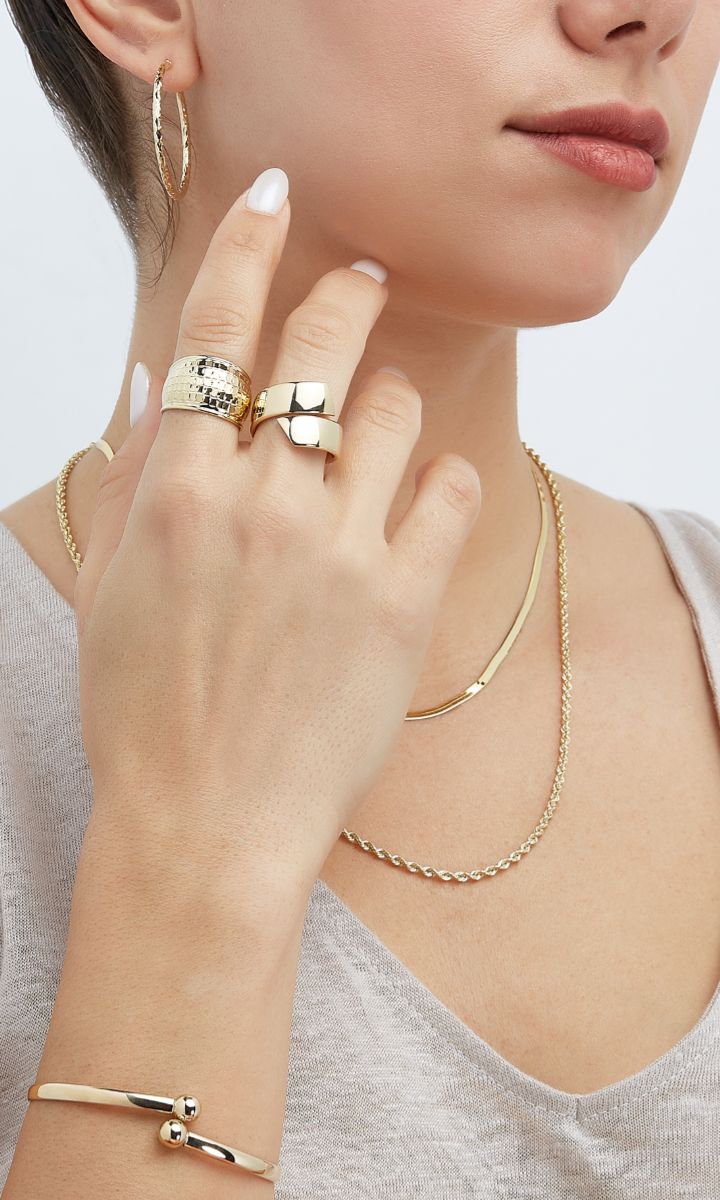
Design & Style
Chain Necklaces
There are many different styles of chains to pick from. Some are designed to be stand-alone pieces, while some are meant to be paired with a charm or pendant. Knowing a chain's attributes are important and will help you shop with confidence.
Chain Length
The ideal chain length depends on a number of factors, including body shape and your outfit of choice. Typically, you want a chain to fall just above the neckline of your outfit. Longer chains allow you to layer your jewelry with shorter chains, which adds texture to your look.
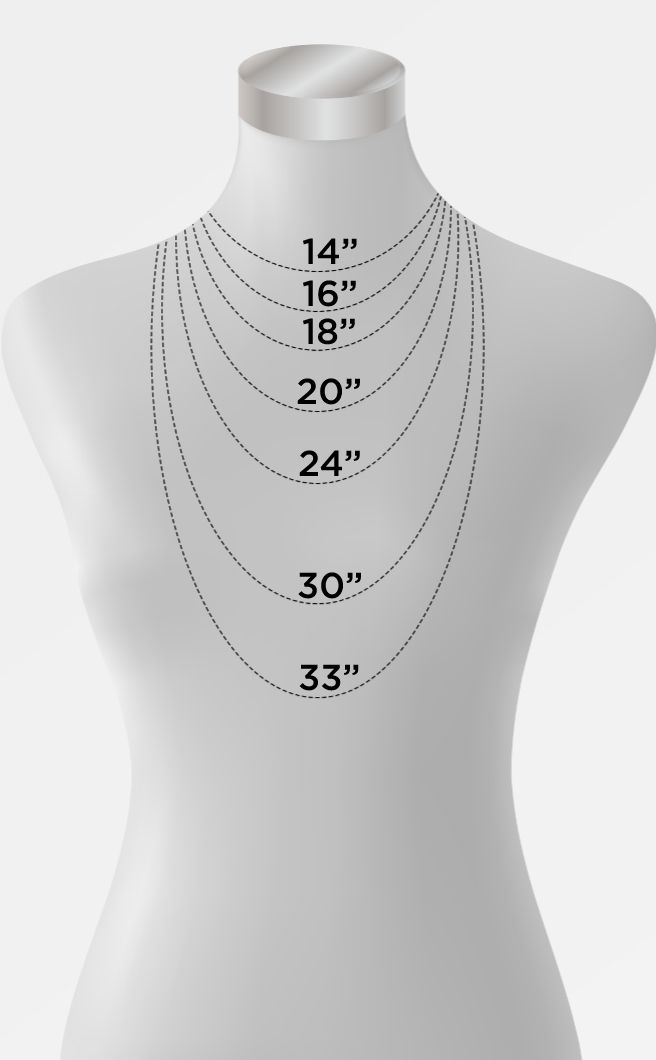
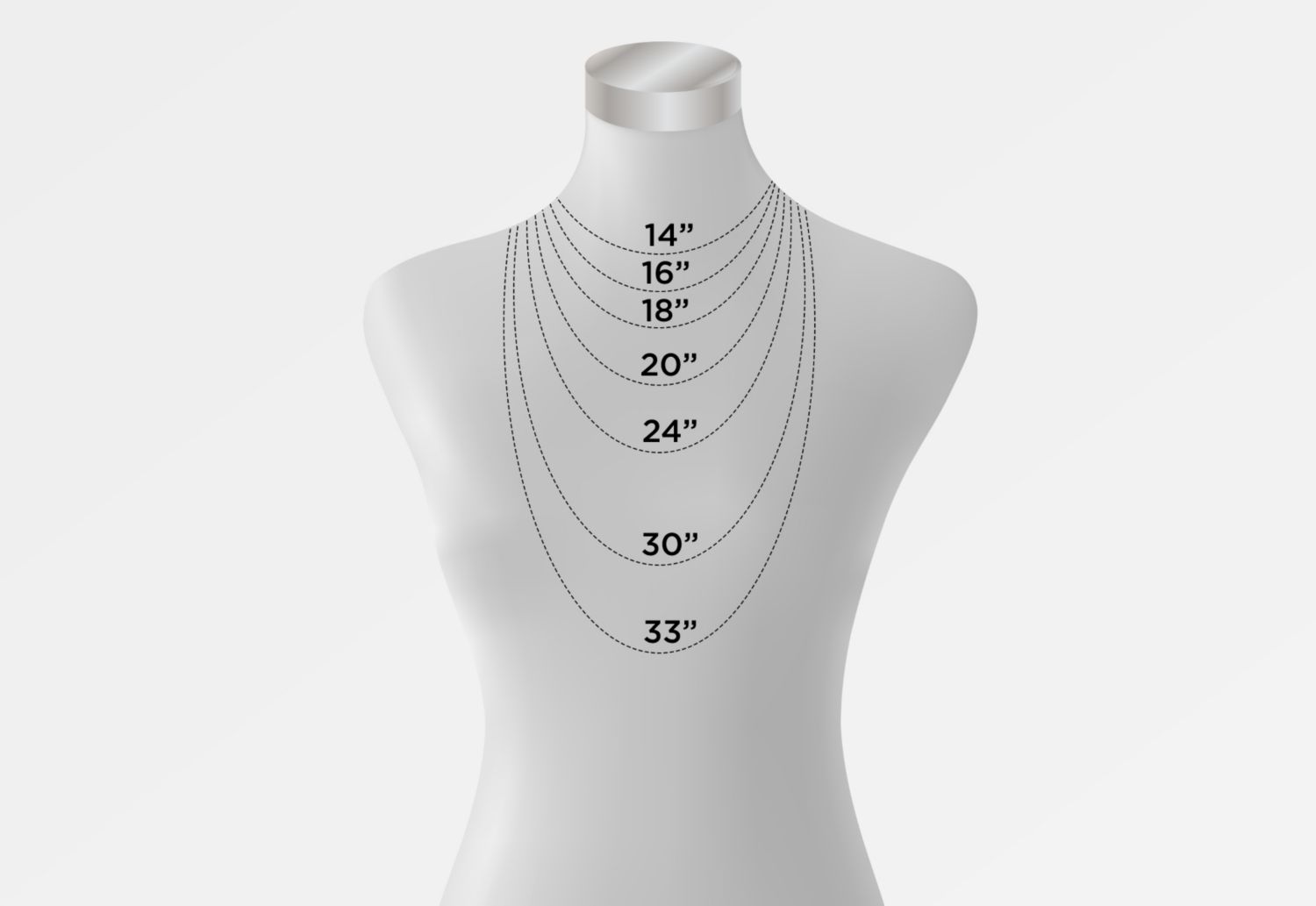
Chain Length
Measurements are approximate.
Types of Chains
Thicker chains are best for everyday wear, while thinner necklaces may have an intricate design and are best saved for special occasions. Here are some popular types of chains and some of their unique characteristics.
-
Cuban
Links interlock with each other when laid flat.
-
Figaro
Pattern design of standard links grouped together followed by an elongated link.
-
Mariner
Oval links with a distinct vertical support at the center of each link to provide added strength.
-
Foxtail
Links set at 45-degree angles give a distinct pattern and similar in design to a fox's tail.
-
Franco
Variation to a curb chain that features tightly woven chevron links.
-
Byzantine
Intricate and closely linked design that is strong but flexible.
-
Paperclip
Features long, oval or rectangular links that resemble paper clips.
-
Rope
Oval links designed to appear as if two strands are twisted together.
-
Rolo
Round or oval symmetrical links help make this chain perfect for hanging charms.
-
Box
Formed by linking of interconnected six-sided, three-dimensional miniature boxes.
-
Snake
Tightly linked chain that resembles a snakeskin design.
-
Singapore
Made from diamond-cut links that are flattened and twisted to give an intense sparkle.
-
Wheat
Created by braiding four strands of oval and twisted-oval links to resemble an ear of wheat.
Gemstones
Gemstones help you express your individual sense of style. Found in a rainbow of vivid hues, gemstone jewelry offers a colorful complement to any outfit in your wardrobe.
Gemstone Types
To pick the perfect gemstone, you should consider quality factors like a stone's color, clarity and shape. Gemstone jewelry provides a personal touch to a vibrant style and is a great way to make a piece of jewelry stand out.
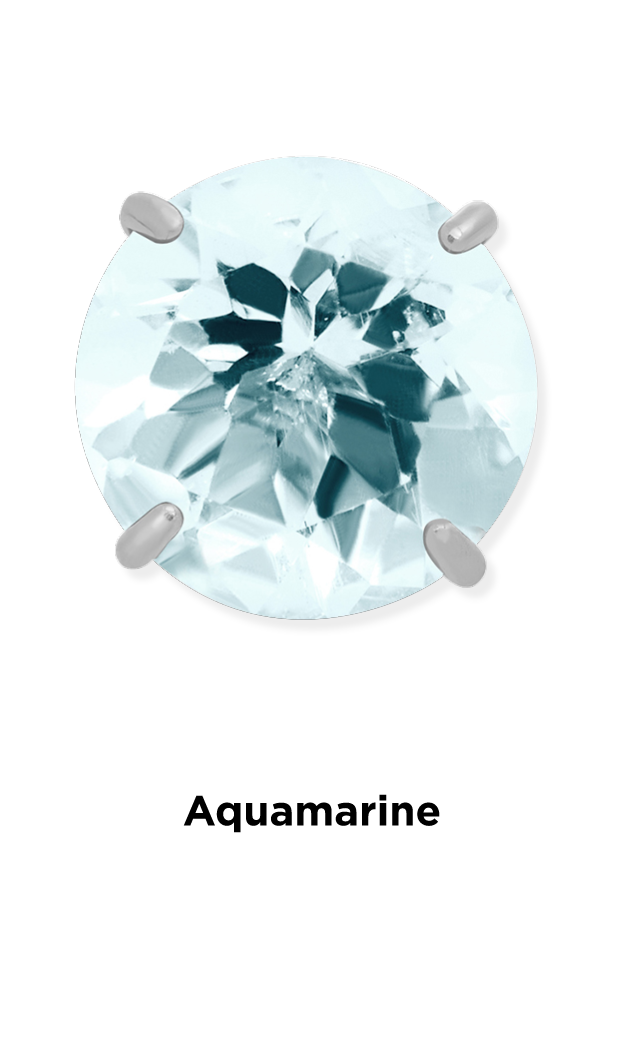
Aquamarine
Part of the beryl family, this stone comes in calming blue-green hues. • March birthstone
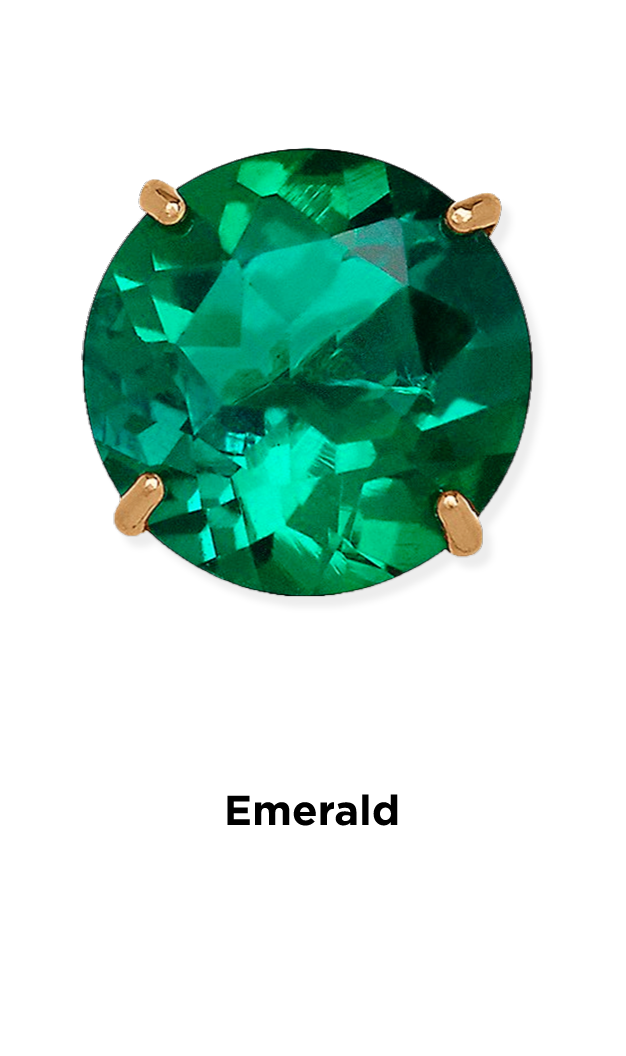
Emerald
Member of the beryl family and has green hues ranging from transparent to translucent. • May birthstone
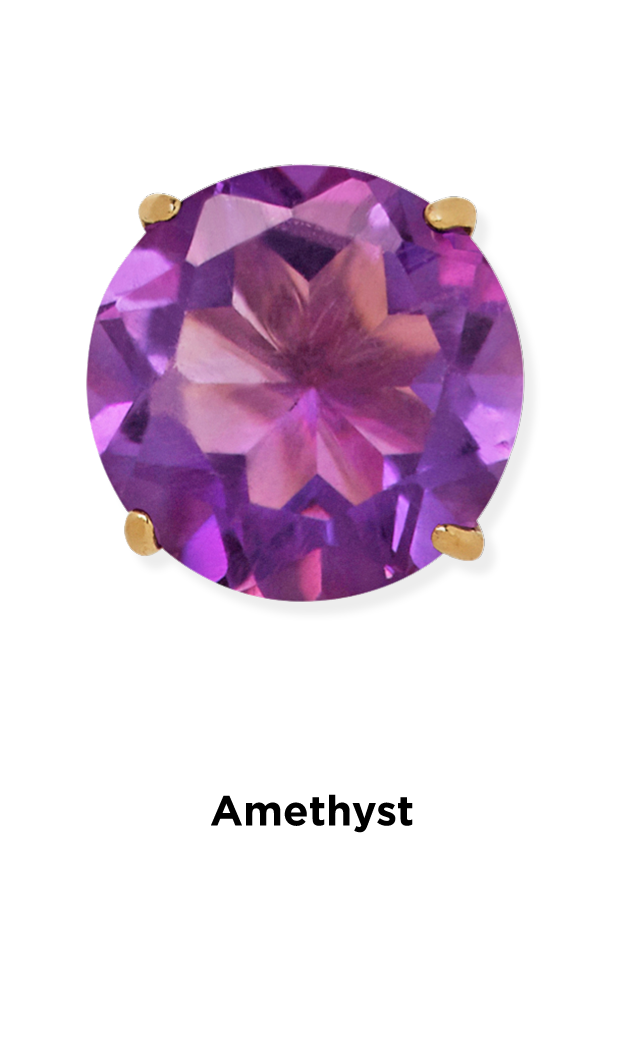
Amethyst
Variation of quartz that comes in a range of hues from pale lavender to deep royal purple. • February birthstone
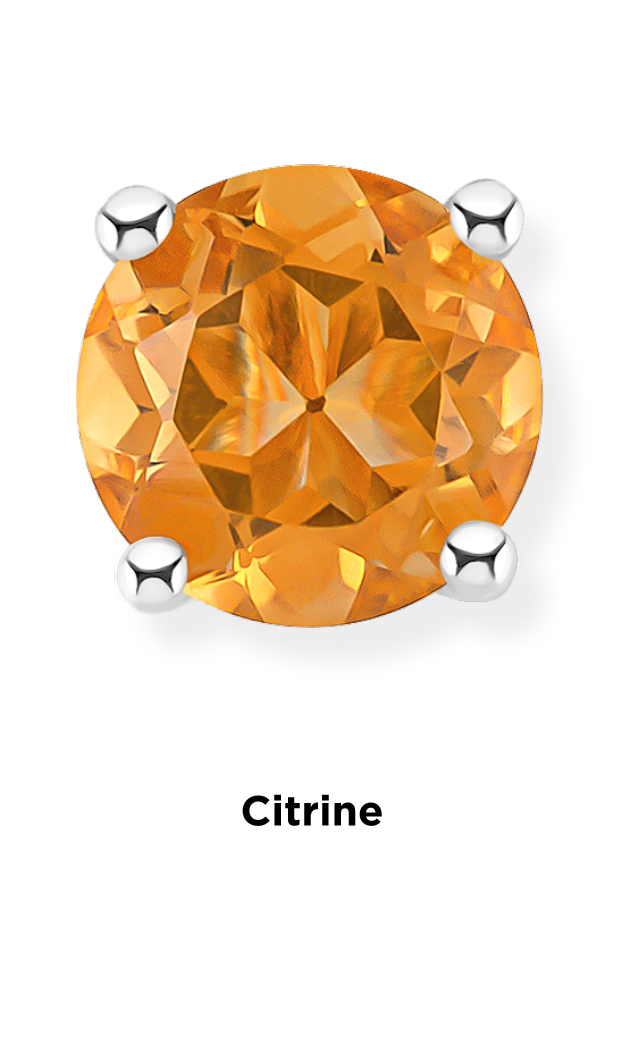
Citrine
Member of the quartz family that ranges in color from light yellow to deep golden yellow. • November birthstone
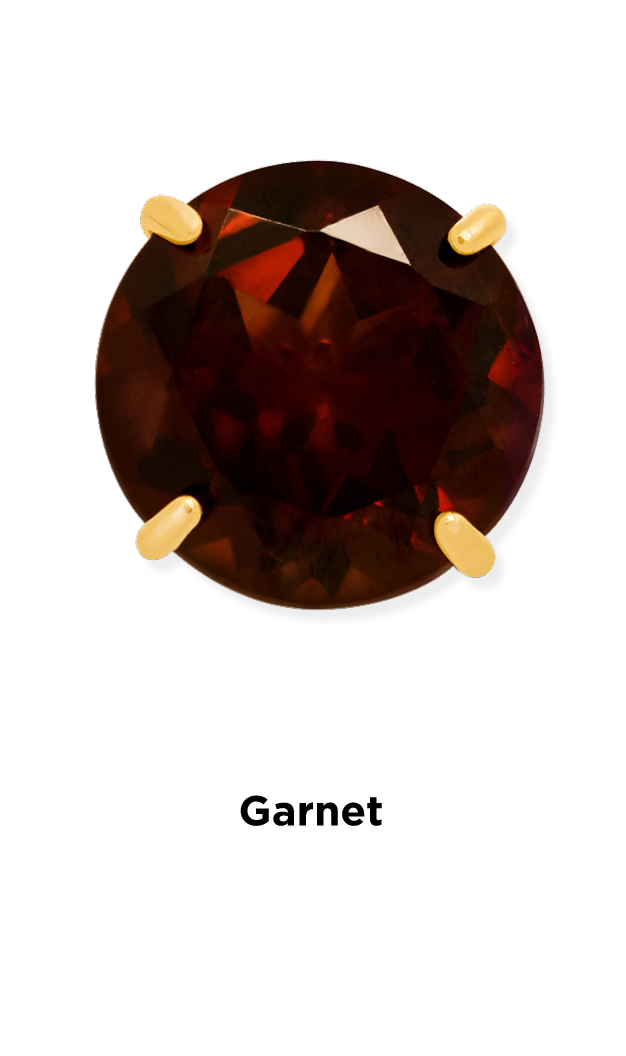
Garnet
Comes in all colors except blue, with red being the most common, and ranges from transparent to opaque. • January birthstone

Moissanite
Colorless, lab-created gemstone that radiates vibrant rainbow hues. Often used as a diamond alternative in engagement rings due its remarkable brilliance, durability and affordability.
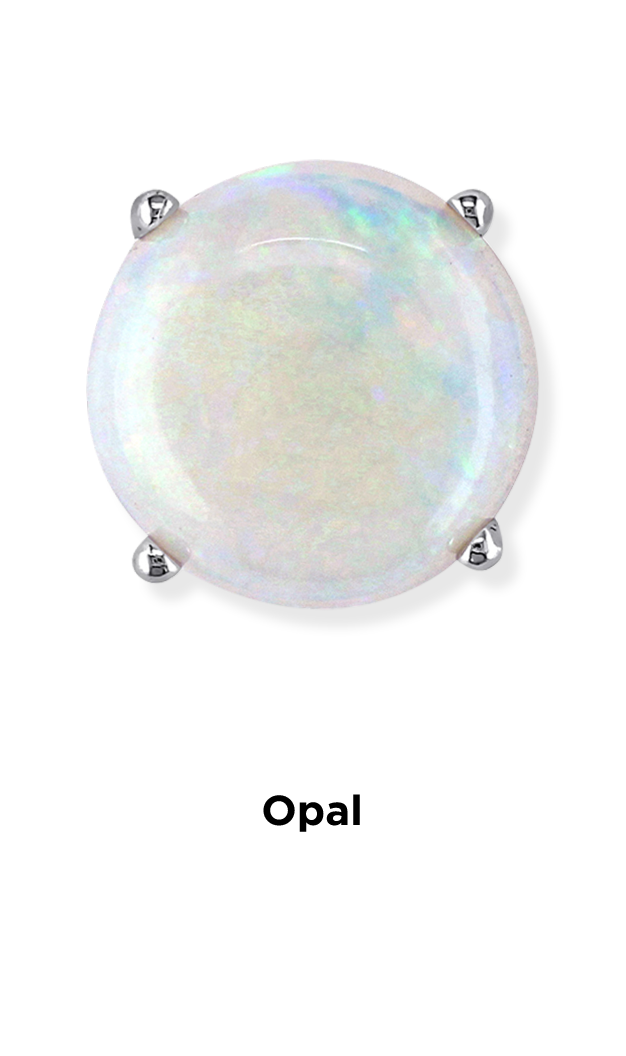
Opal
Prized for its ability to diffract light and create shimmering, iridescent rainbows. The base color is typically white. • October birthstone
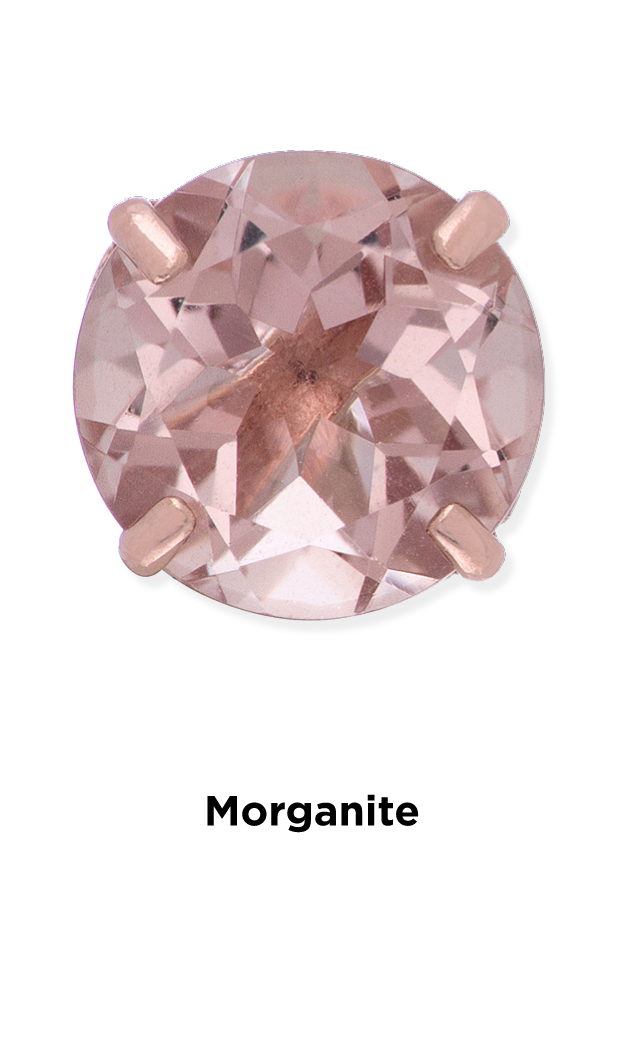
Morganite
Variety of the mineral beryl and is transparent to translucent and most often pink with orange and yellow variations.
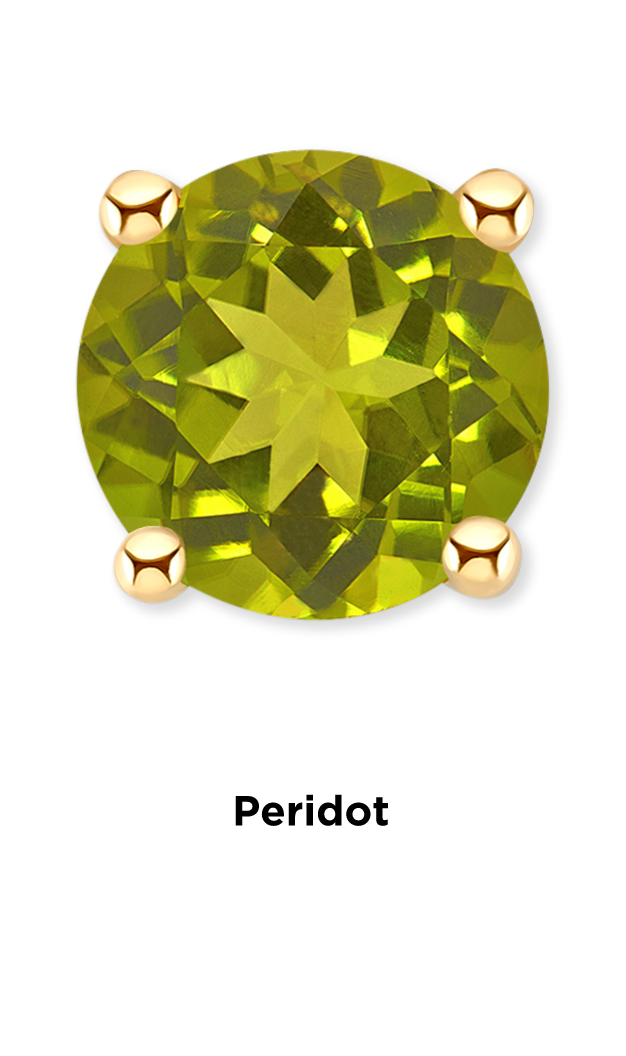
Peridot
Also known as olivine, this transparent gem ranges in color from bottle green to olive green. • August birthstone
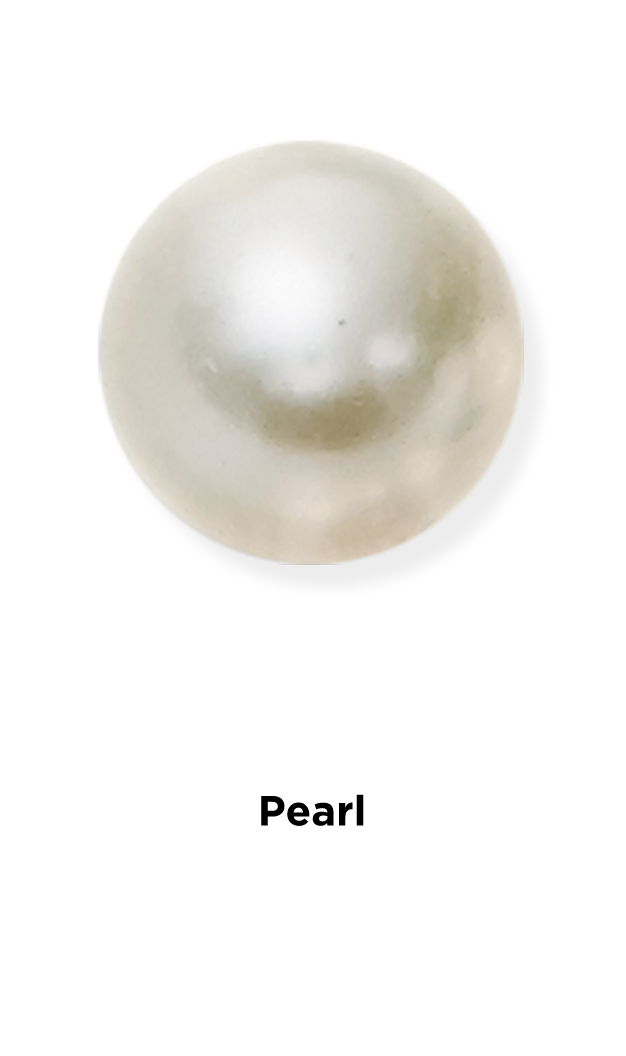
Pearl
Pearls are produced by mollusks as a natural defense against irritants. These irritants are covered with layers of nacre, resulting in a lustrous and captivating gem. • June birthstone
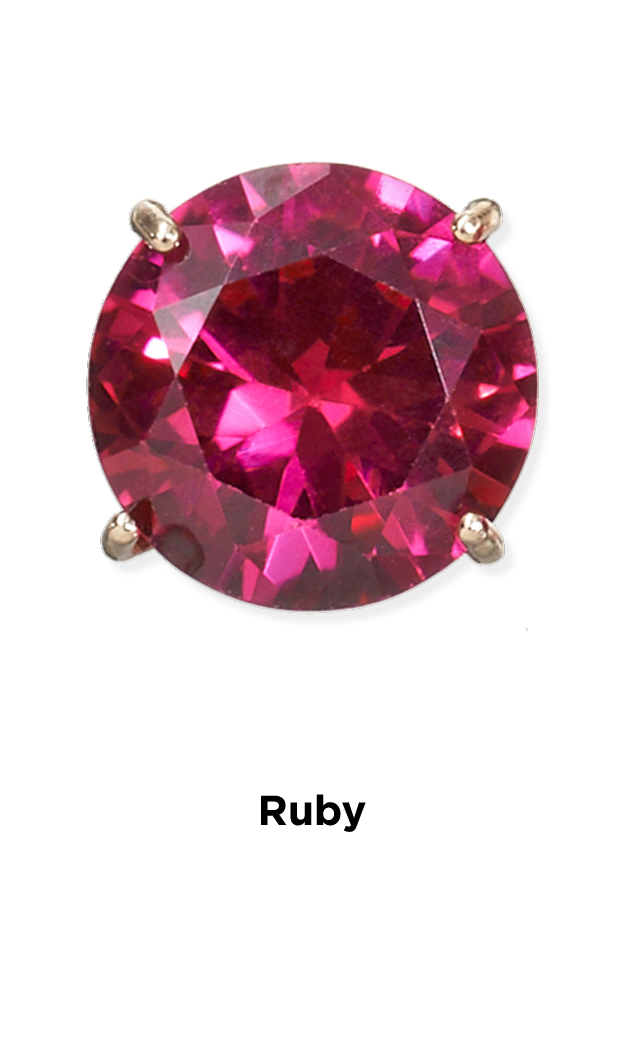
Ruby
Variety of the mineral corundum that captures captivating hues ranging from vibrant reds with orange or purple overtones. A hard stone that resists scratches. • July birthstone
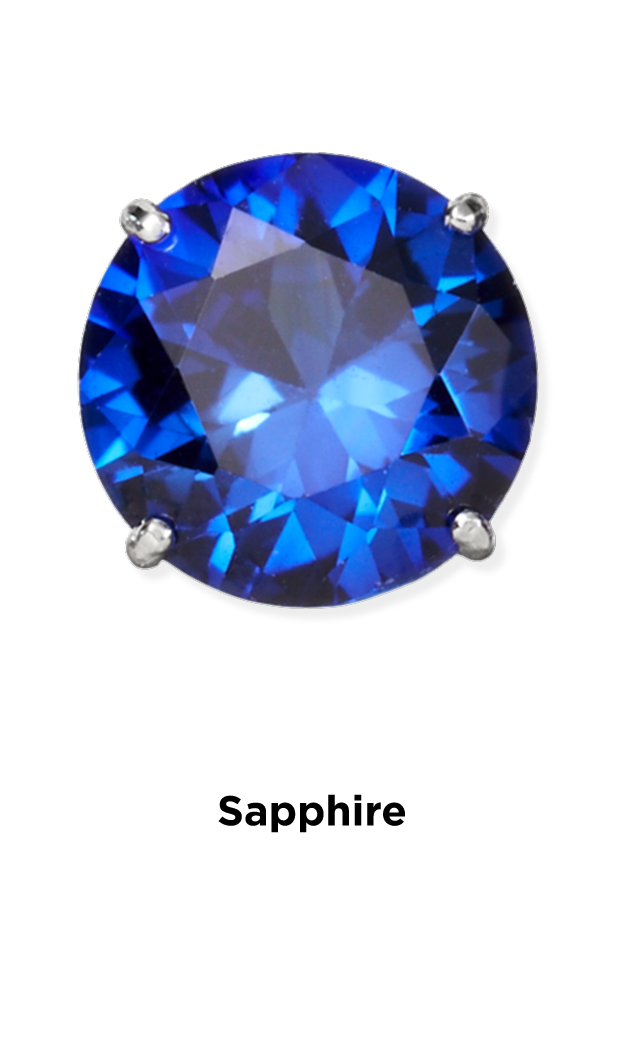
Sapphire
Variety of the mineral corundum that is known for its blue but can be found in an array of vibrant colors with the exception of red. • September birthstone
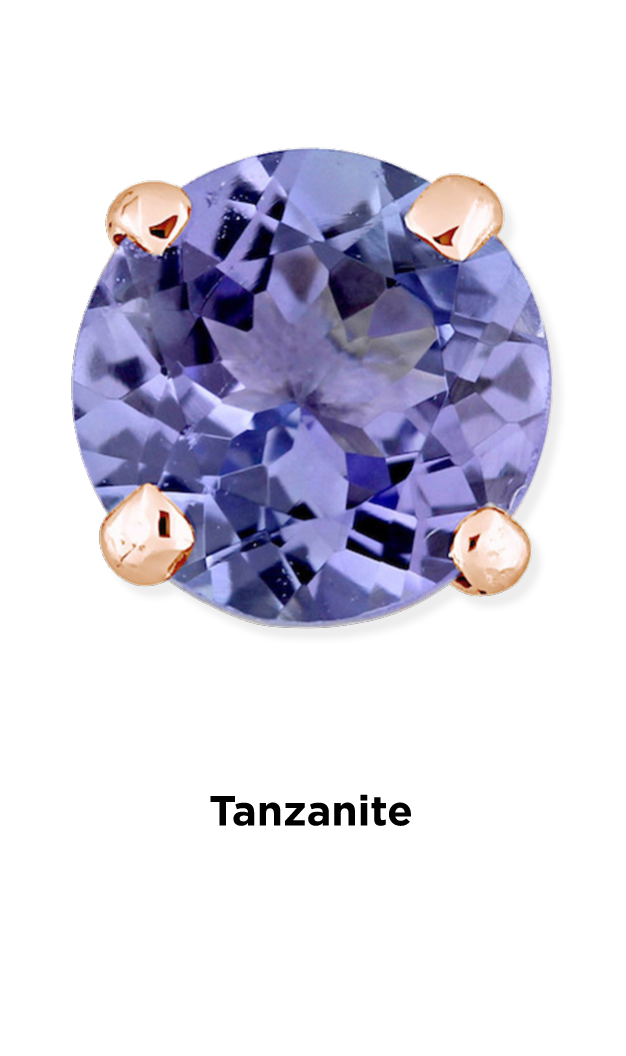
Tanzanite
Blue variety of the mineral zoisite with color range from rich blue and violet to softer hues of blue or lilac purple.
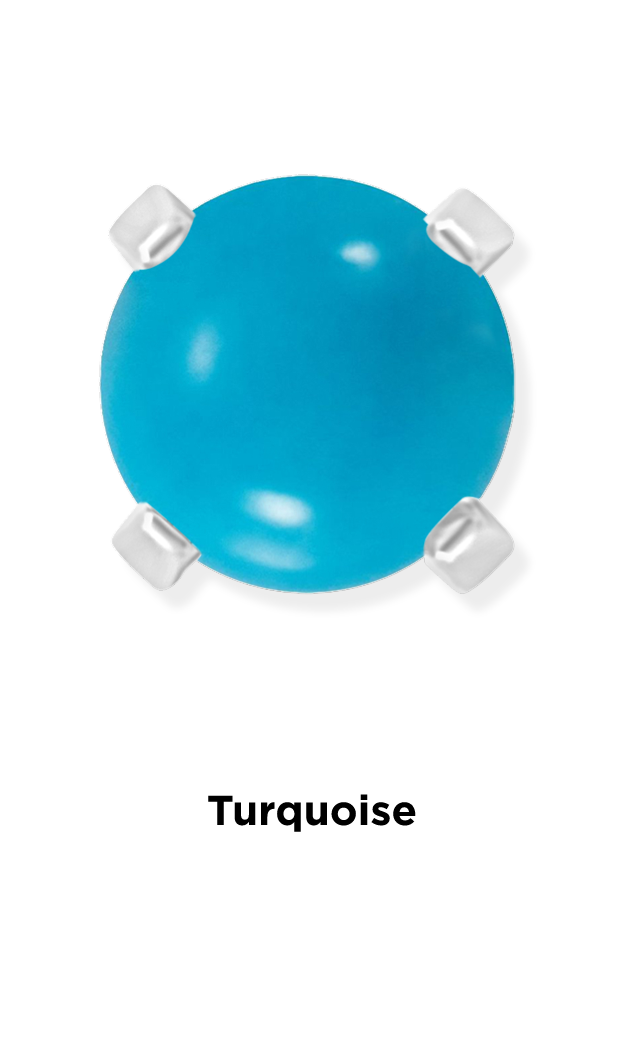
Turquoise
Opaque stone that is blue to bluish green in color and often interspersed by veins and marbling. • December birthstone
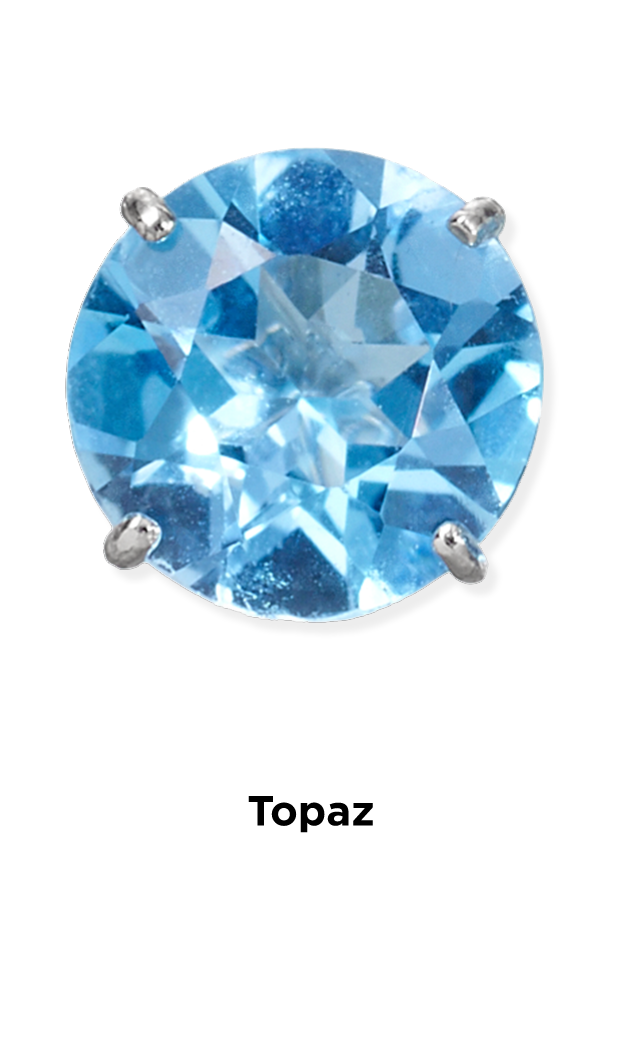
Topaz
Renowned for its kaleidoscope of color, ranging from traditional blues and green pastels to vivid oranges, reds and purples.
-
Aquamarine
Part of the beryl family, this stone comes in calming blue-green hues. • March birthstone
-
Emerald
Member of the beryl family and has green hues ranging from transparent to translucent. • May birthstone
-
Amethyst
Variation of quartz that comes in a range of hues from pale lavender to deep royal purple. • February birthstone
-
Citrine
Member of the quartz family that ranges in color from light yellow to deep golden yellow. • November birthstone
-
Garnet
Comes in all colors except blue, with red being the most common, and ranges from transparent to opaque. • January birthstone
-
Moissanite
Colorless, lab-created gemstone that radiates vibrant rainbow hues. Often used as a diamond alternative in engagement rings due its remarkable brilliance, durability and affordability.
-
Opal
Prized for its ability to diffract light and create shimmering, iridescent rainbows. The base color is typically white. • October birthstone
-
Morganite
Variety of the mineral beryl and is transparent to translucent and most often pink with orange and yellow variations.
-
Peridot
Also known as olivine, this transparent gem ranges in color from bottle green to olive green. • August birthstone
-
Pearl
Pearls are produced by mollusks as a natural defense against irritants. These irritants are covered with layers of nacre, resulting in a lustrous and captivating gem. • June birthstone
-
Ruby
Variety of the mineral corundum that captures captivating hues ranging from vibrant reds with orange or purple overtones. A hard stone that resists scratches. • July birthstone
-
Sapphire
Variety of the mineral corundum that is known for its blue but can be found in an array of vibrant colors with the exception of red. • September birthstone
-
Tanzanite
Blue variety of the mineral zoisite with color range from rich blue and violet to softer hues of blue or lilac purple.
-
Turquoise
Opaque stone that is blue to bluish green in color and often interspersed by veins and marbling.
-
Topaz
Renowned for its kaleidoscope of color, ranging from traditional blues and green pastels to vivid oranges, reds and purples. • December birthstone
Gemstone Origins
In selecting a gemstone it is essential to understand how your gemstones are mined or made to help ensure the right piece for your purpose, style and budget.
Care and Maintenance
With all gemstones, avoid rough handling when they are not being worn. Keep jewelry items separate to avoid scratches. Clean with warm, soapy water and gentle brushing.
Ring Sizing
Choosing the correct size ensures that your ring fits comfortably and securely on your finger. Use our ring sizing guide to detemine the perfect size for you.
VIEW SIZING GUIDE

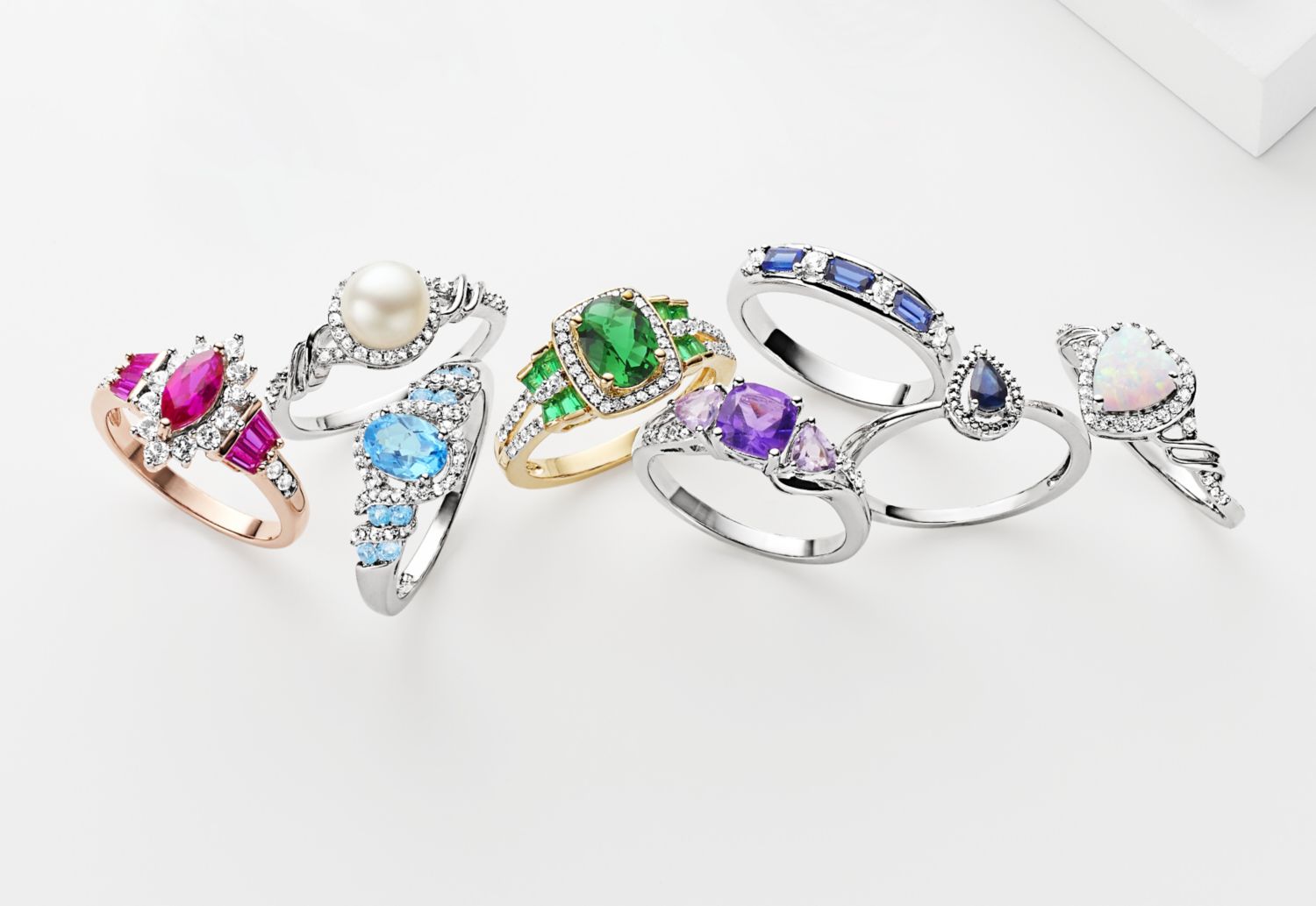
Find Your Perfect Size Ring
When measuring, be sure to allow for any potential swelling due to temperature changes.
VIEW SIZING GUIDE
Diamonds
Diamonds come in a variety of different shapes, sizes, cuts and colors and provide endless beauty as light reflects off them. Knowing the quality factors that make a diamond dazzle will help you choose the right diamond jewelry for you.
The 4 Cs of Diamonds
Much like a snowflake, every diamond is truly unique. All share certain characteristics that help determine a diamond's quality. These are known as the 4 Cs: cut, carat, clarity and color.
Diamond & Gemstone Shapes
A gemstone's shape and setting give each piece a unique look to bring out a stone's optimal sparkle and brilliance. An array of distinct shapes gives you options when choosing the perfect piece for your style.
-
Round
The fire and brilliance of a round-cut stone make it a breathtaking choice for solitaires and engagement rings.
-
Oval
Popular choice for longer or more slender fingers. An oval-shaped stone adds a bit more of a distinct look than a round stone.
-
Heart
Pear-shaped stone with a small cleft at the top to create the heart shape. These stones lend beautiful sparkle to whatever piece they are set in.
-
Cushion
Combines a square cut with an appearance of rounded corners. This gives it a cushion-like look. Large facets highlight the stone's brilliance and clarity.
-
Pear
Rounded on one end and a single point on the other. The length of these stones has a slimming effect on the finger.
-
Princess
Square-shaped cut used to create a unique look and beautiful sparkle that make it a popular choice for engagement rings.
-
Marquise
Elongated oval with pointed ends. This long and narrow shape make the stone appear bigger than it actually is.
-
Emerald
Long and rectangular step-cut facets with a large open table. This cut highlights the clarity of the stone.
-
Single
Round diamond with a simple shape and formed with only 18 facets.
Lab-Grown Diamonds
Diamonds produced in a lab are chemically, optically and physically identical to natural diamonds. Lab-grown diamonds offer numerous benefits such as affordability and environmental sustainability.
Conflict-free Diamonds
Conflict diamonds are illegally-sourced, rough diamonds sold by rebel groups to fund military action against recognized governments. Also known as blood diamonds, conflict diamonds are most often from central and western Africa. Pursuant to Kohl's Social Responsible Product Sourcing Policy, Kohl's requires our suppliers of diamonds and jewelry to ensure that the merchandise they sell to Kohl's meets the requirements of the Clean Diamonds Trade Act, the Kimberley Process certification and that this merchandise does not contain conflict diamonds.
Certification
Some diamonds on Kohls.com may include a diamond certification issued by an independent and impartial gemological laboratory. The certification reports the quality and characteristics of the stone, ensures a diamond is natural and clearly discloses any treatments used to enhance color or clarity. It also includes a diagram of the diamond clearly showing the locations and types of flaws (inclusions) it has.
Body Jewelry
Body piercings are an expression of your personal style. It is essential to consider both aesthetics and anatomy when selecting the right type of body piercing for you. Nose, ear and other facial piercings are some of the more common types of piercings.
Ear
Pierced ears are very common with multiple options to choose from and include unique combinations. The most popular type of ear piercing is the traditional lobe, but you can include cartilage piercings like helix or tragus.
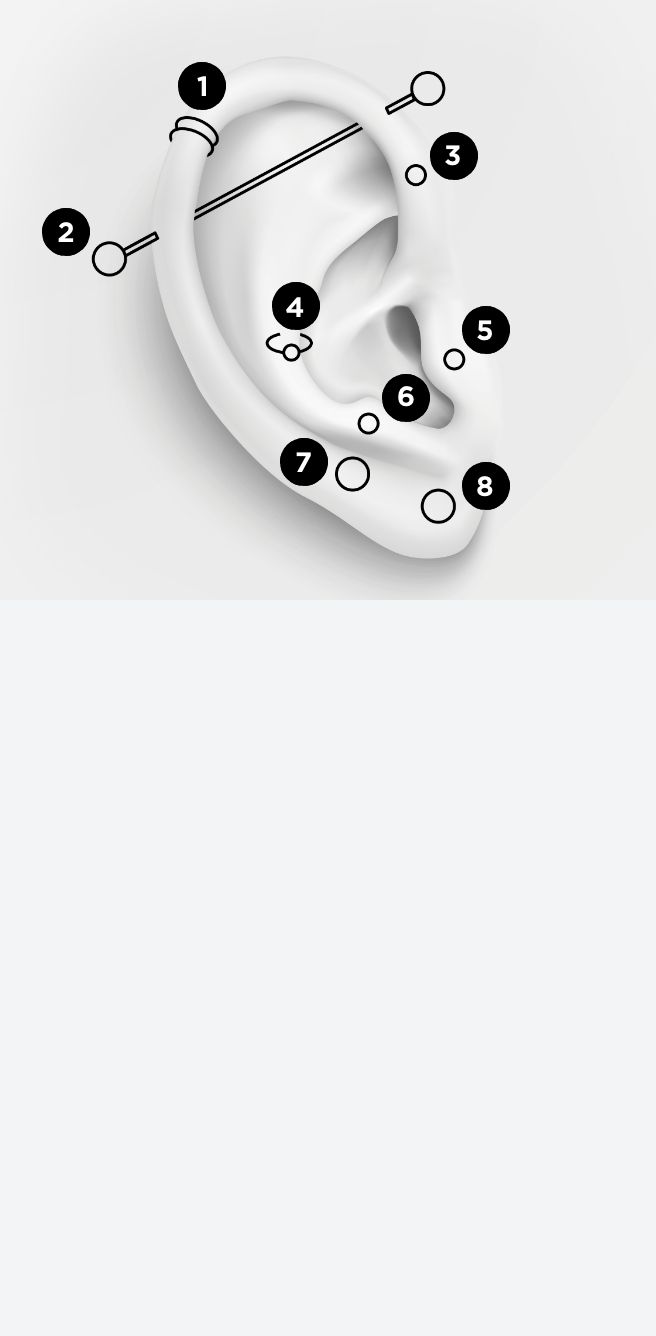
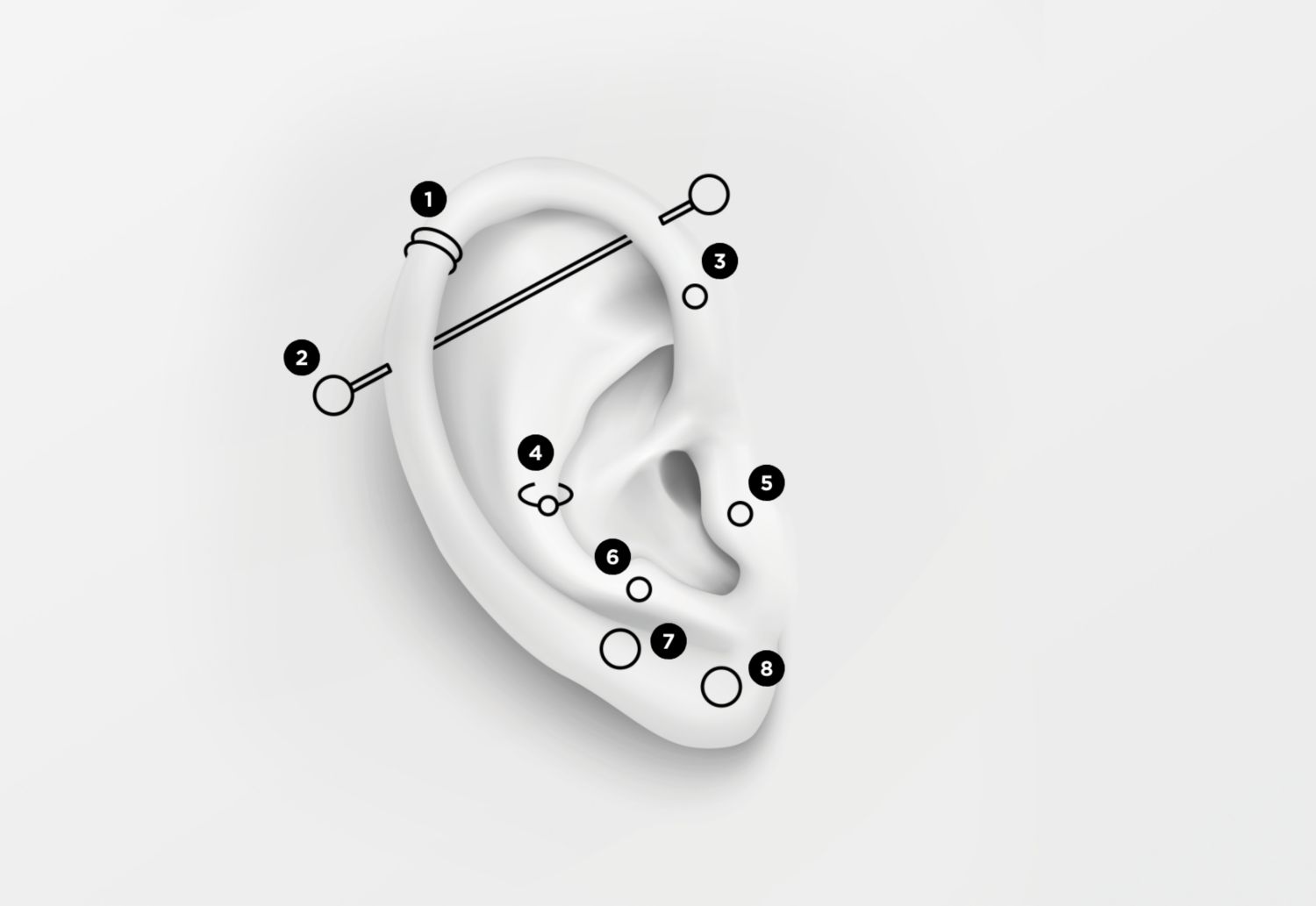
1. Ear Cuff
2. Industrial
3. Forward Helix
4. Snug
5. Tragus
6. Anti-Tragus
7. Inner Lobe
8. Standard Lobe
Nose
The nostril, septum, bridge and septril are all areas that can be pierced safely and comfortably. Each has its own benefits for various aesthetic and cultural purposes. The most popular location is undoubtedly on the side of the nostril.
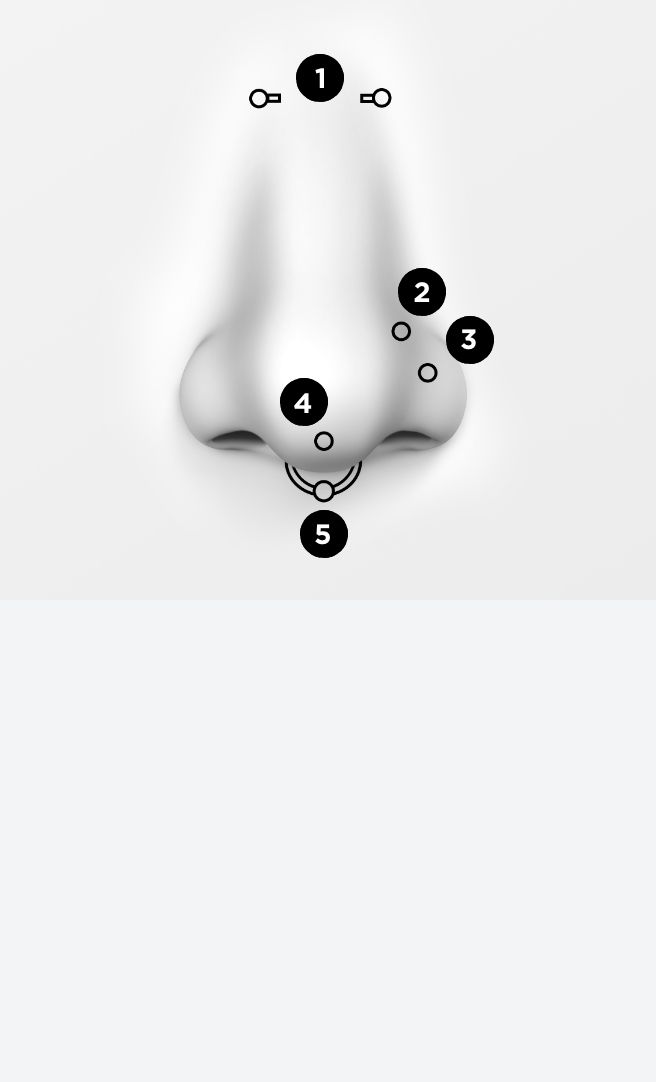
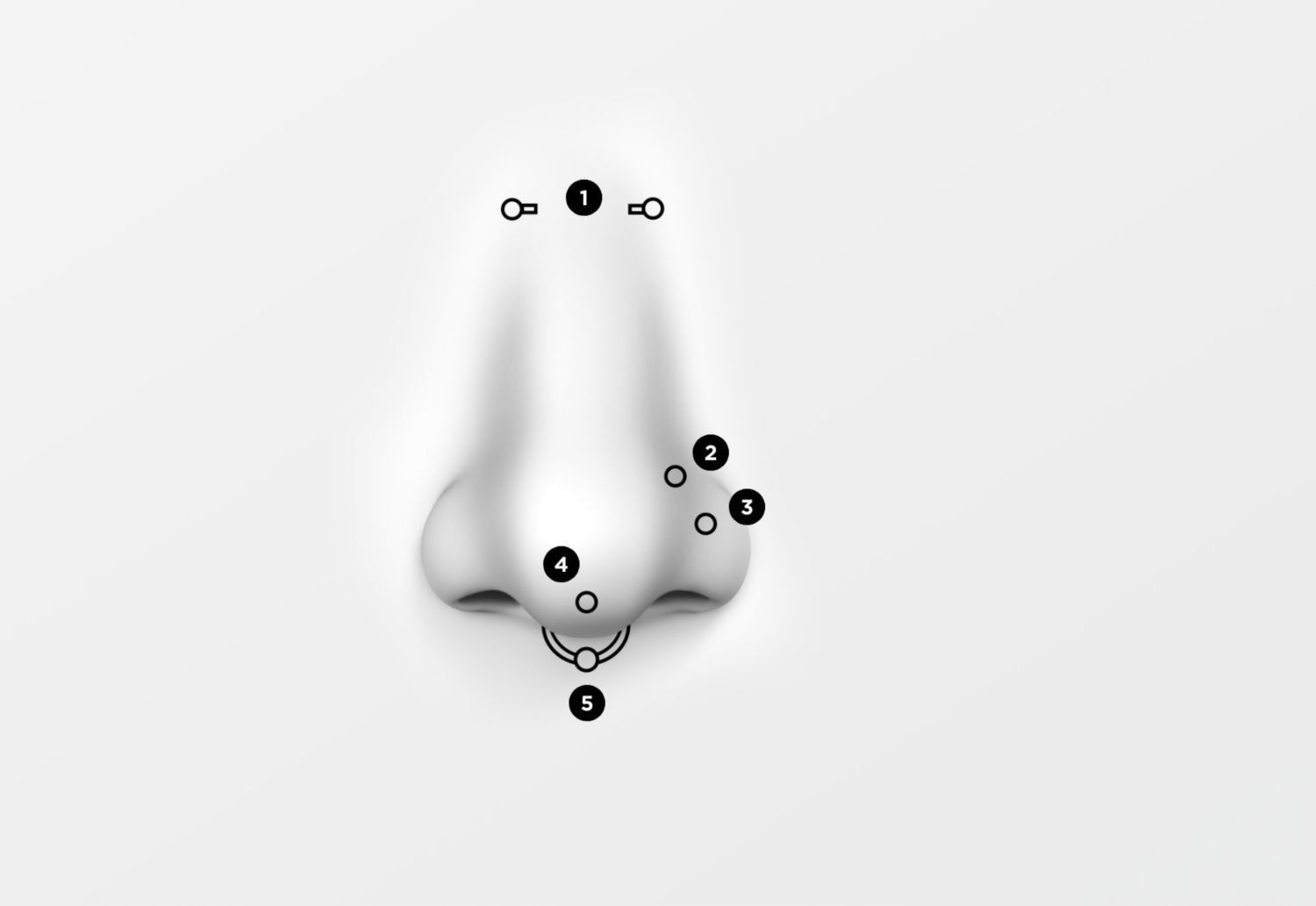
1. Bridge
2. High Nostril
3. Nostril
4. Septril
5. Septum
Watches
Whether used as a fashion accessory or an everyday tool, there are many types of watches to meet your needs. It's important to understand the various watch components before selecting a watch that fits your needs.
Watch Anatomy
Understanding the parts of a watch will help you choose a watch that is right for you and your lifestyle.
Watch Movements
The movement is a fascinating aspect of a watch and what makes it tick. Offered in a range of technologies, the movement includes all of the inner mechanisms that power the watch and its features.
| TYPE | Description |
|---|---|
| Automatic | Commonly use a mainspring, which is wound automatically by the wearer’s movement. |
| Quartz | Watch movements that are powered by an oscillator regulated by a quartz crystal to keep time precisely. |
| Atomic | Represent the latest in accuracy and can synchronize themselves with time scales sent via shortwave radio signals. |
| Chronograph | A watch movement that measures elapsed time in hours, seconds and minutes in addition to its regular timekeeping function. |
Case Sizing
The size of a watch case can vary greatly among models, ranging from as small as 27 mm to as large as 47 mm. Smaller faces are often more delicate and lightweight. Larger faces typically feature wider straps with more stability and comfort. Ultimately, the choice depends on personal preference and lifestyle habits.
VIEW SIZING GUIDE
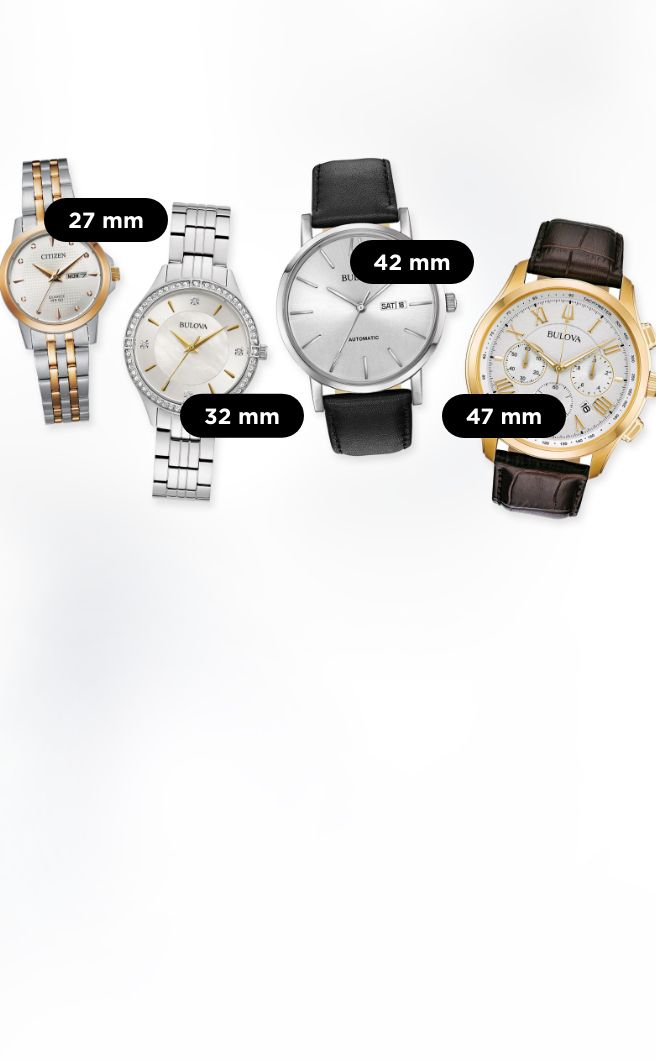
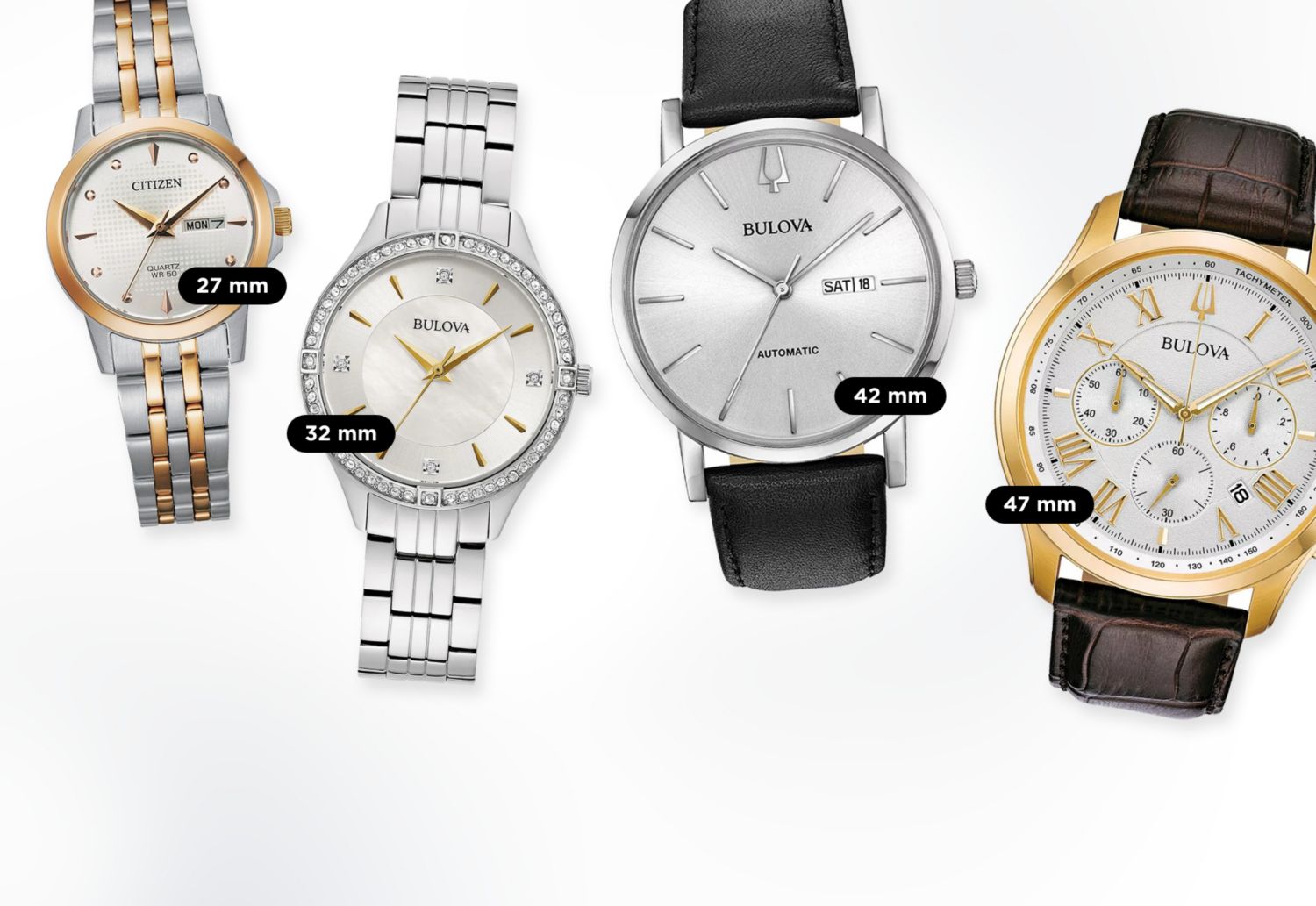
Size May Vary
The diameter of a men's watch case usually starts at 35 mm. Women's case sizes typically start at 27 mm.
VIEW SIZING GUIDE
